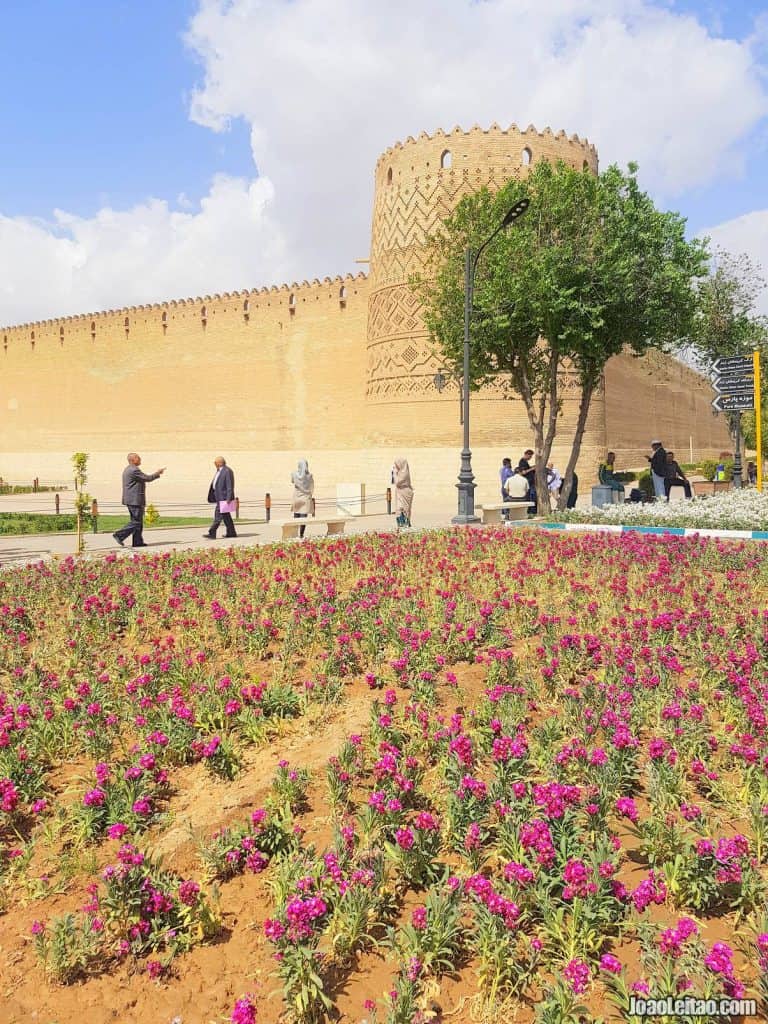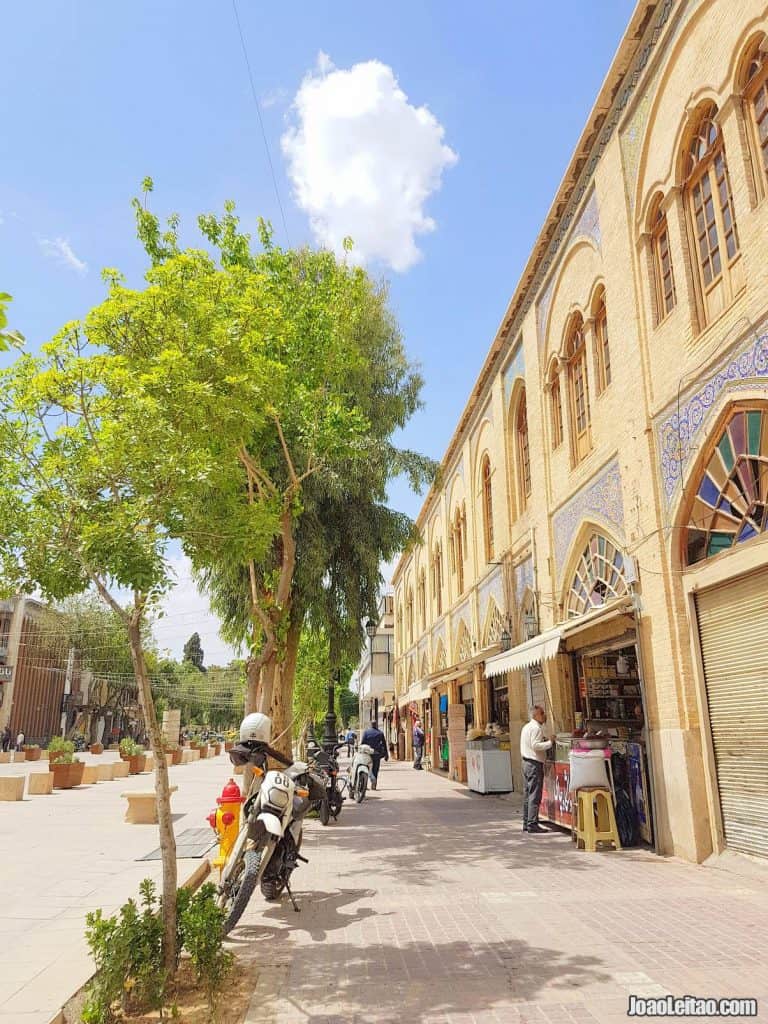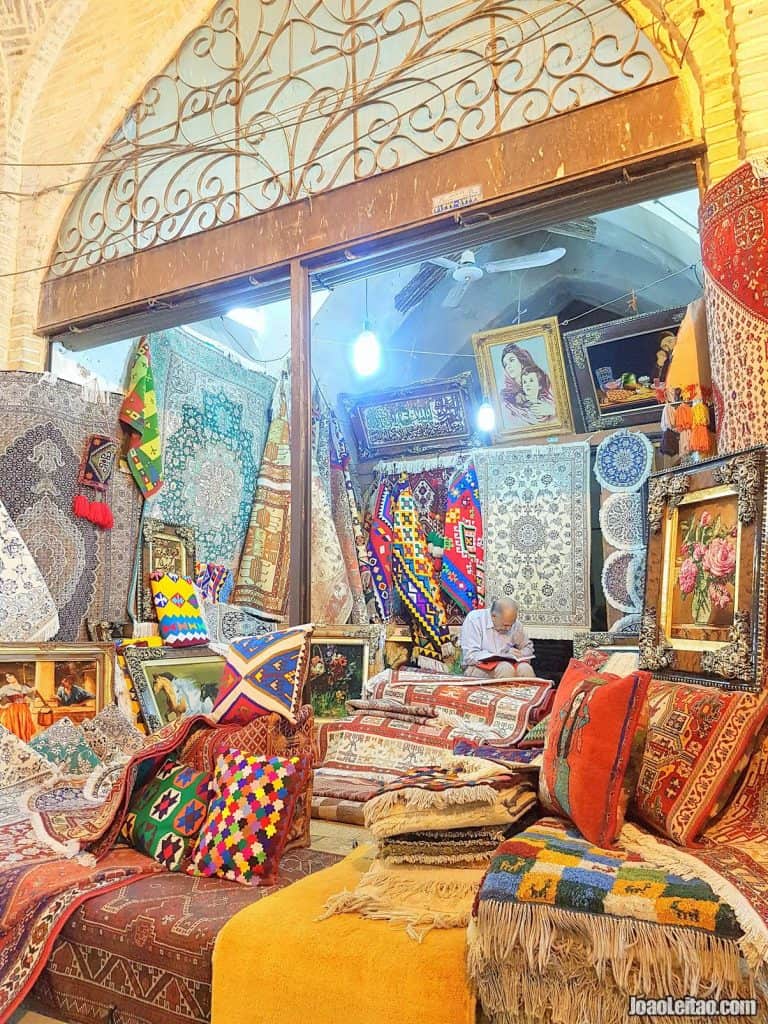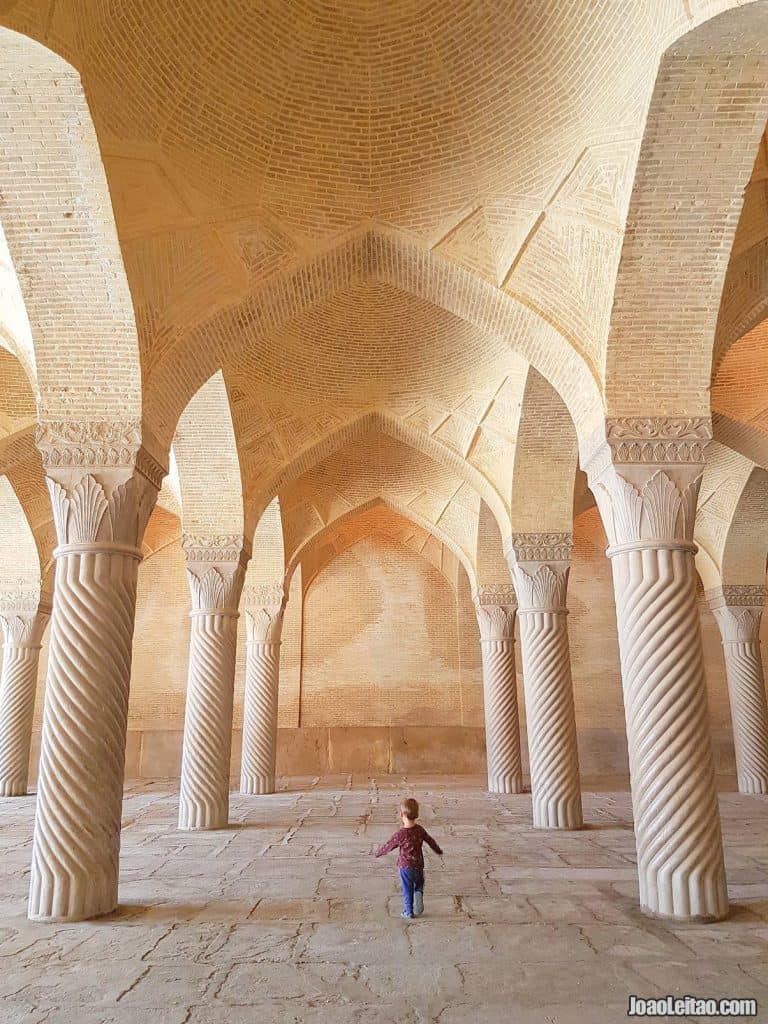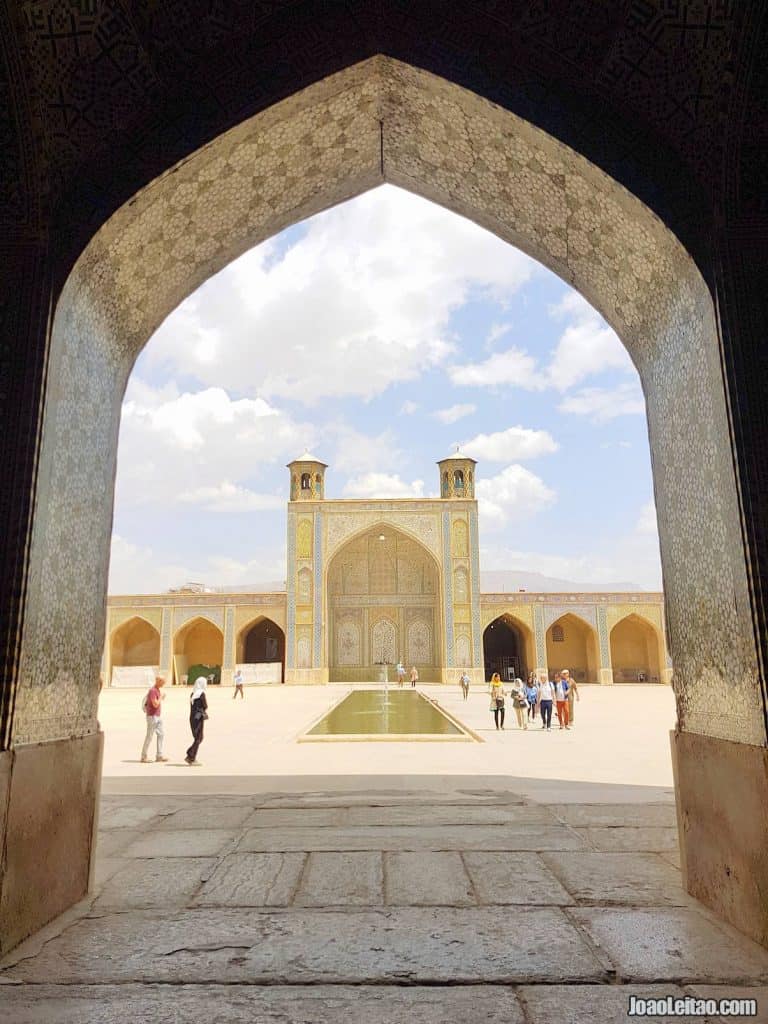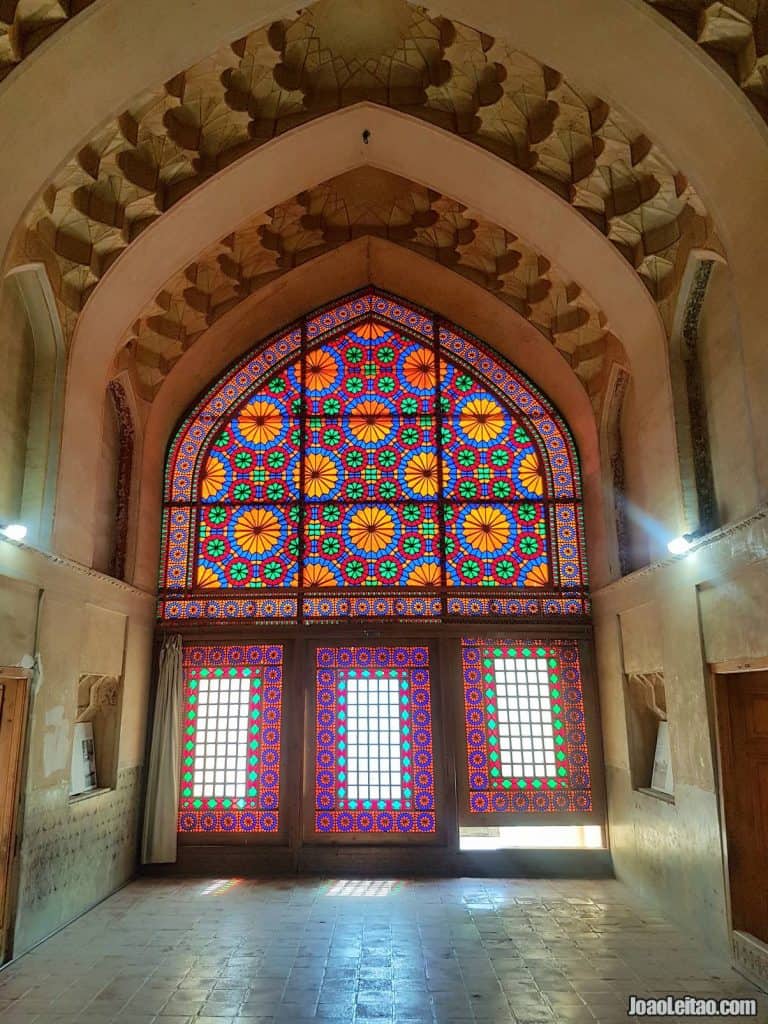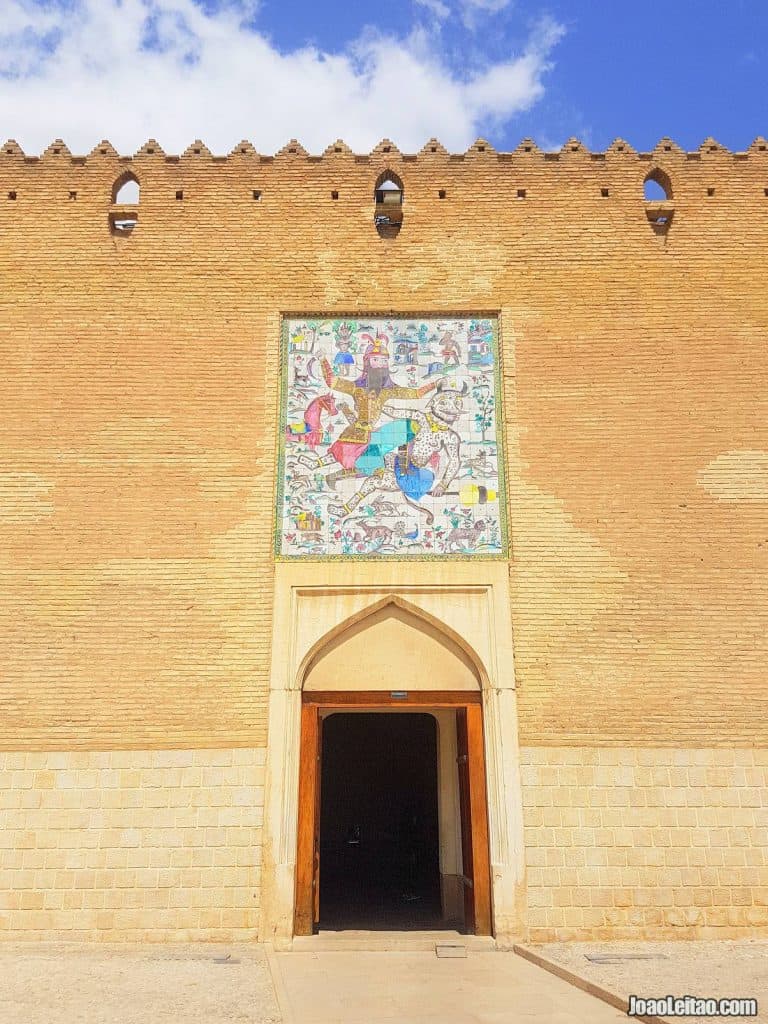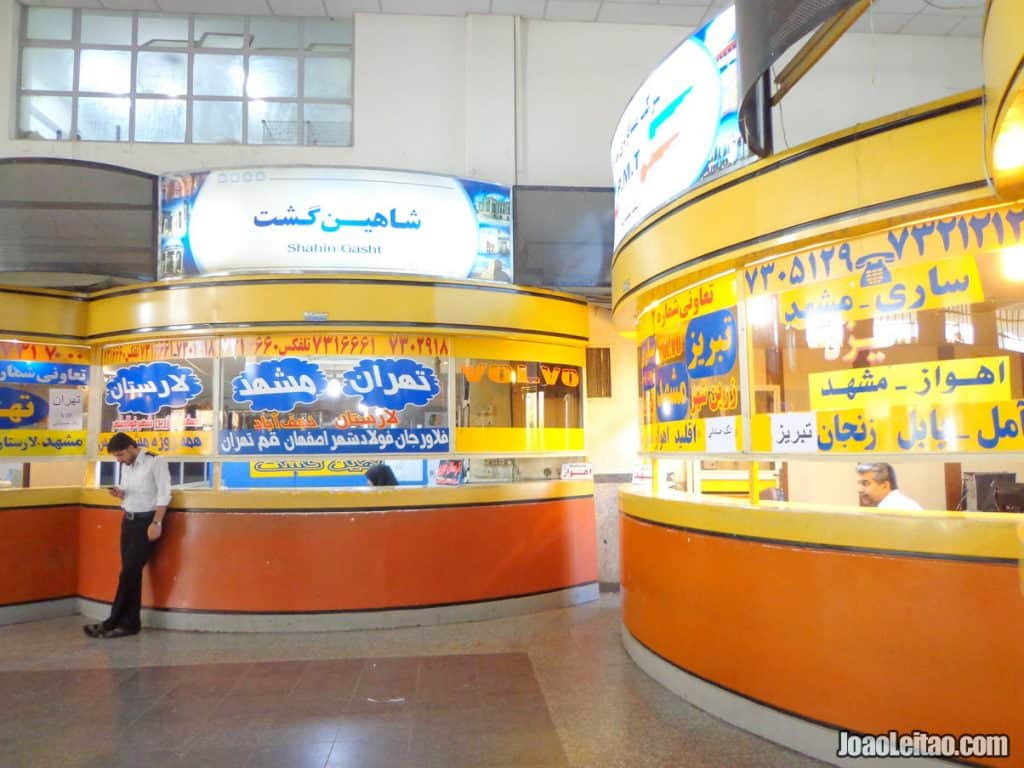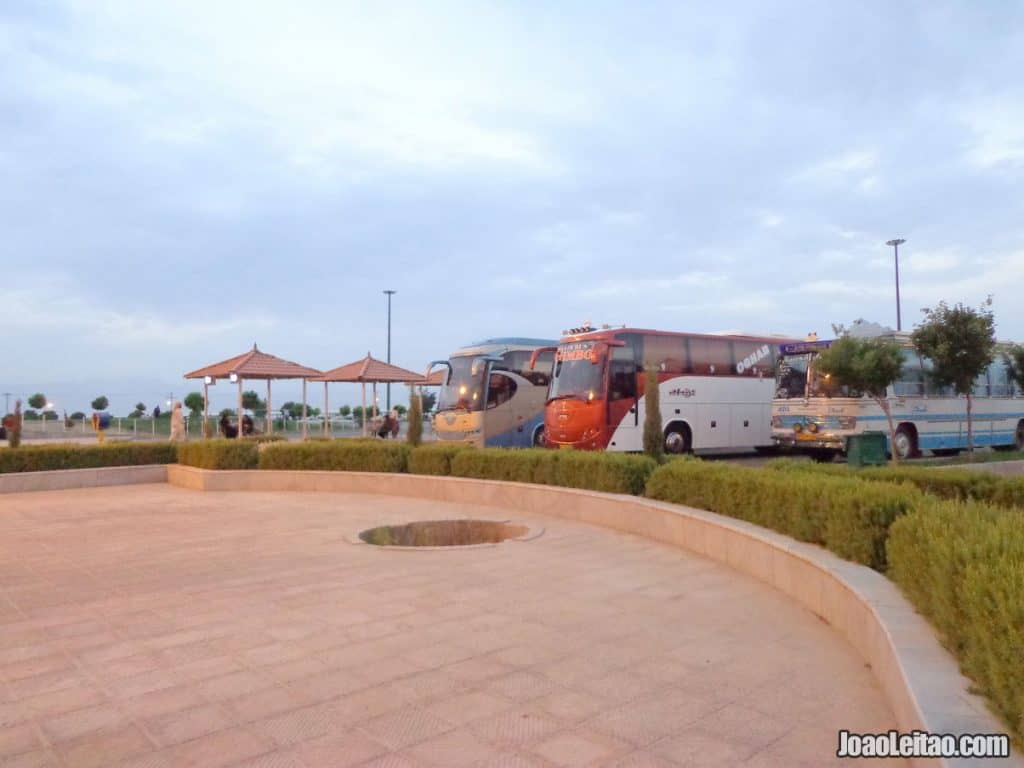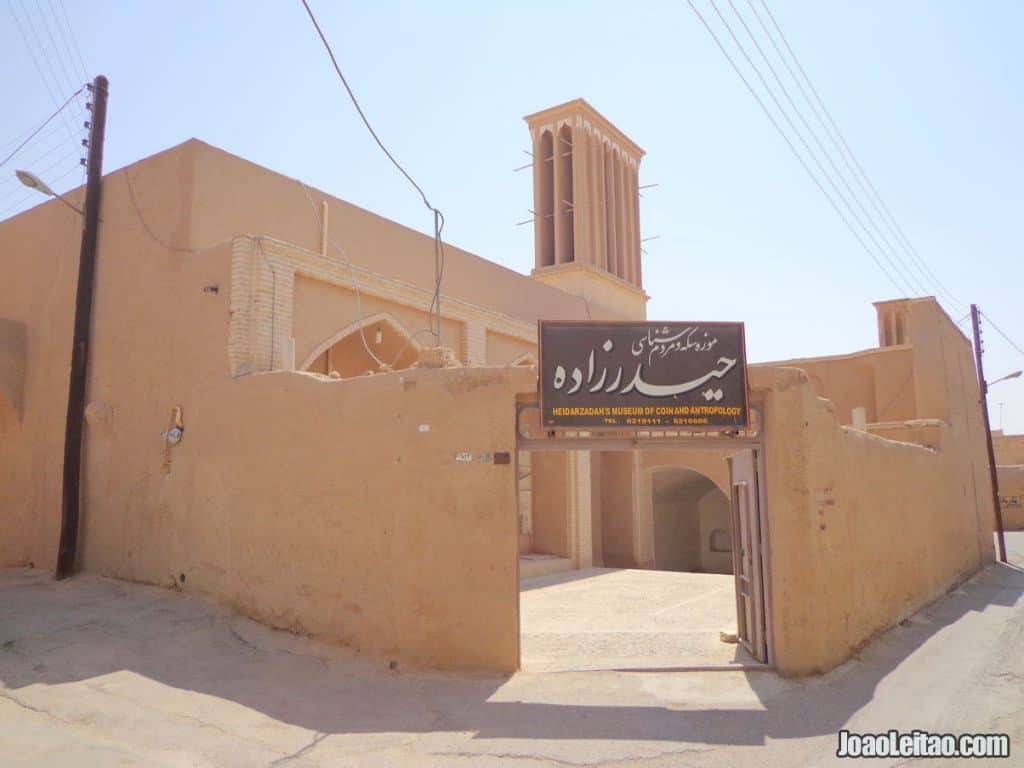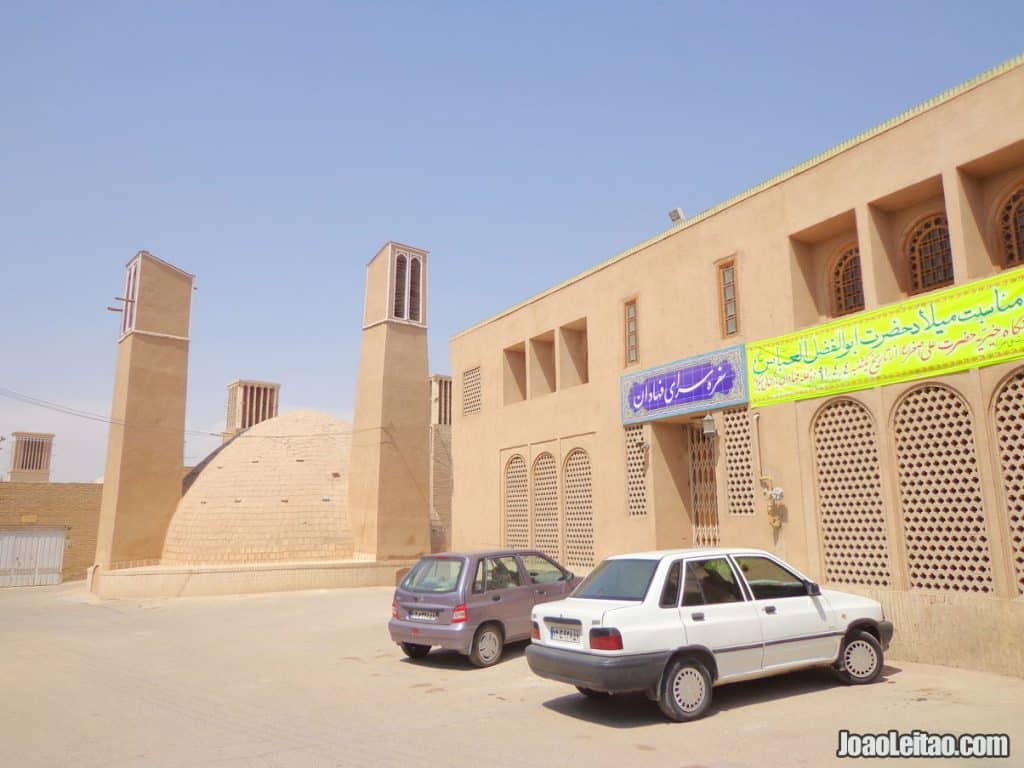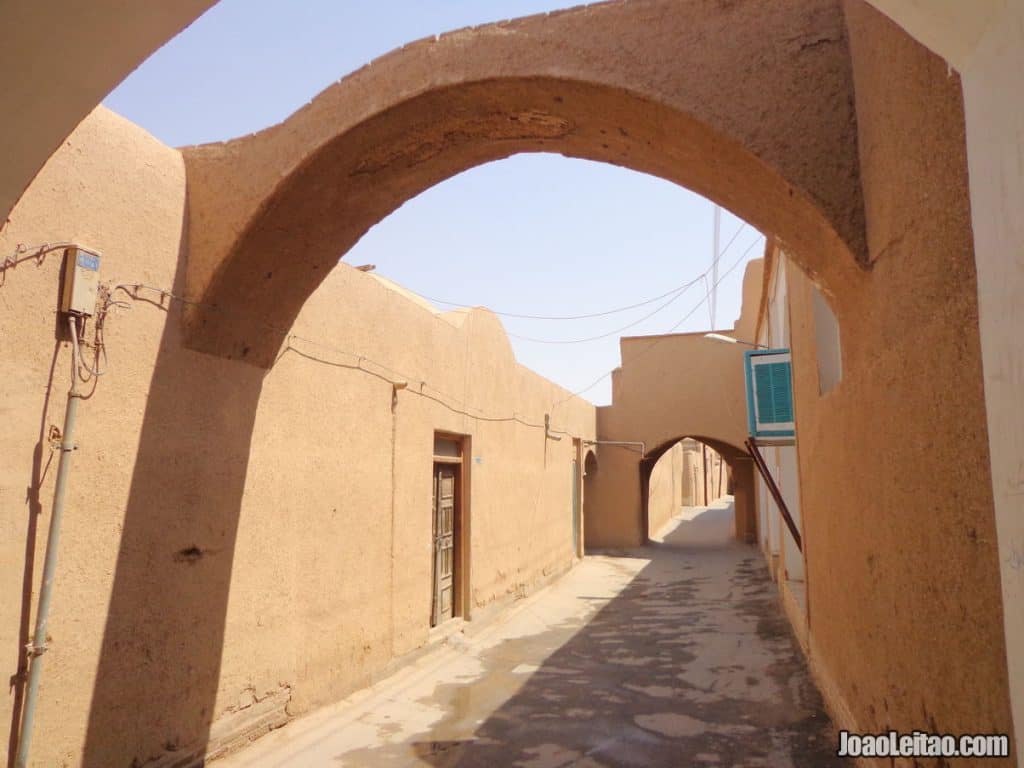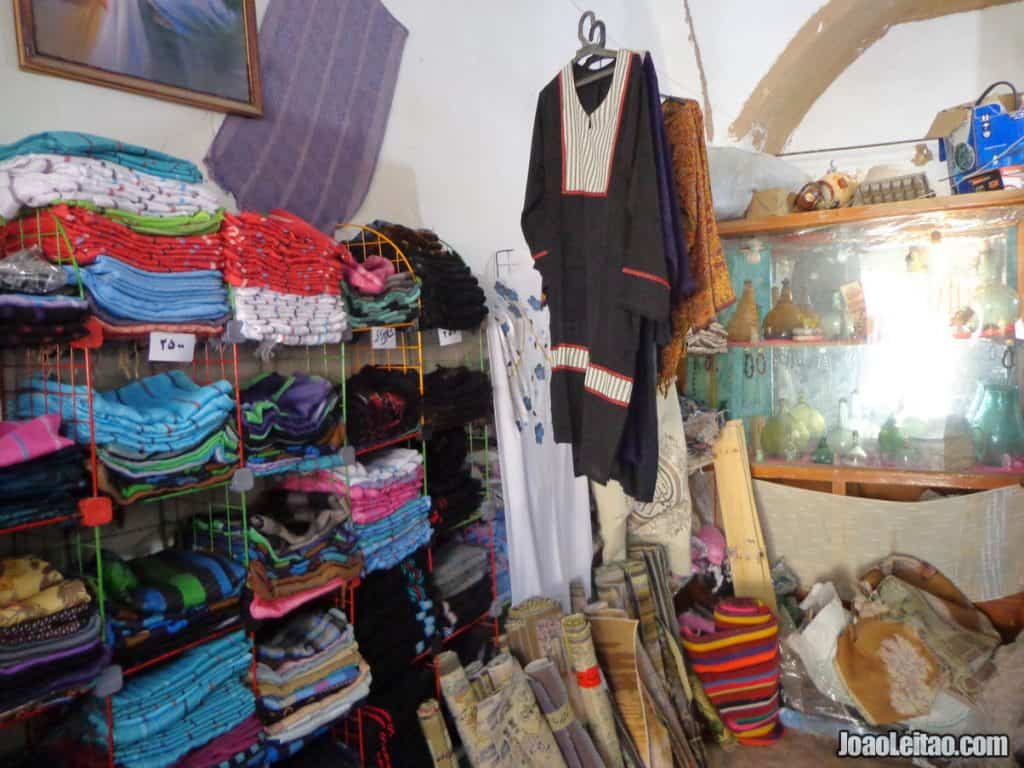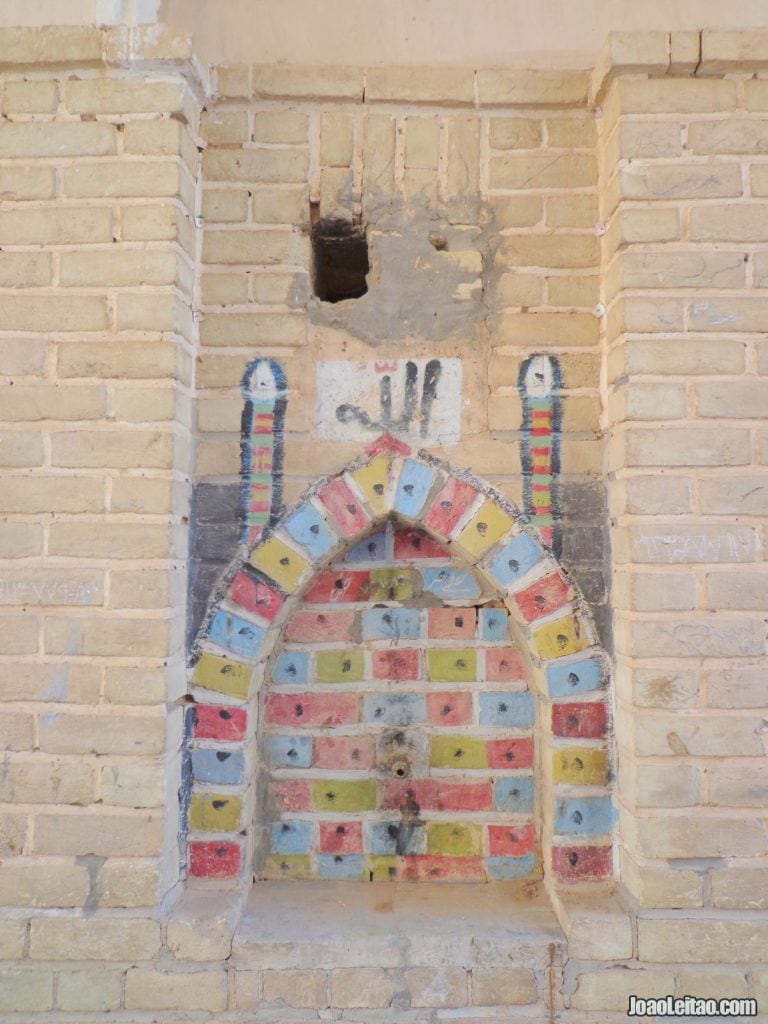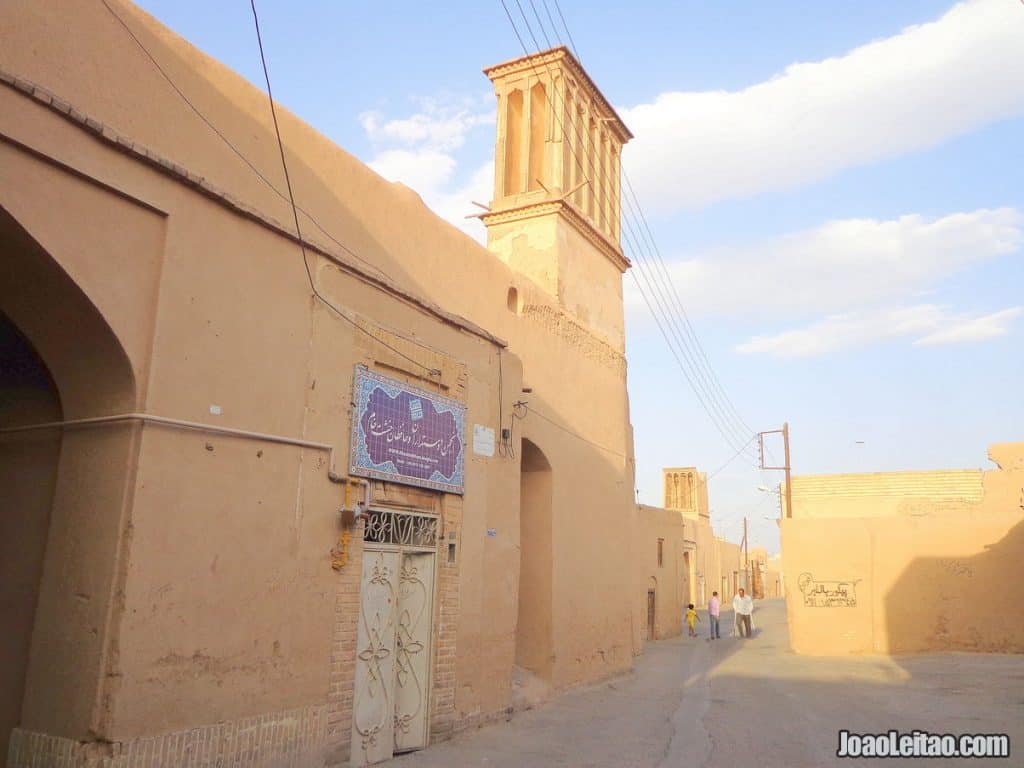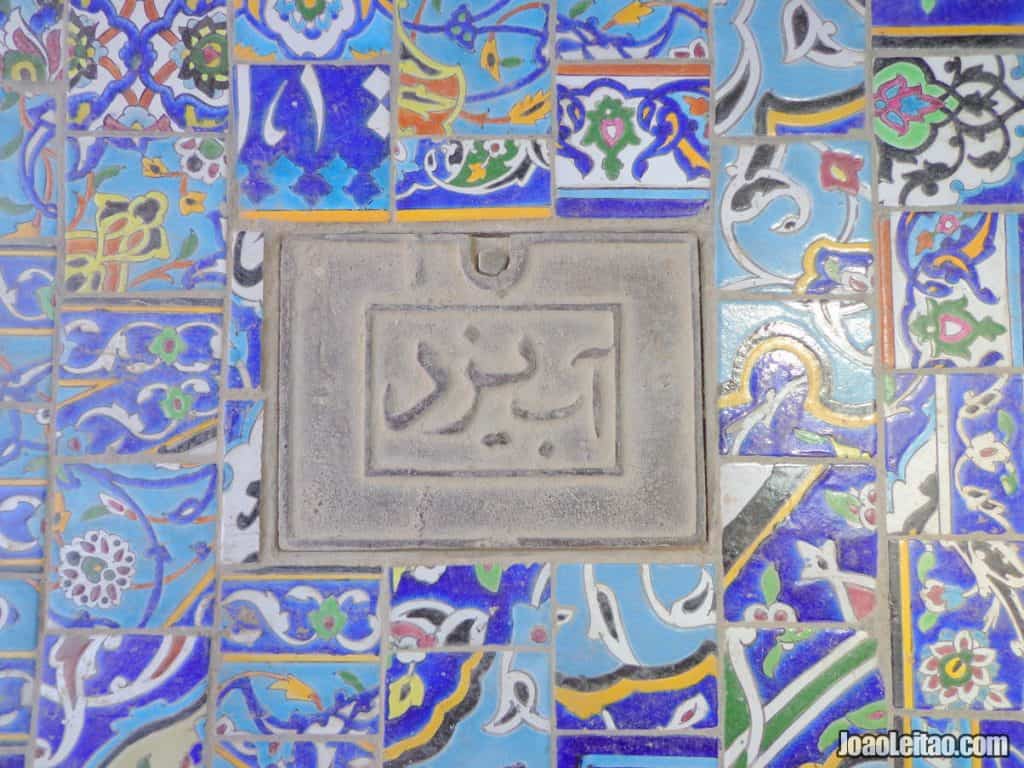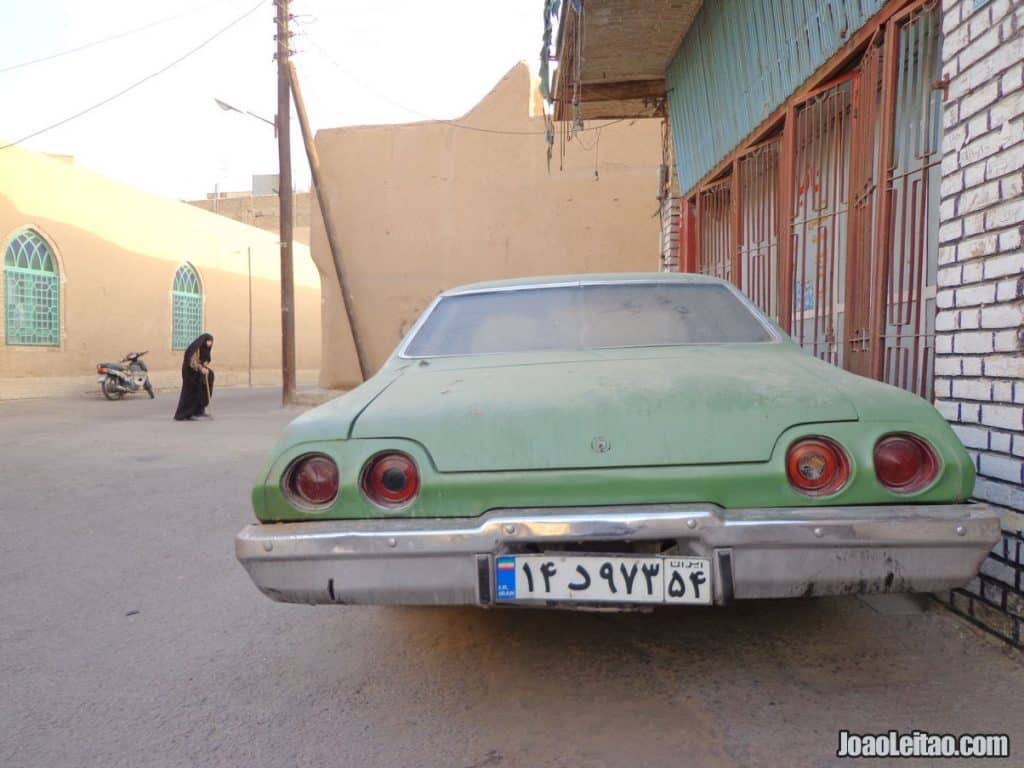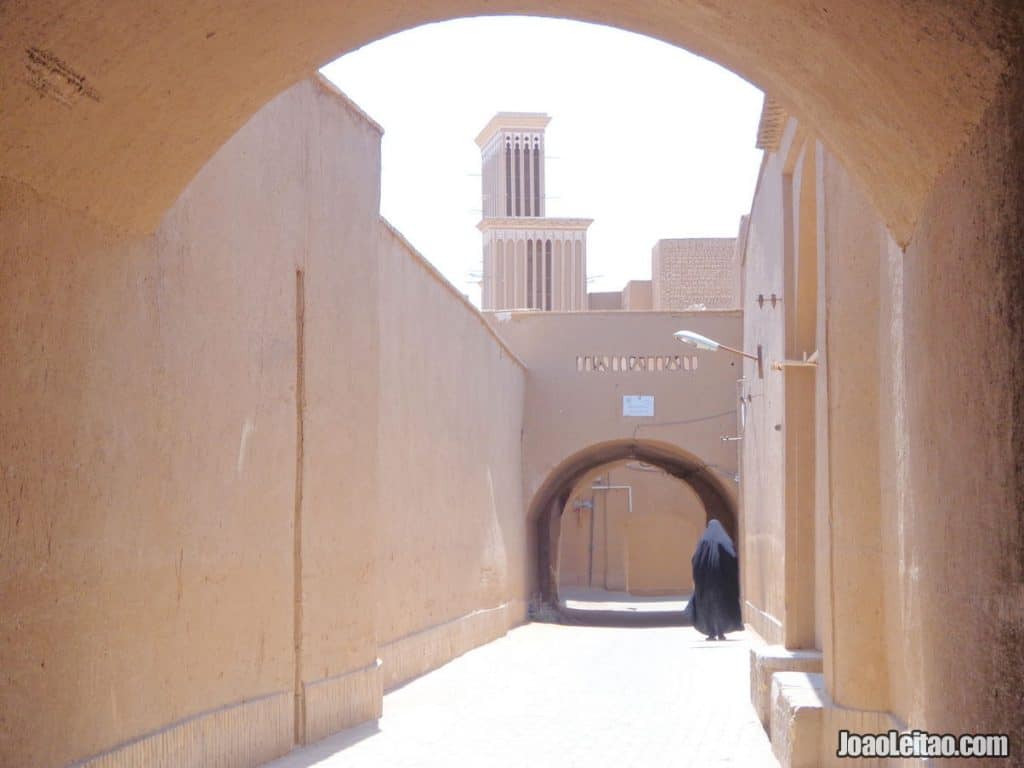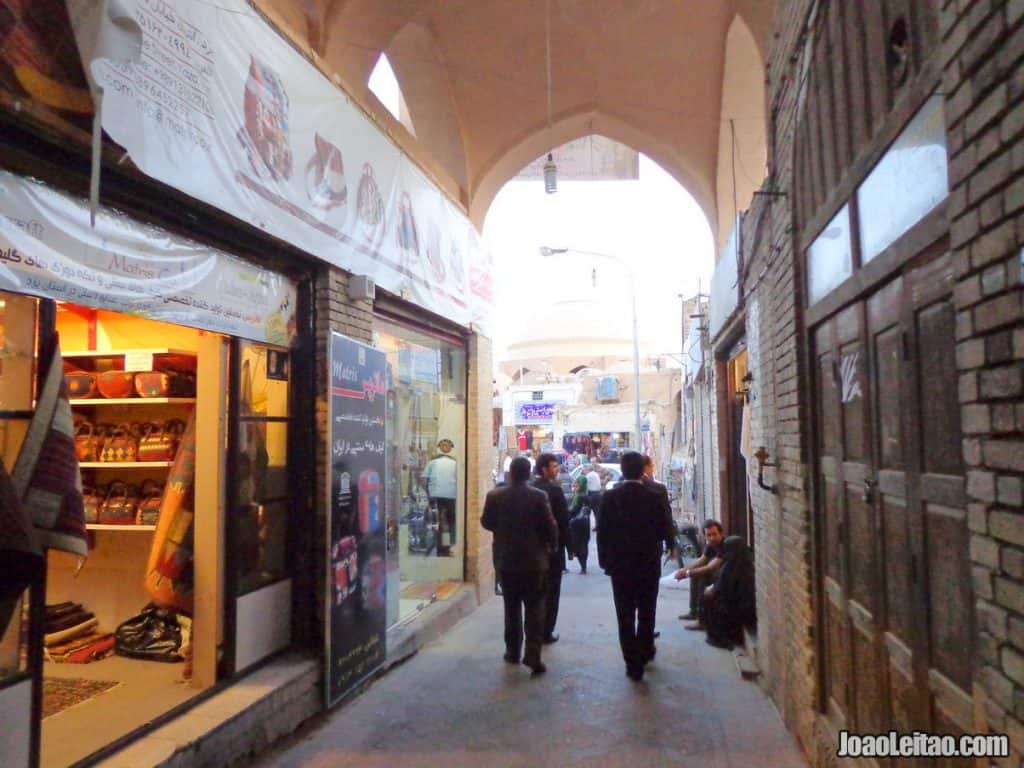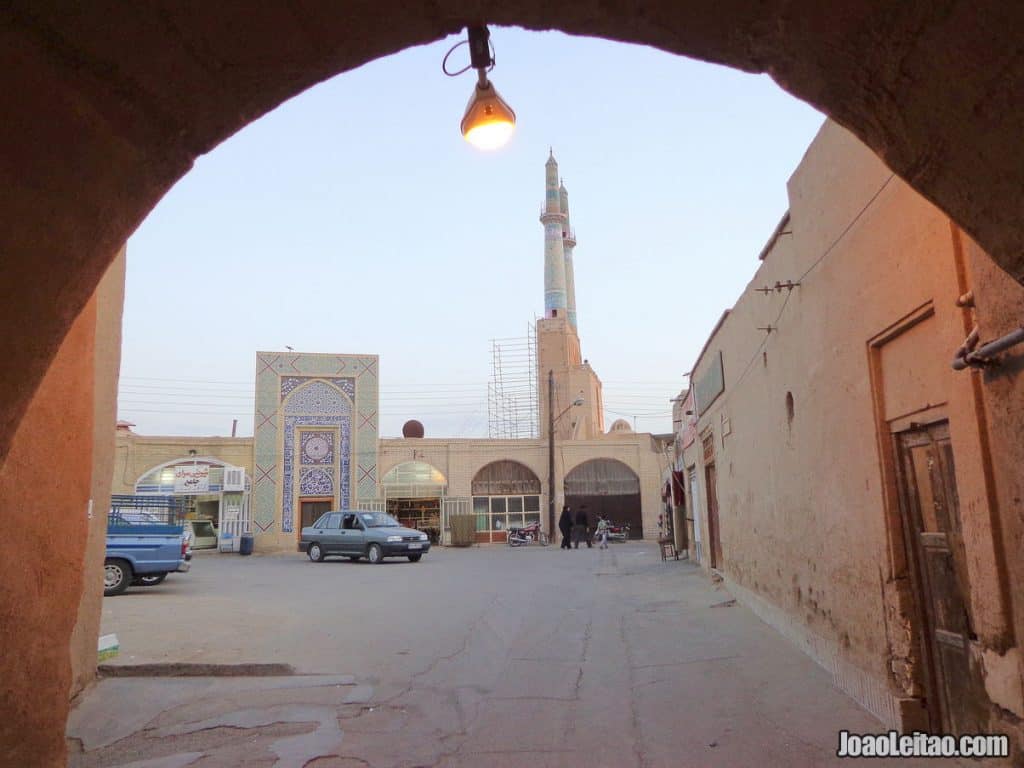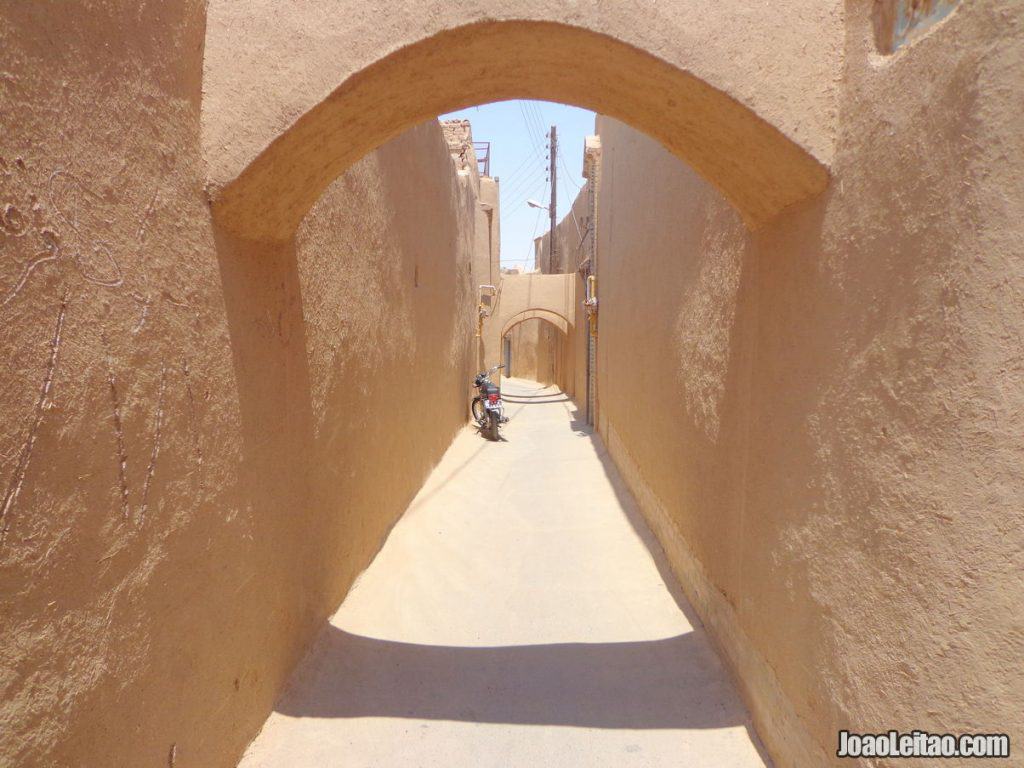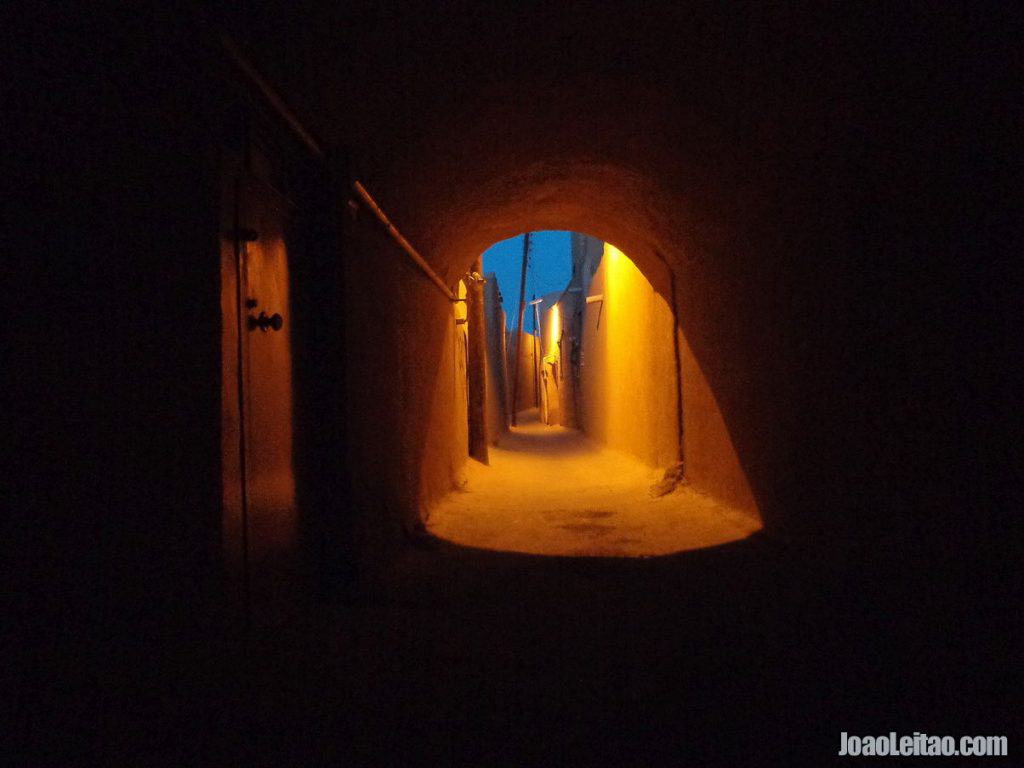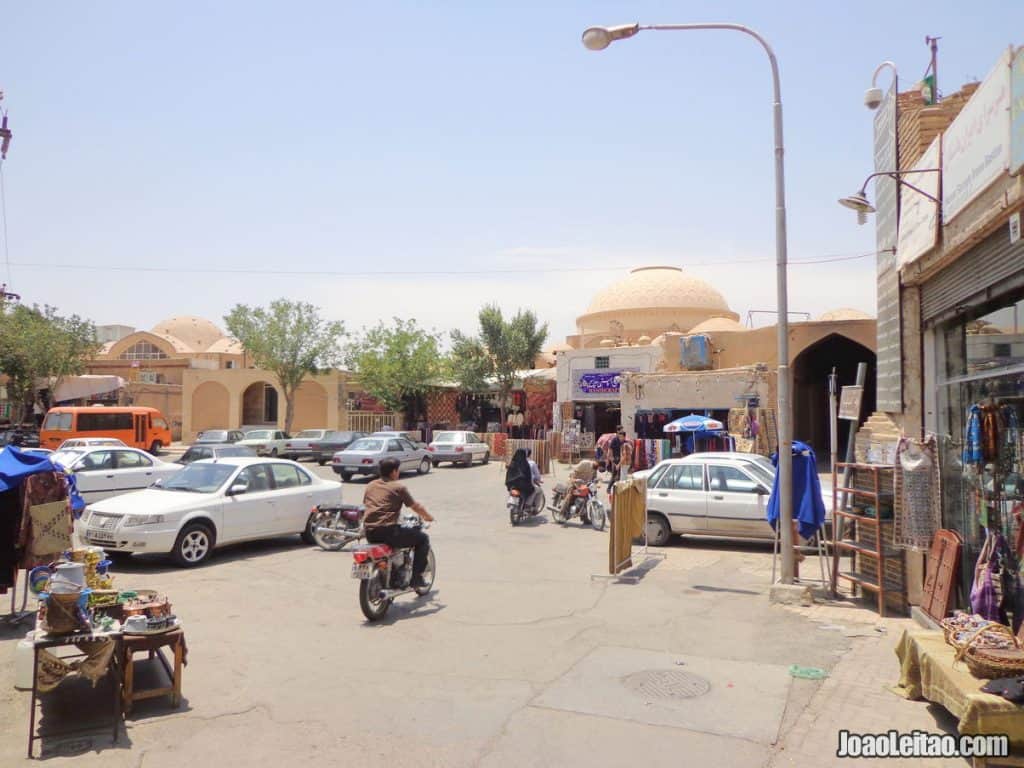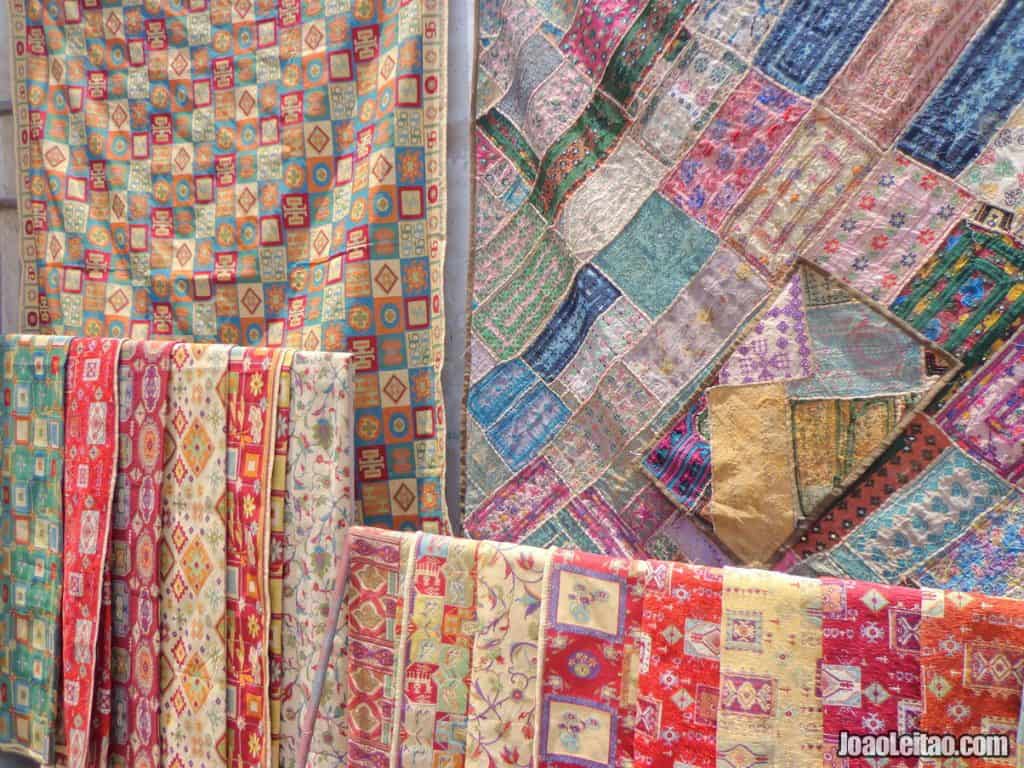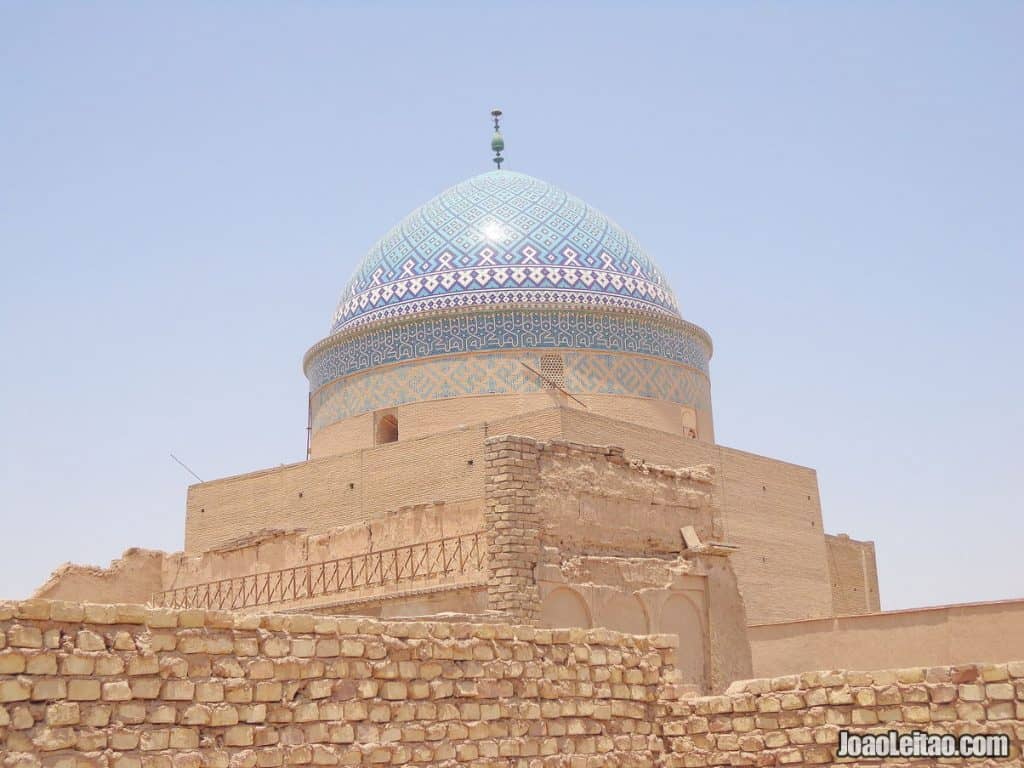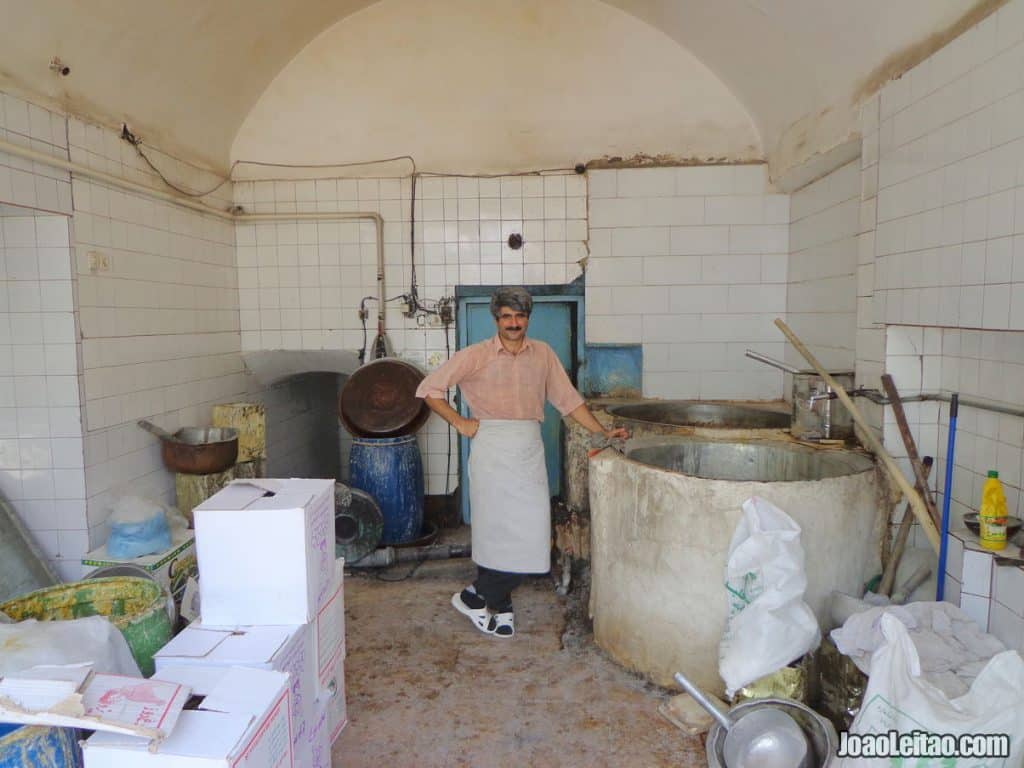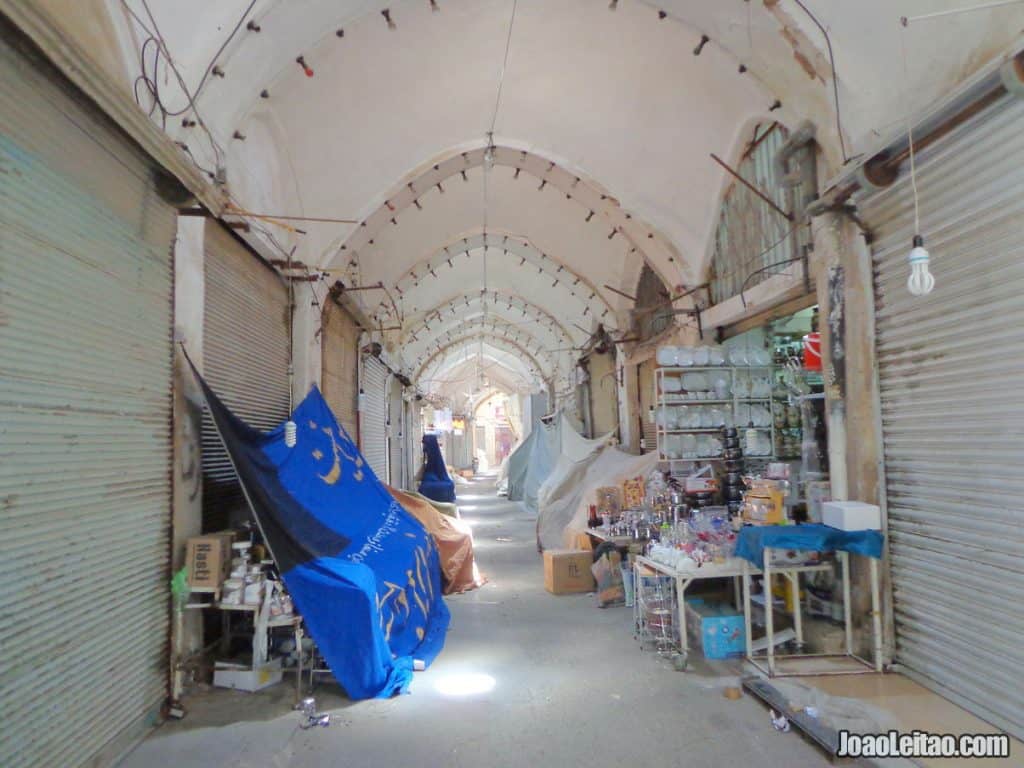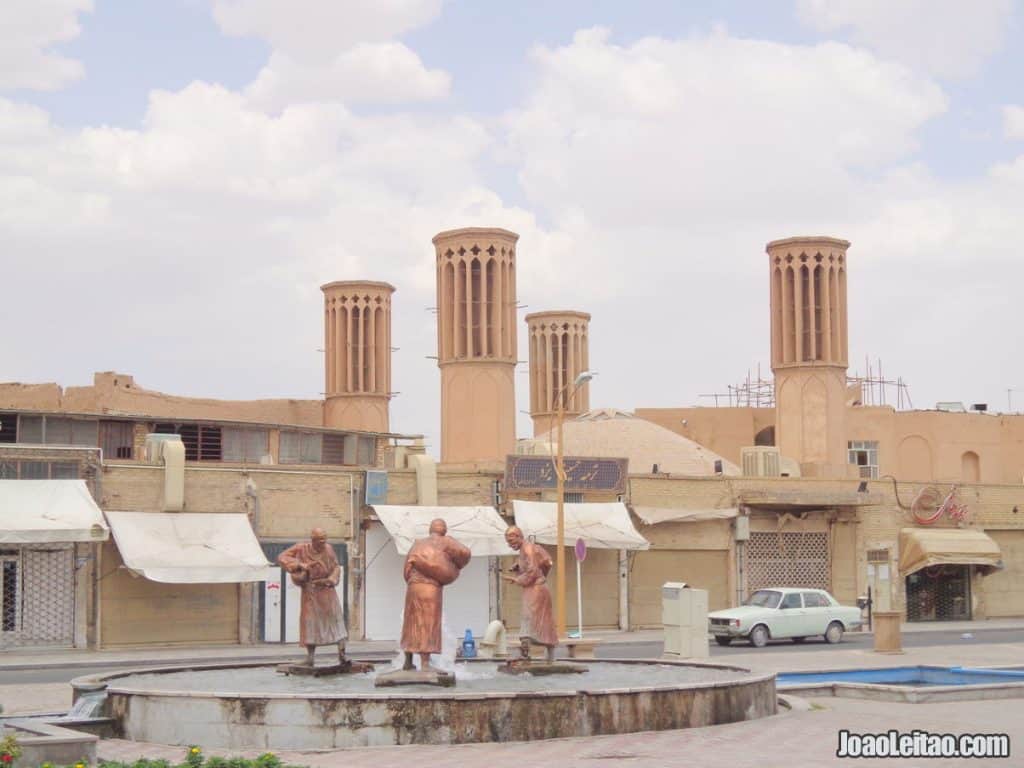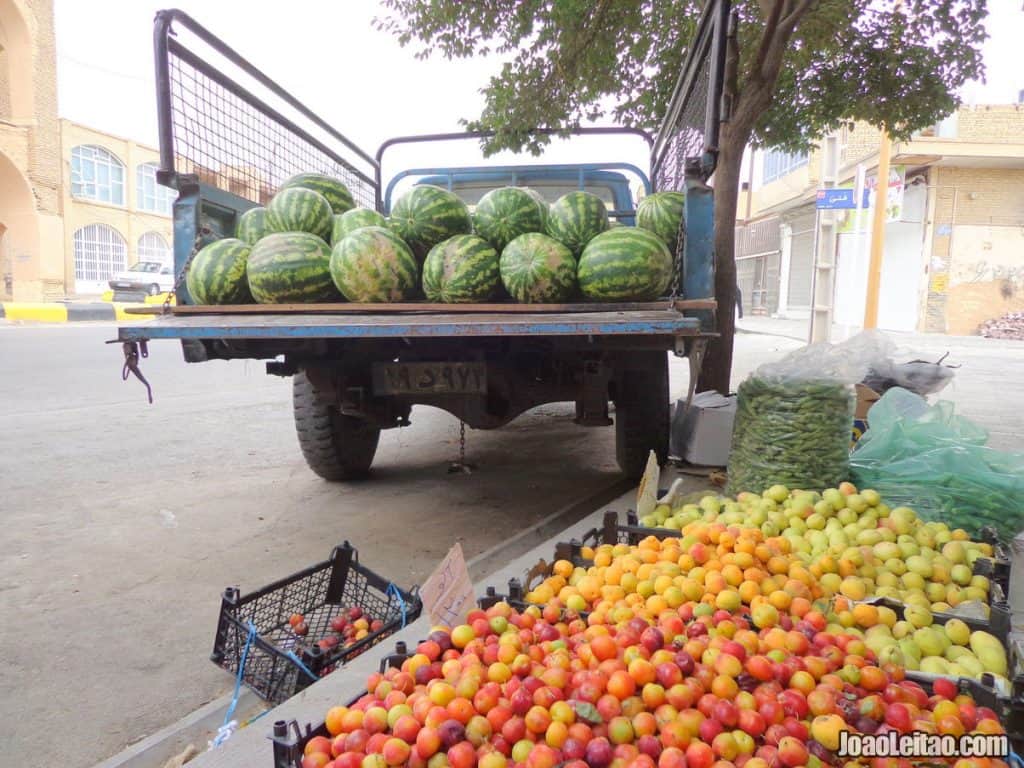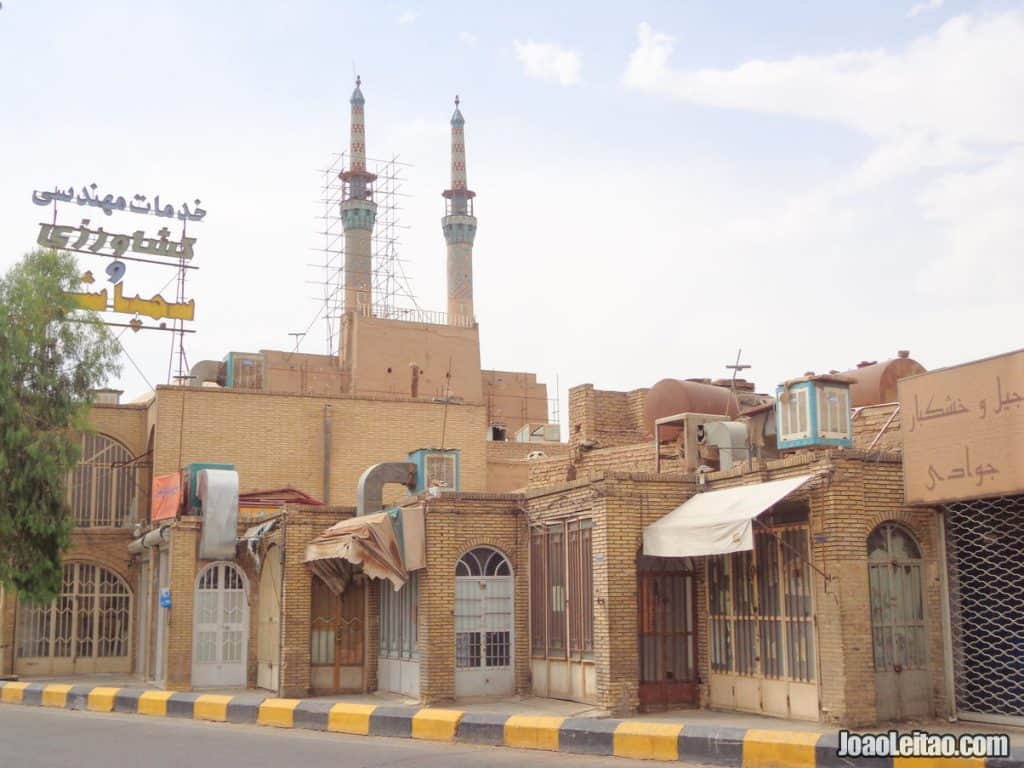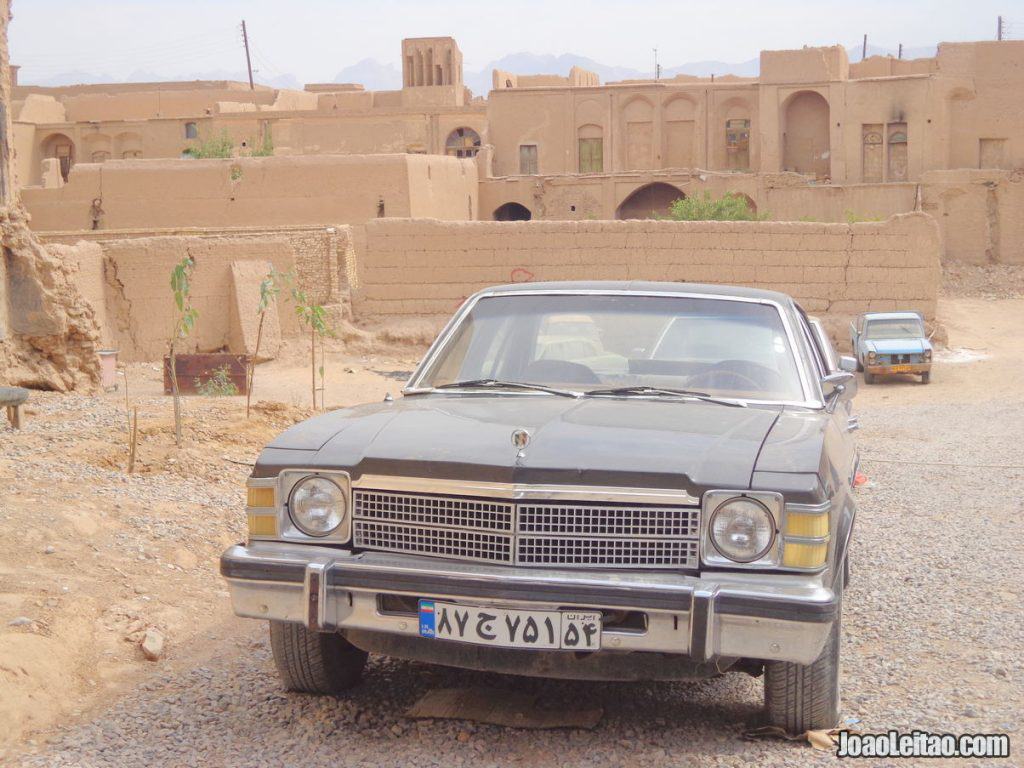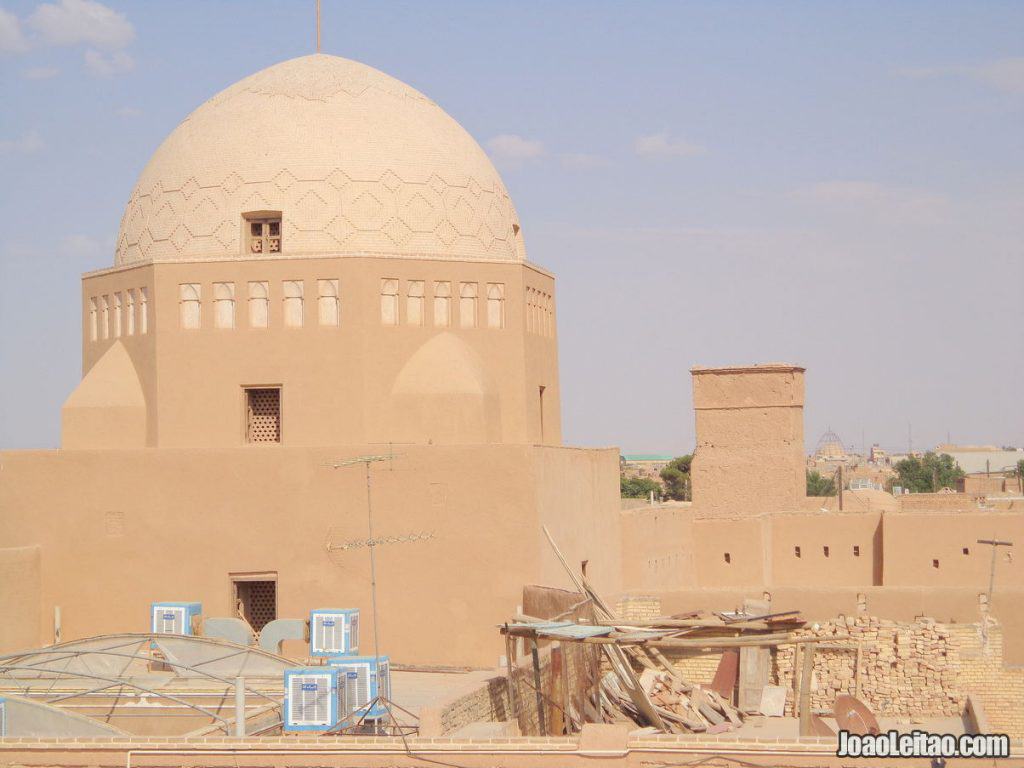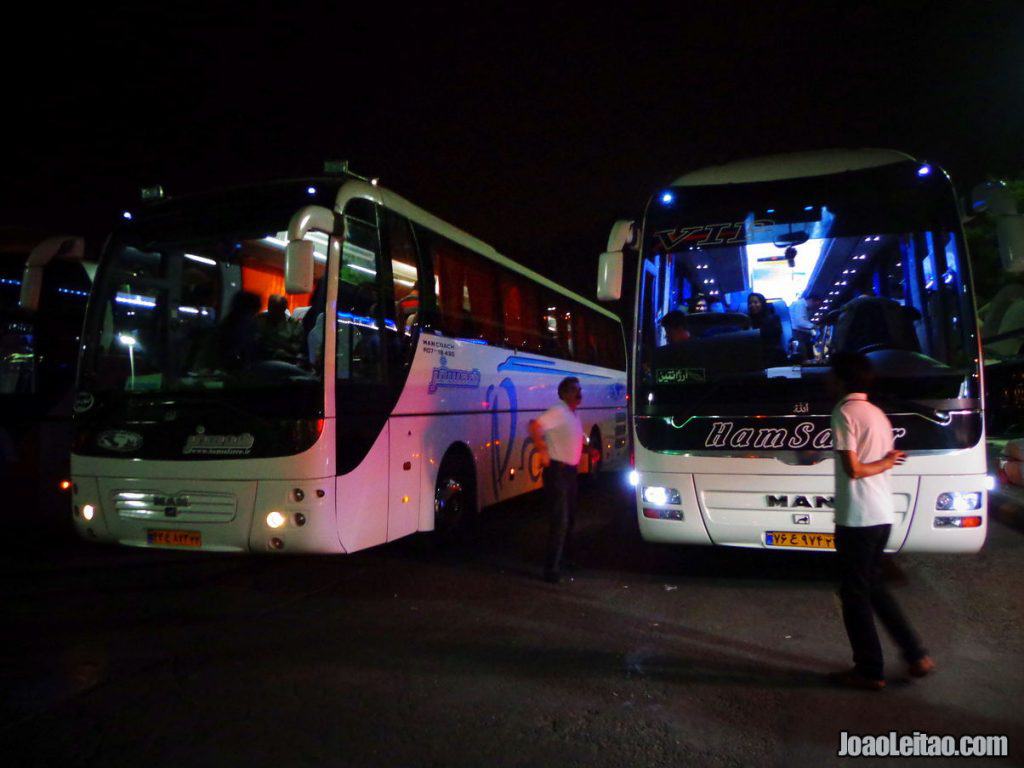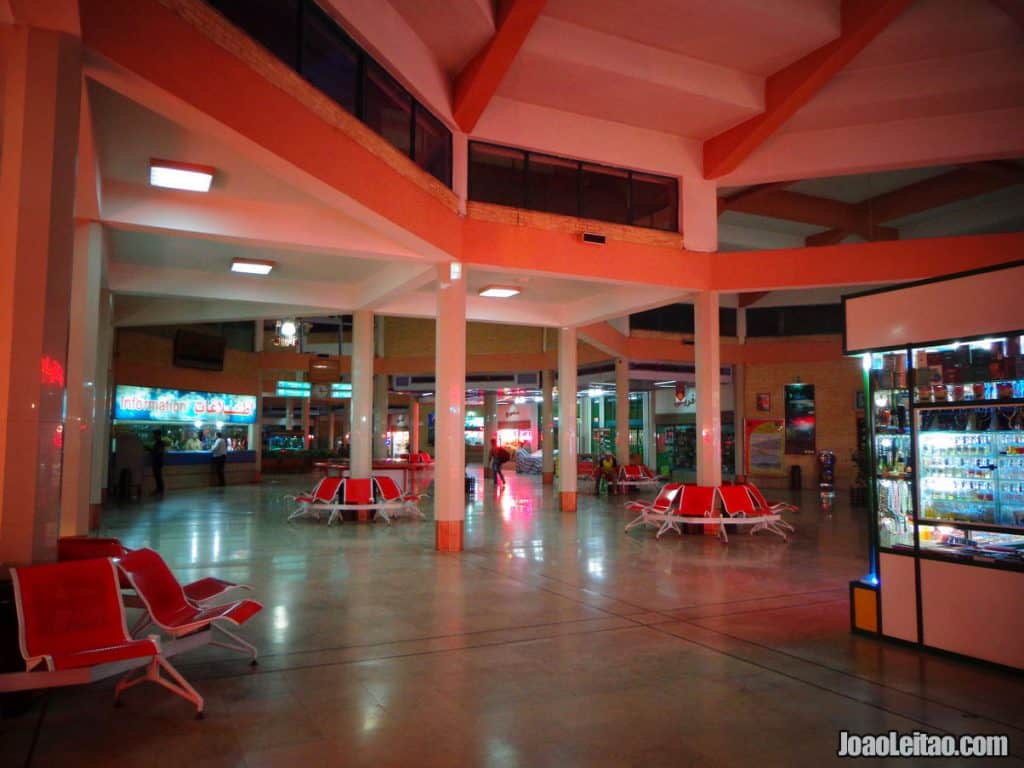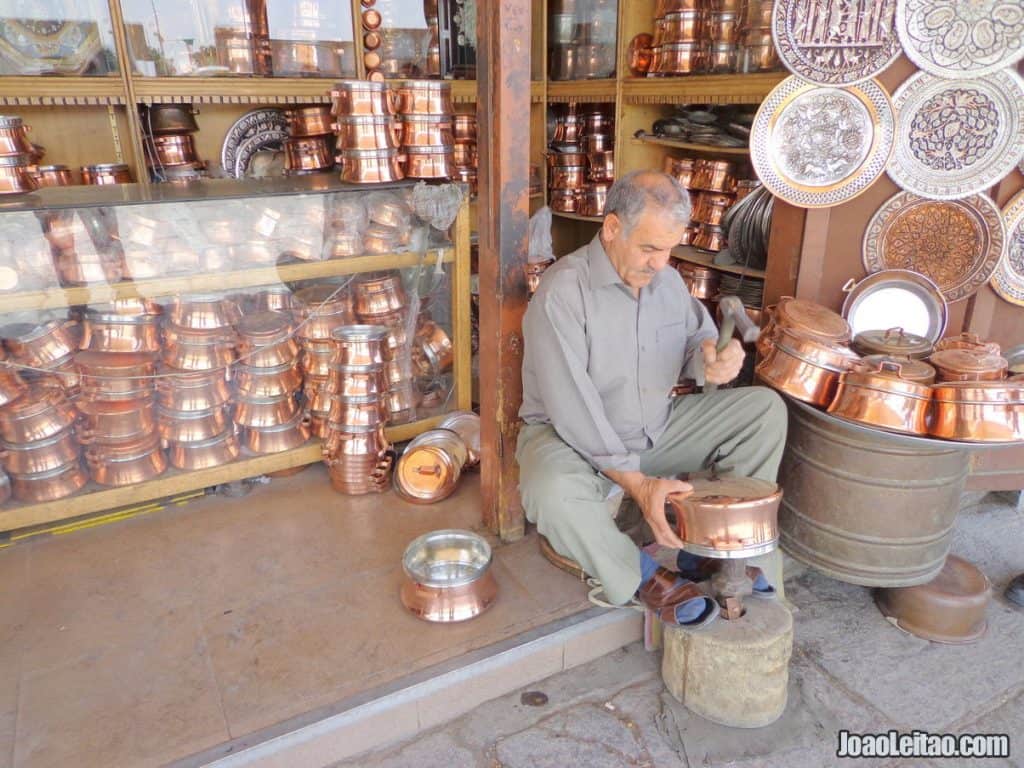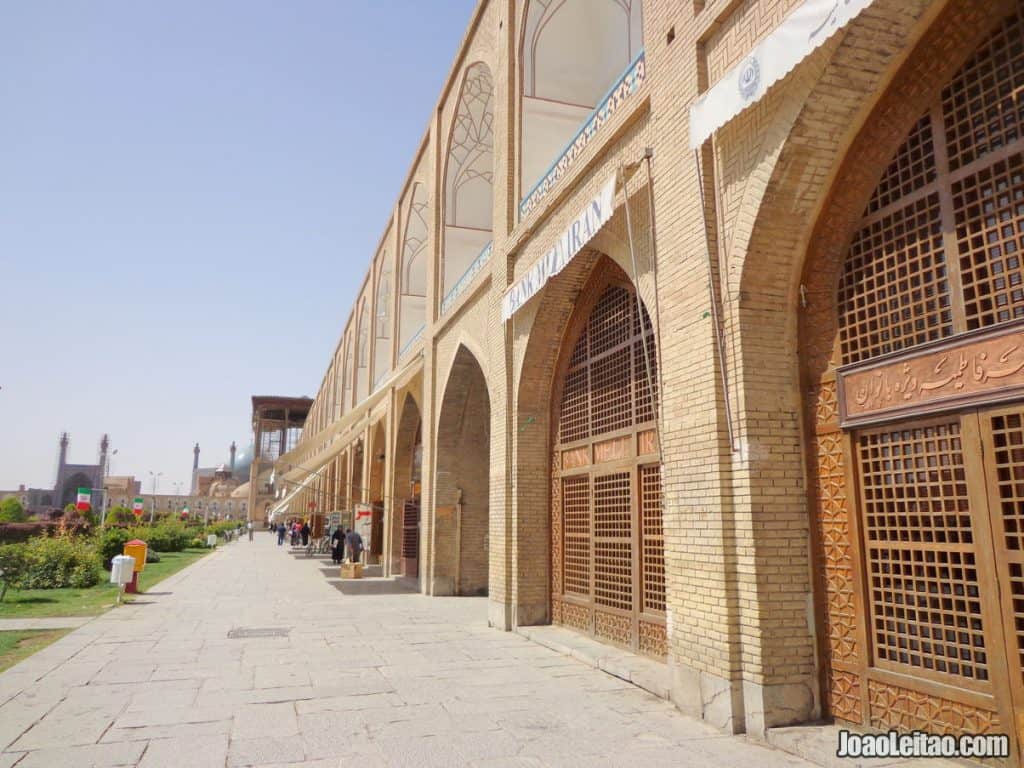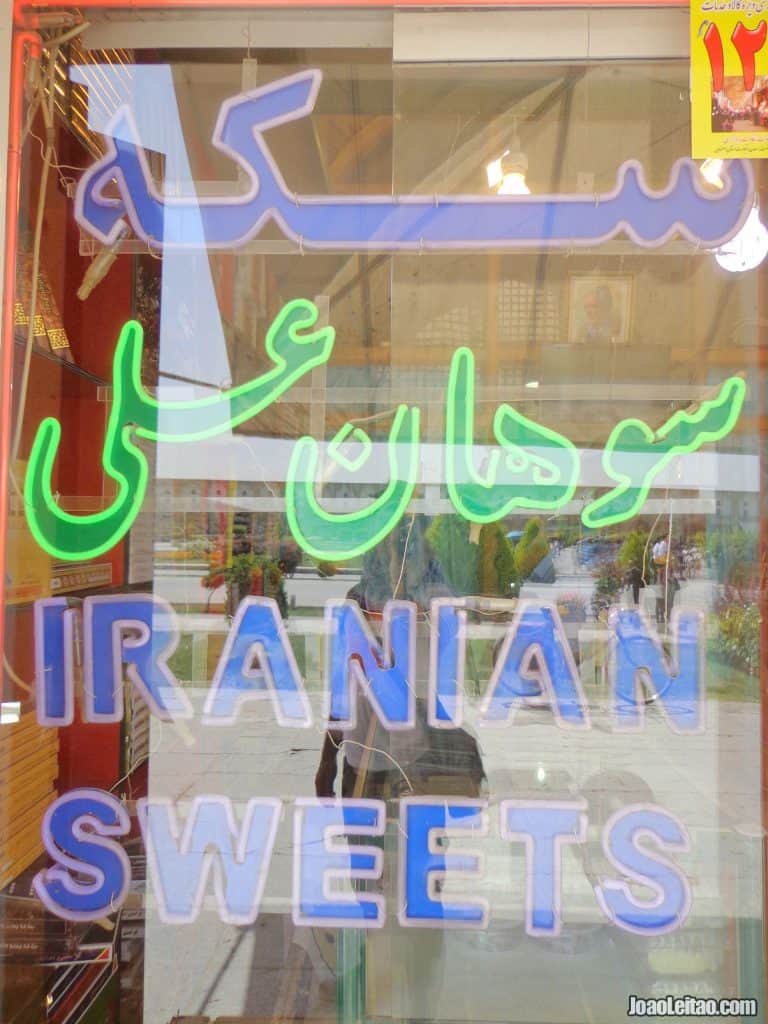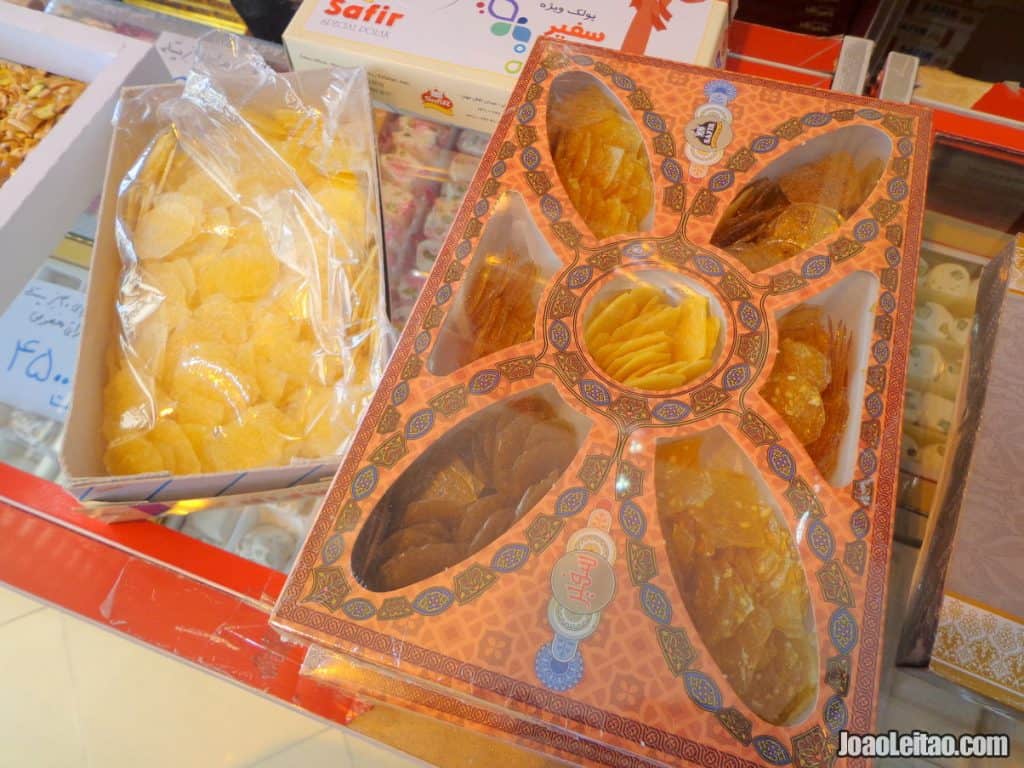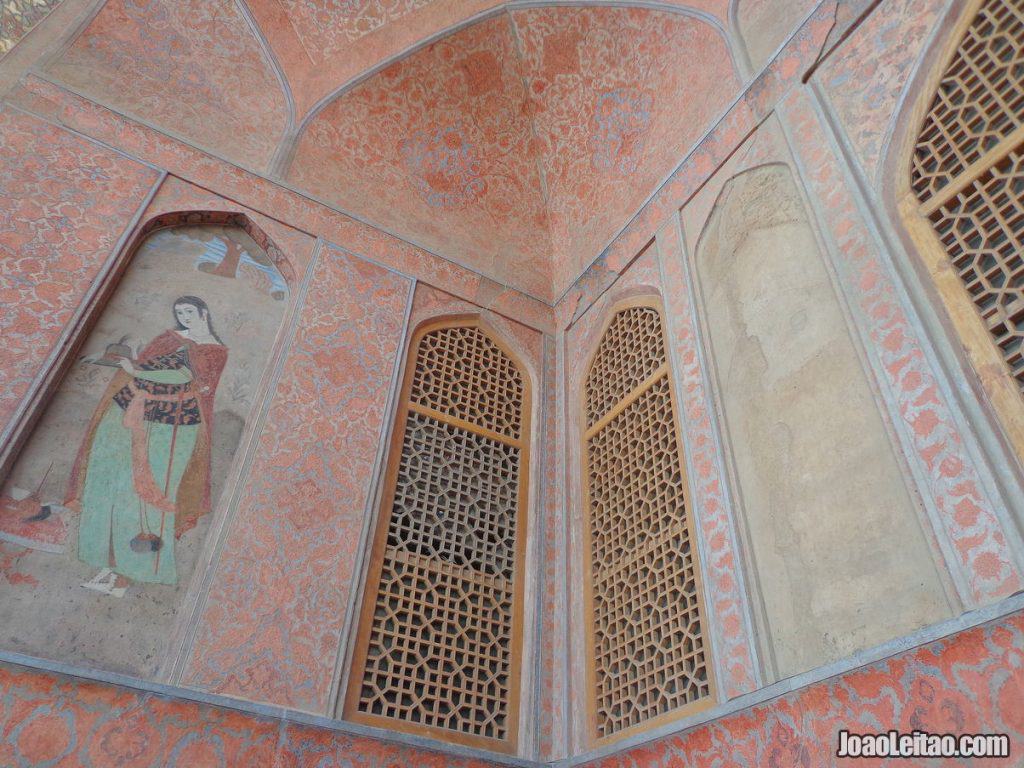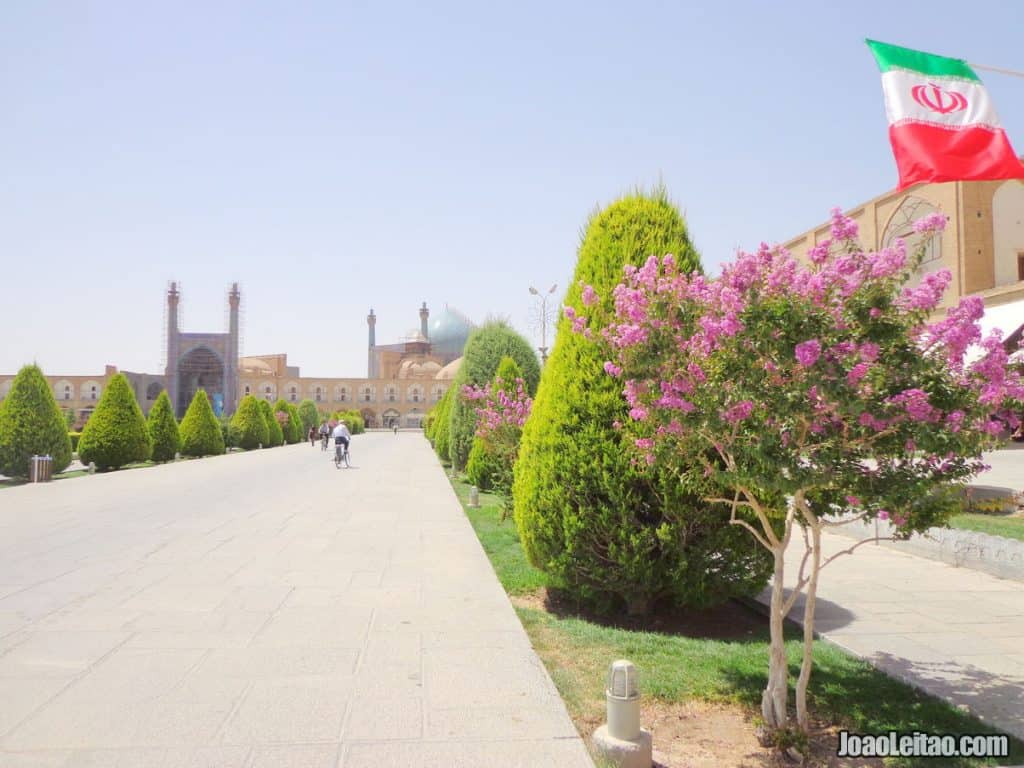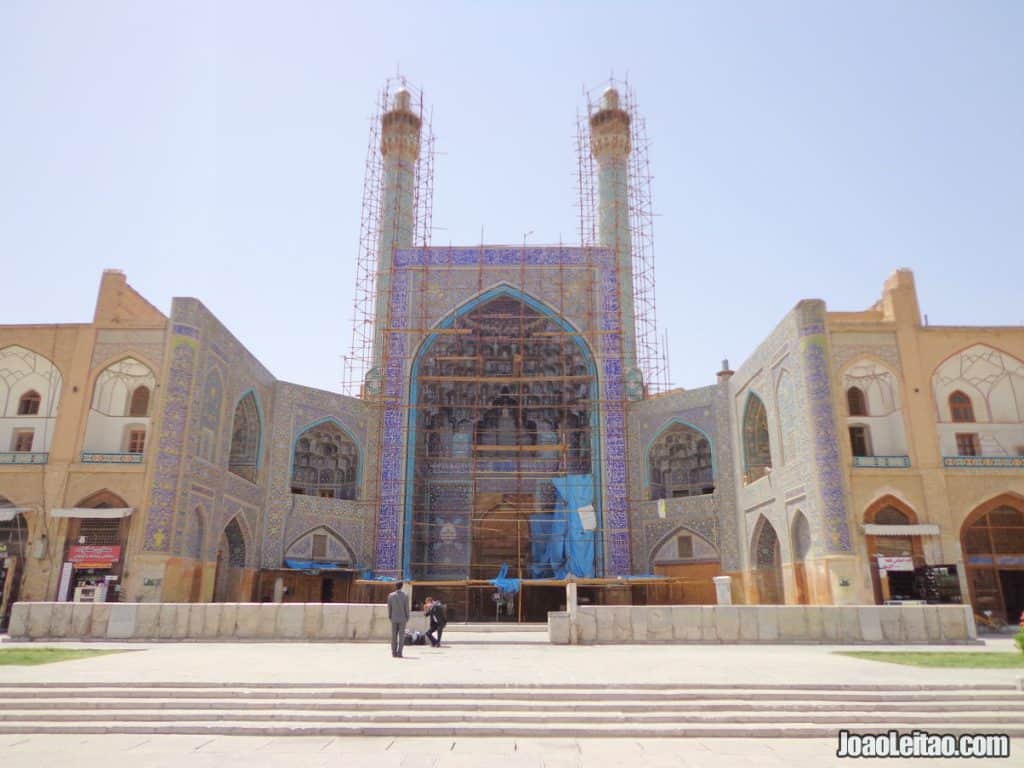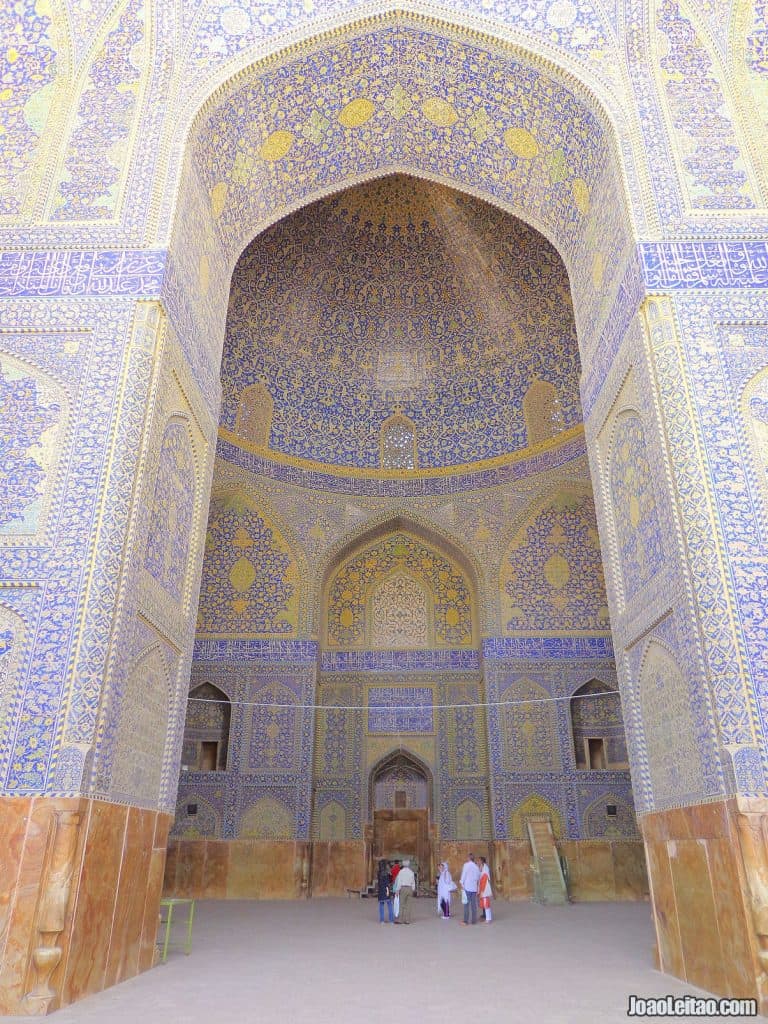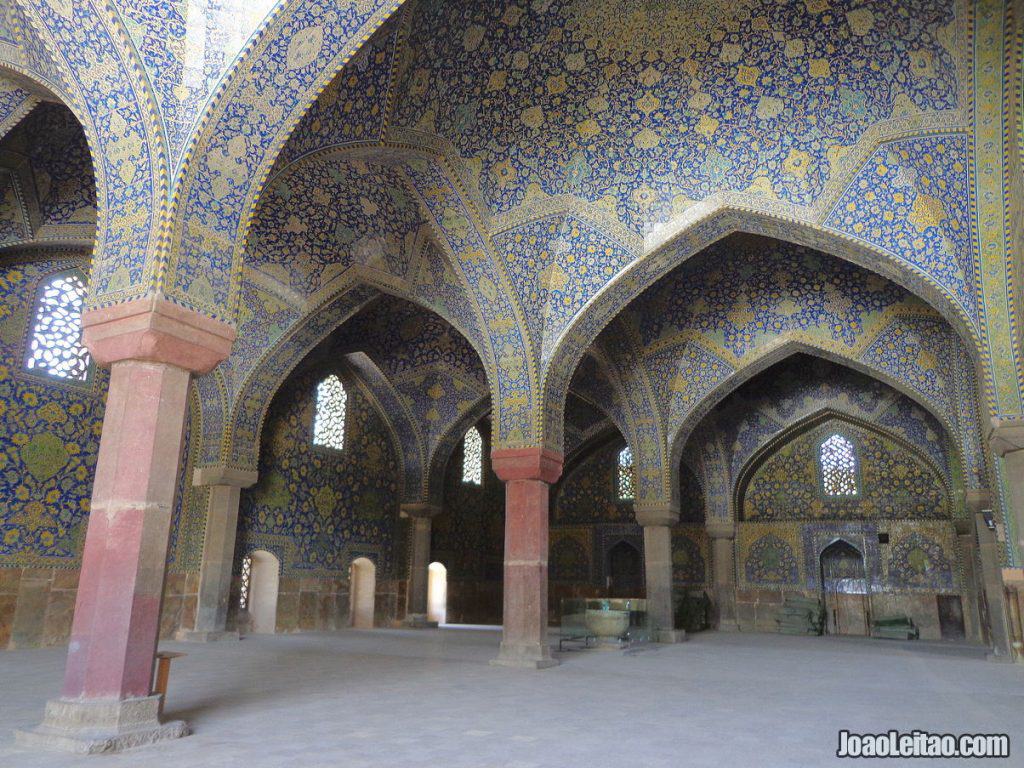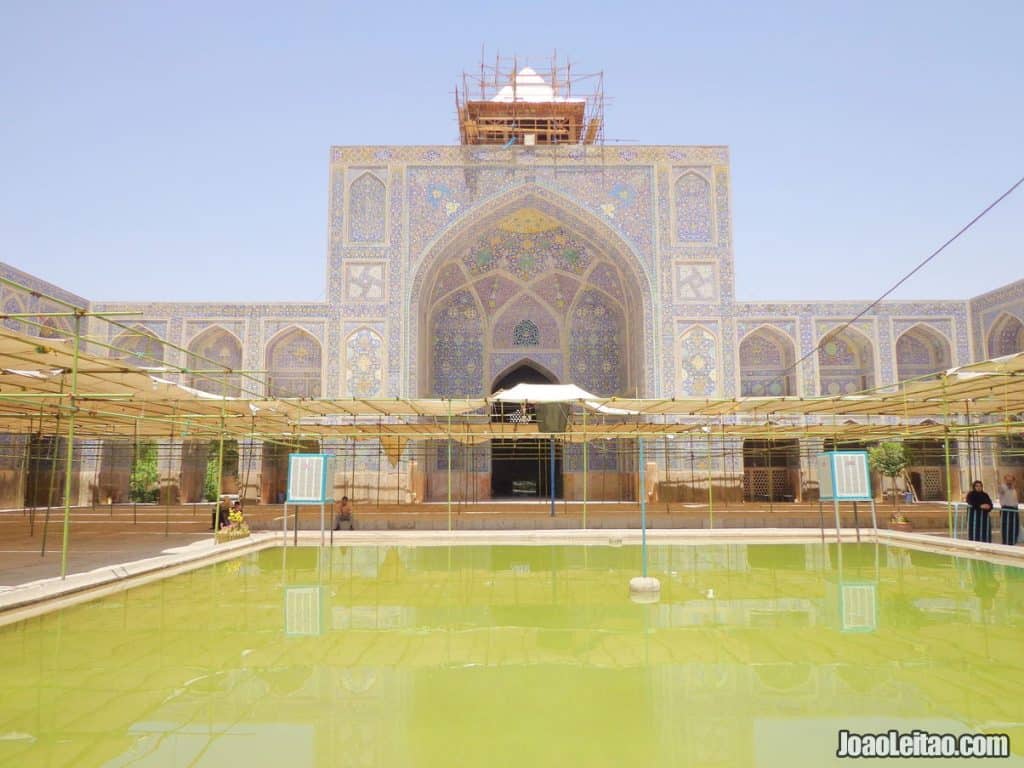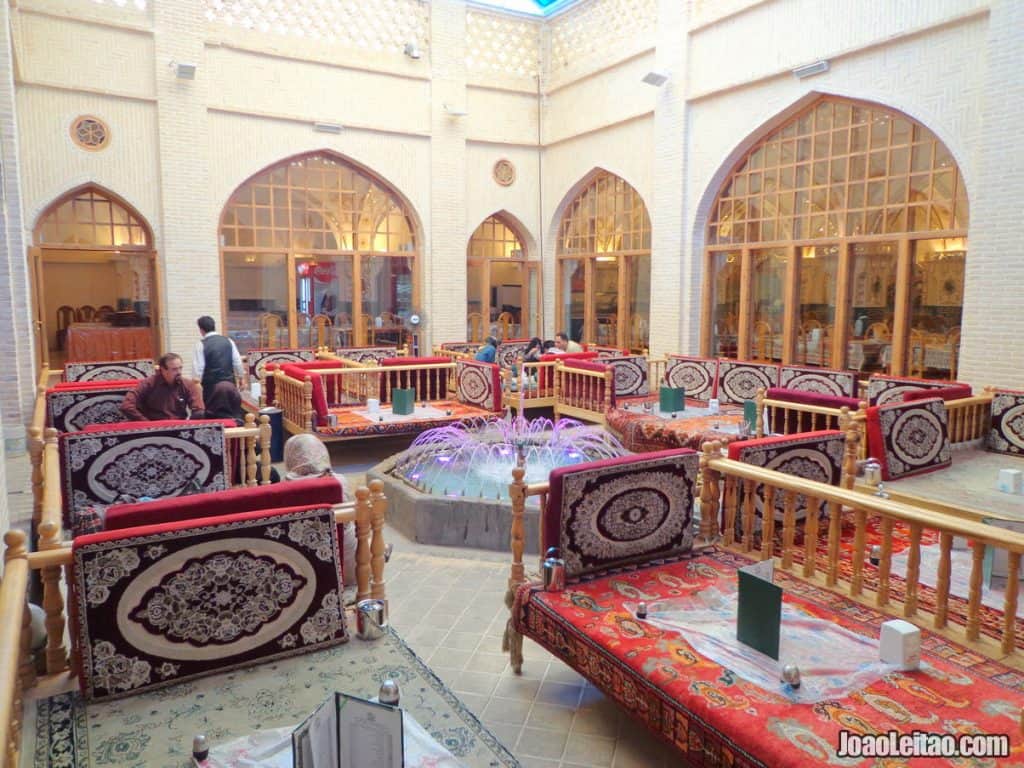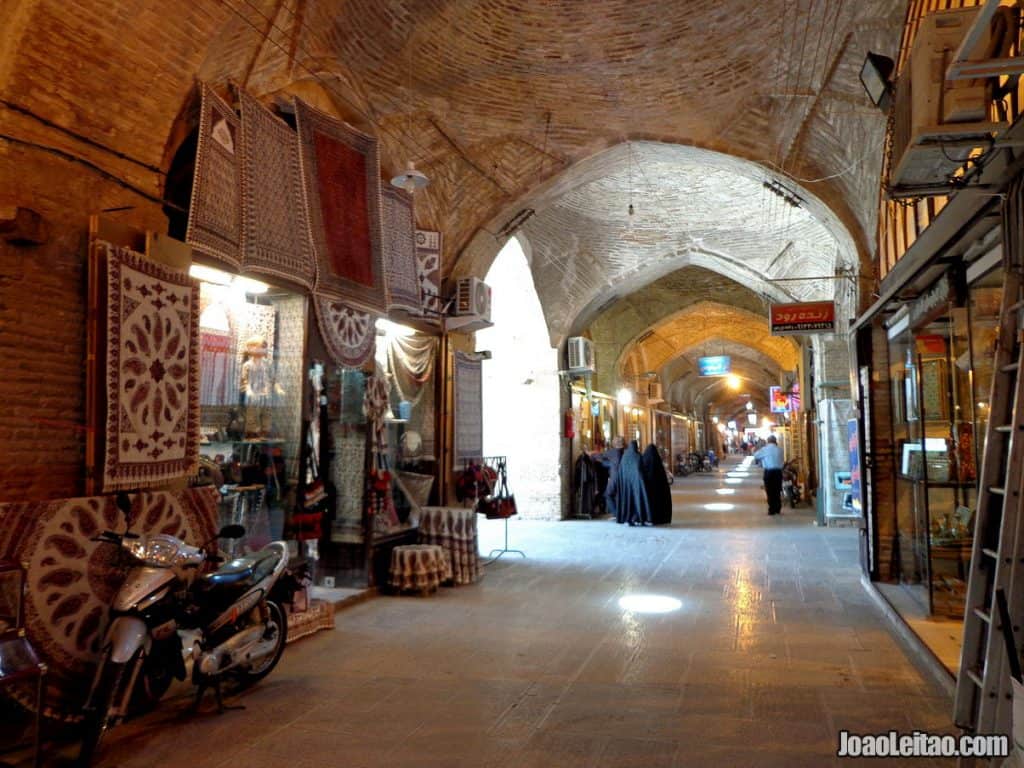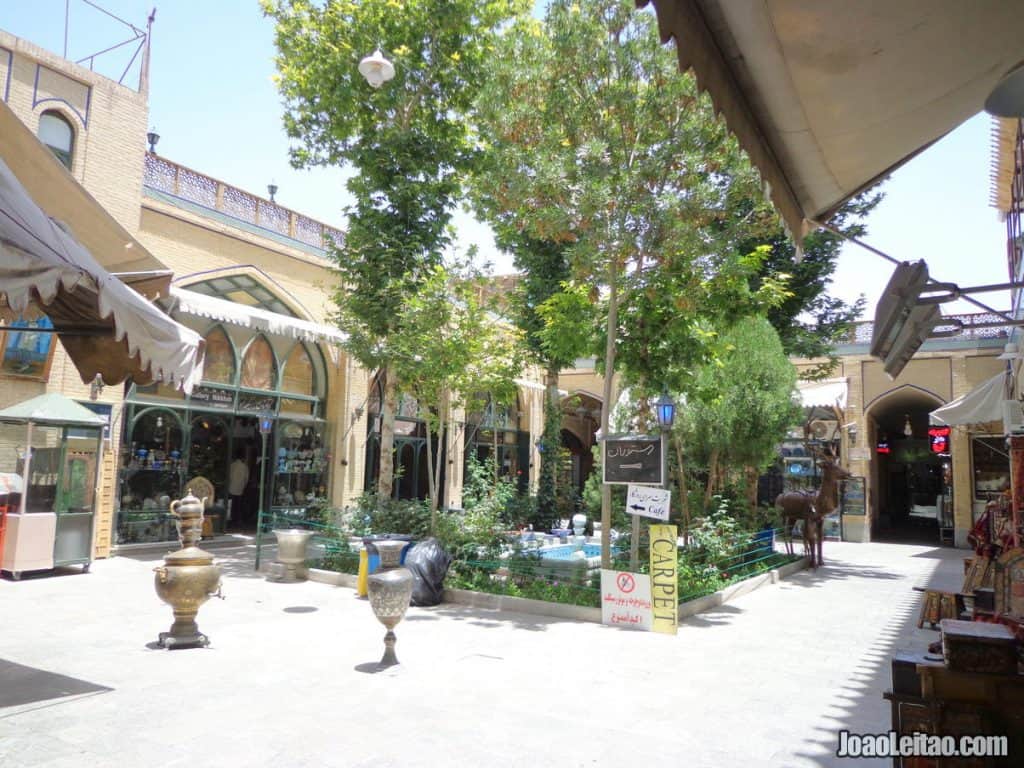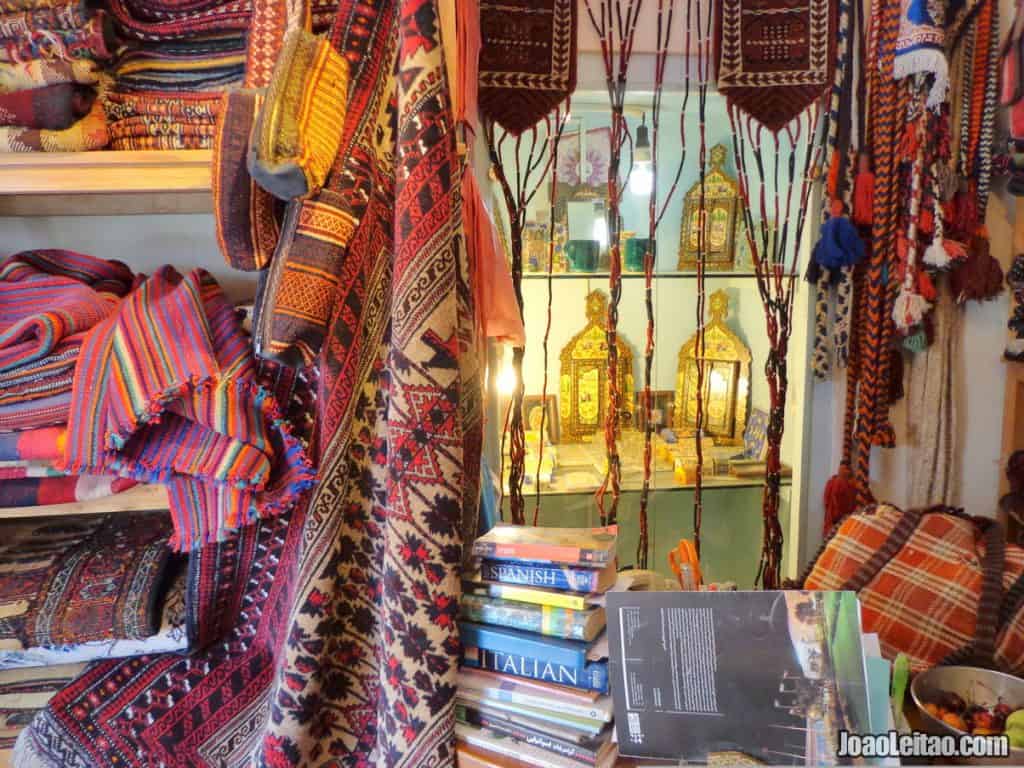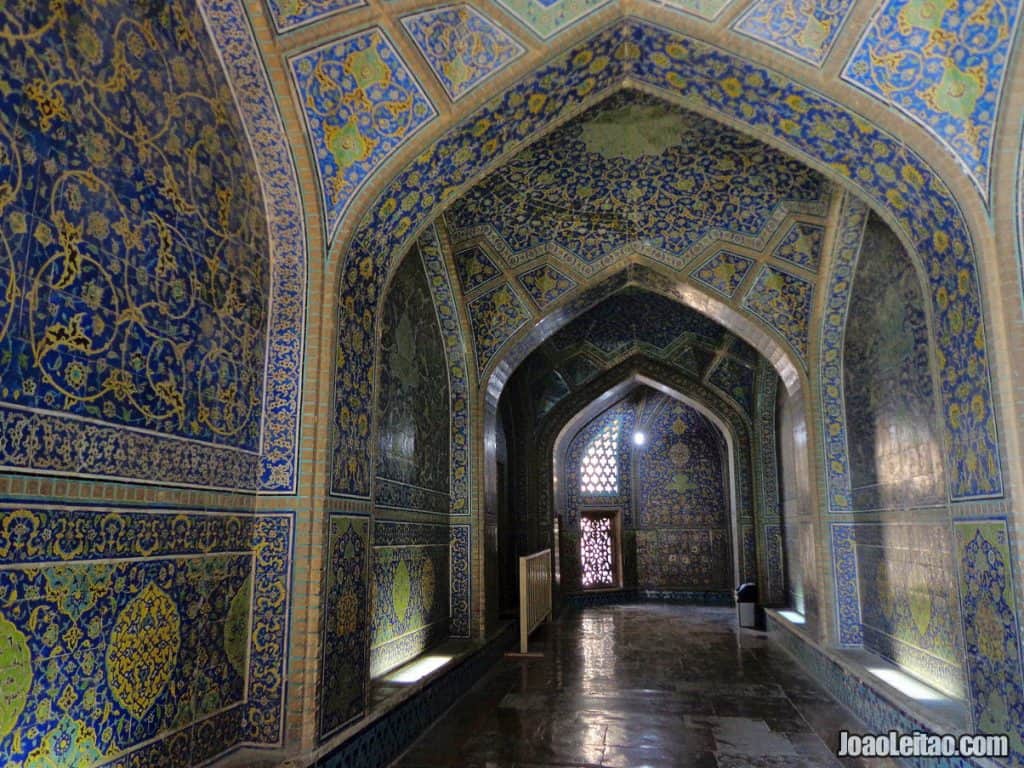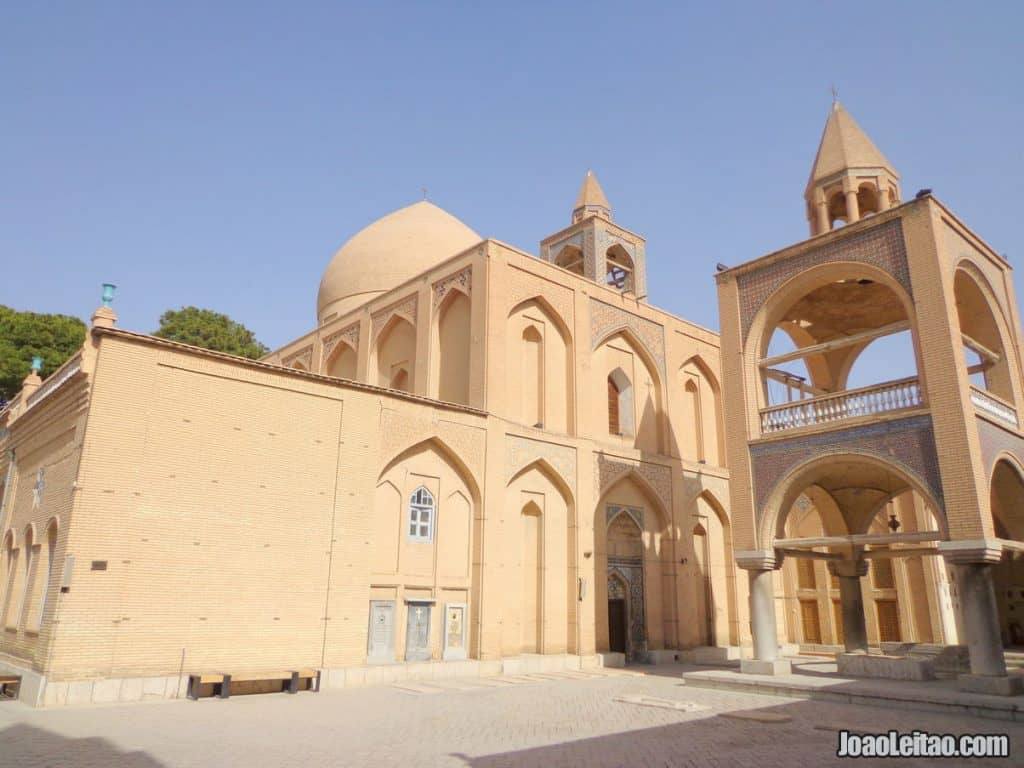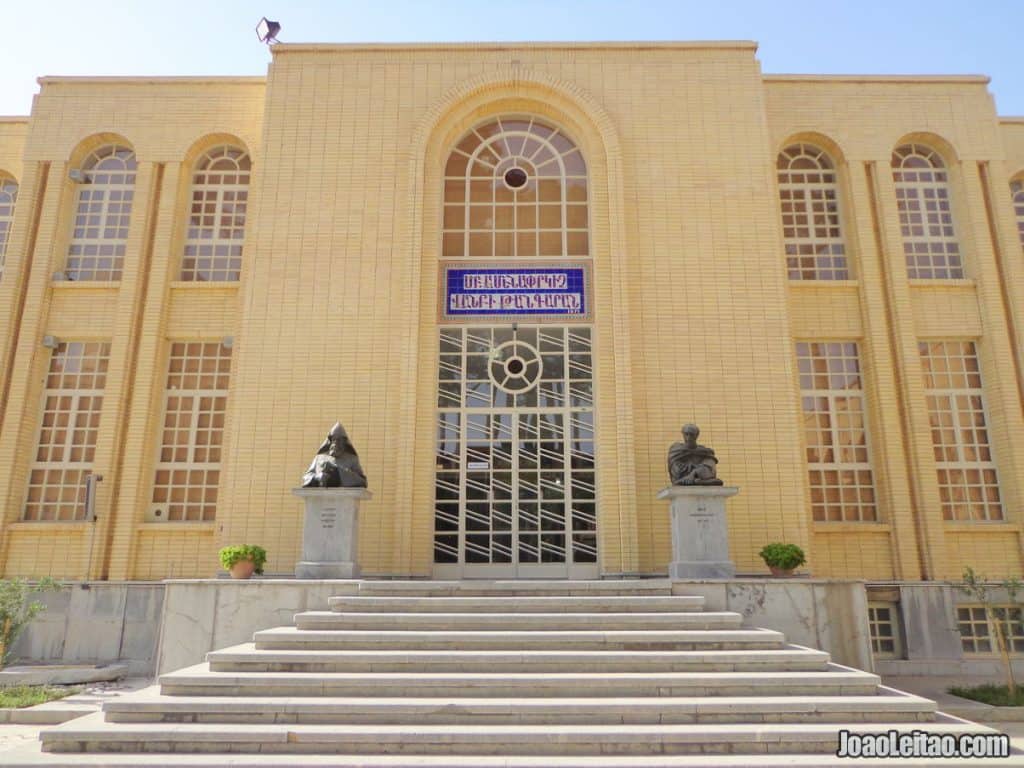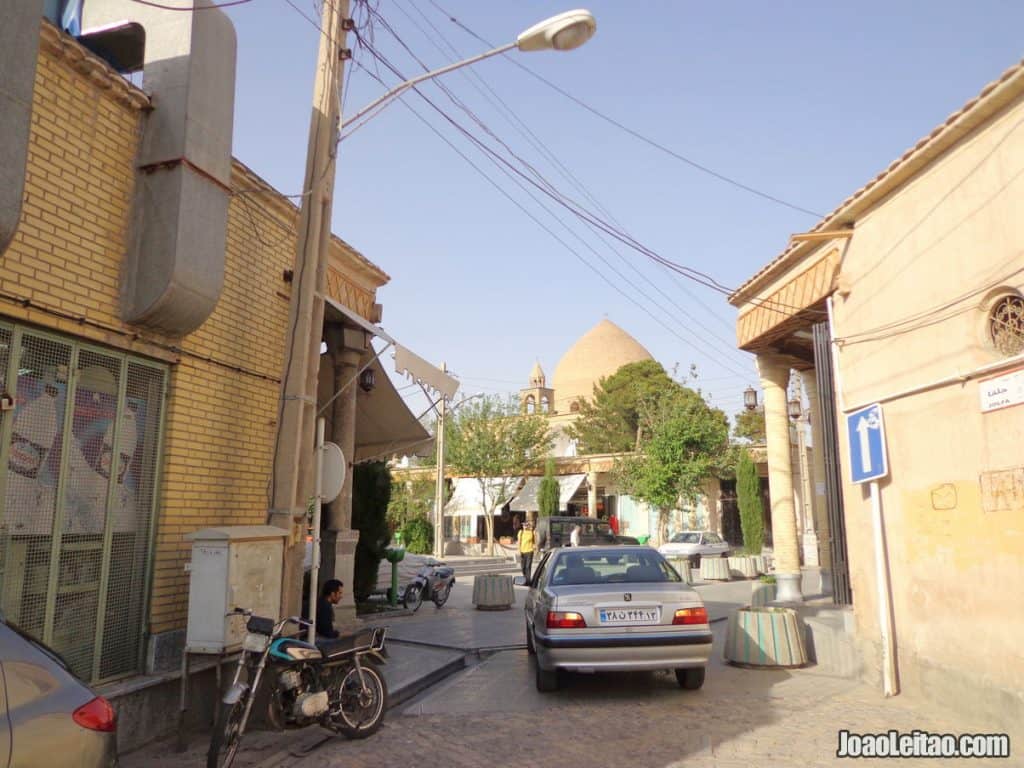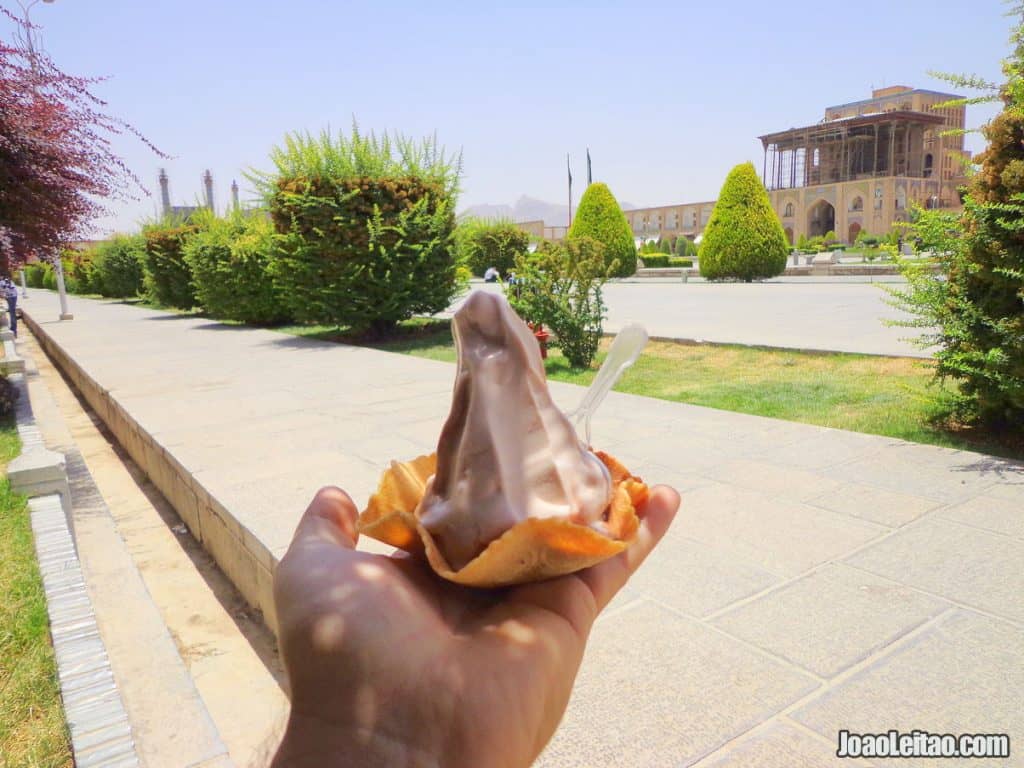Table of Contents
Visit Shiraz, Yazd & Isfahan
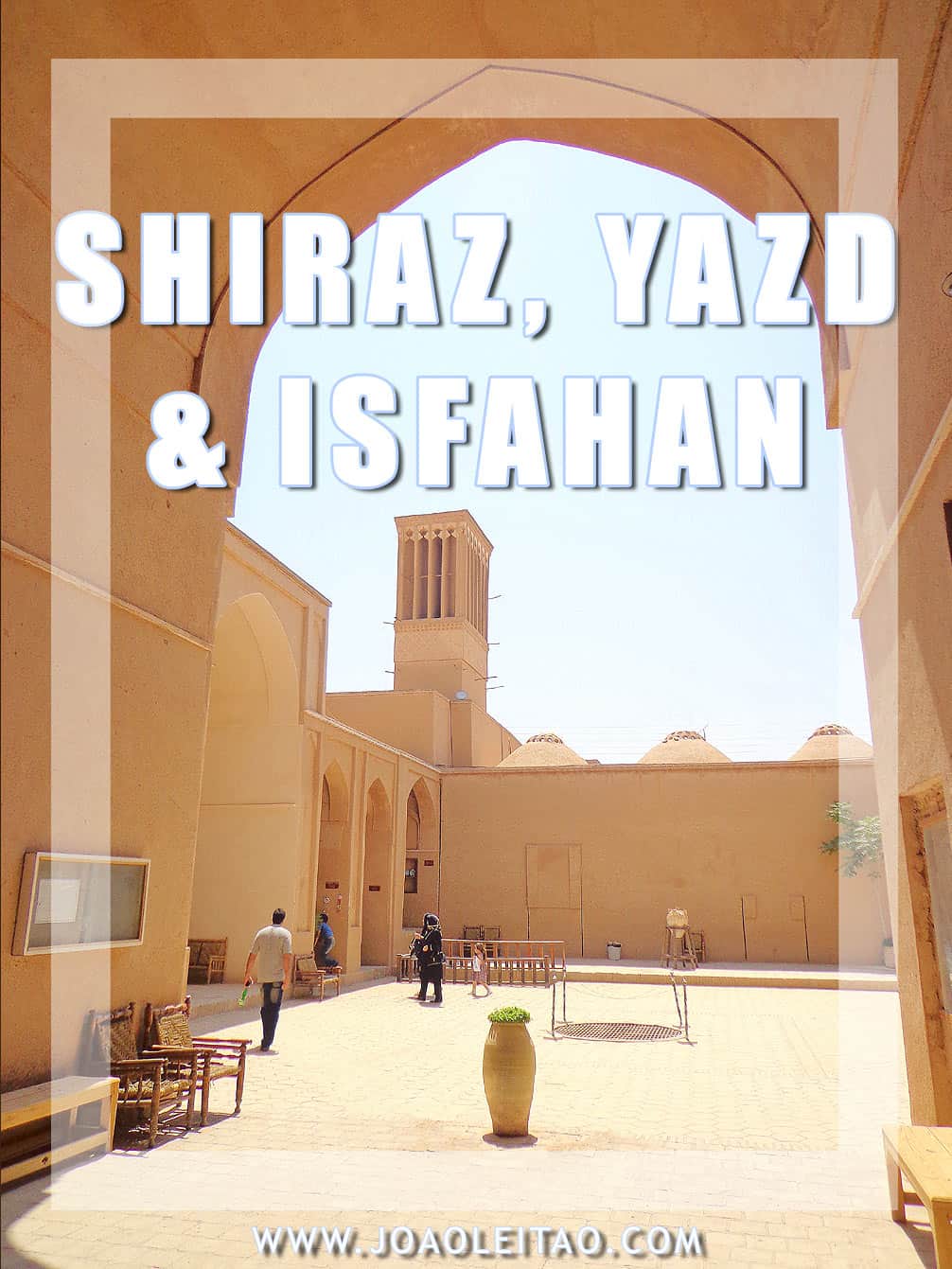
Iran is a fabulous country. No doubt that it should be on the top of the list of places to go on your next holidays.
You will notice that while preparing your next trip to Iran, you will debate about which of the most famous cities you should visit. Let me make things easier for you.
Shiraz, Yazd, and Isfahan have to be on your list of places to visit in Iran on your first trip to the country.
On this page, I have several city guides to help you know the major attractions and touristic places on three of the most famous Iranian cities:
Shiraz,
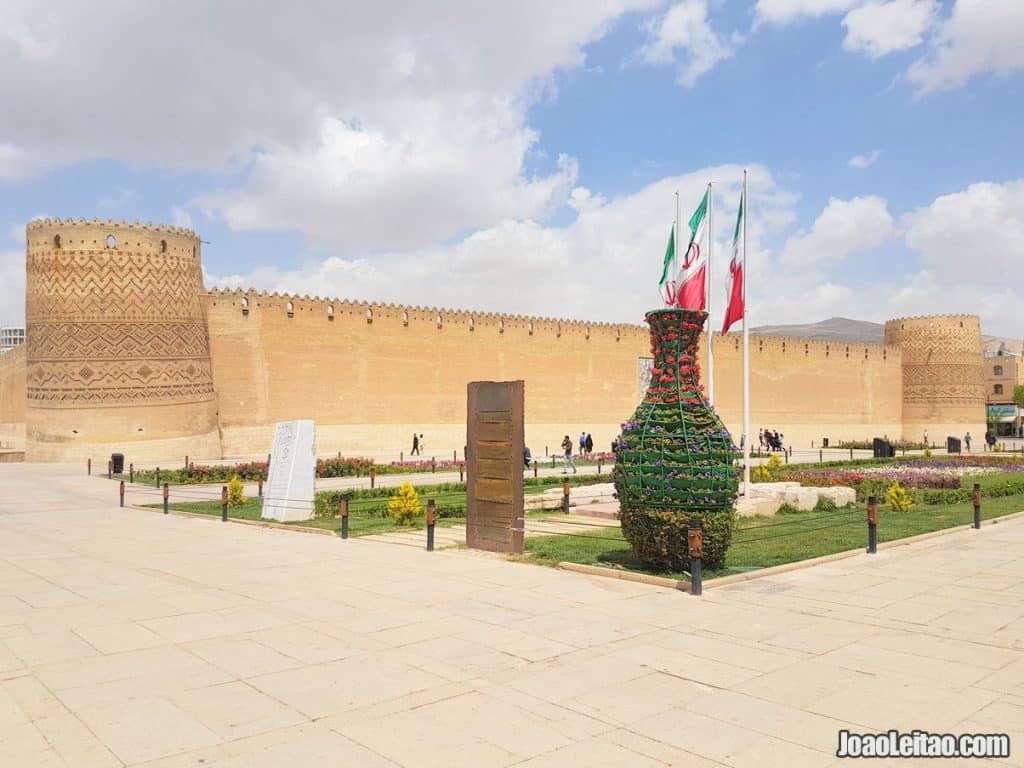
Yazd,
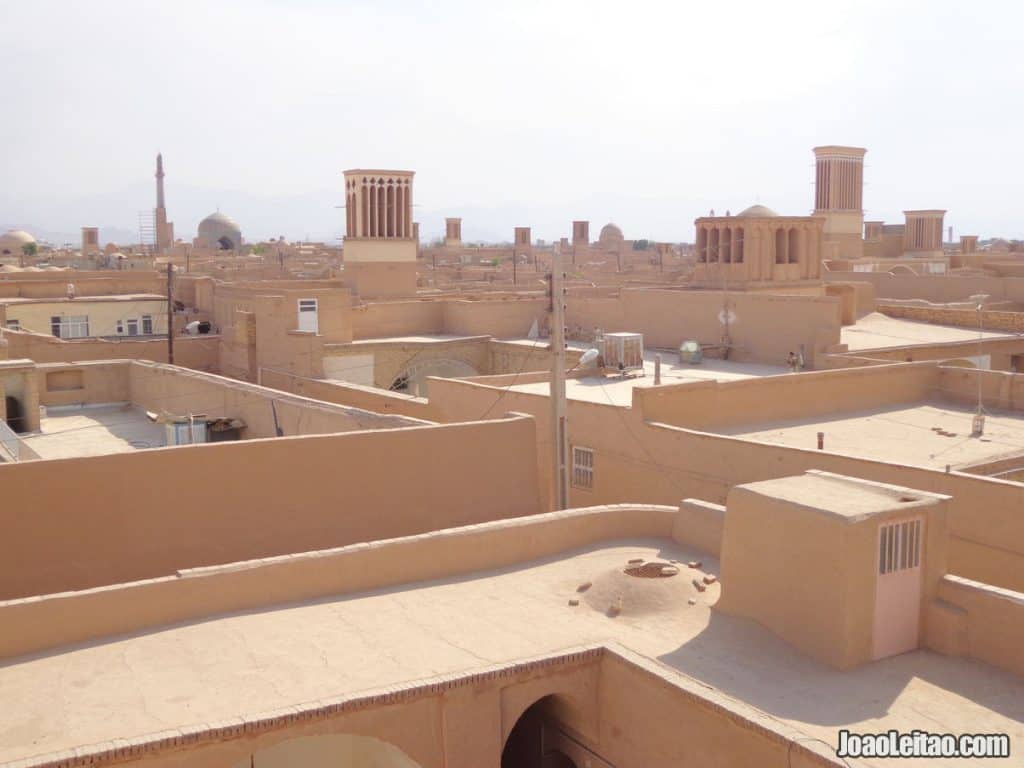
and Isfahan.
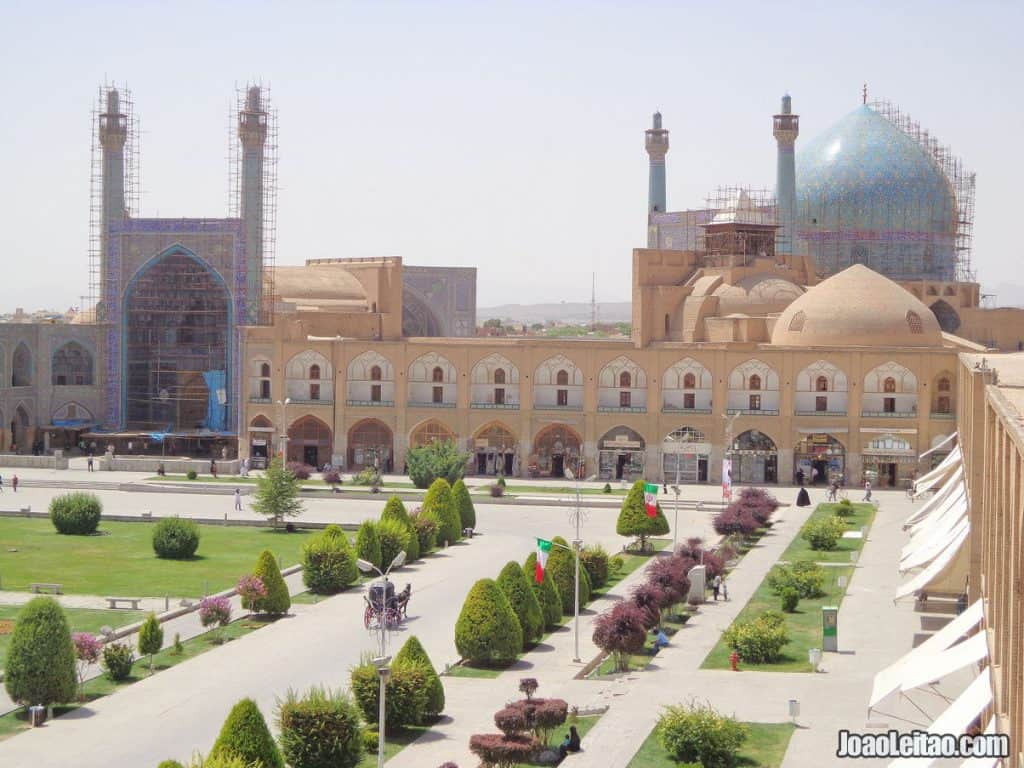
All of these cities have plenty of things to visit, and each
Shiraz City Guide
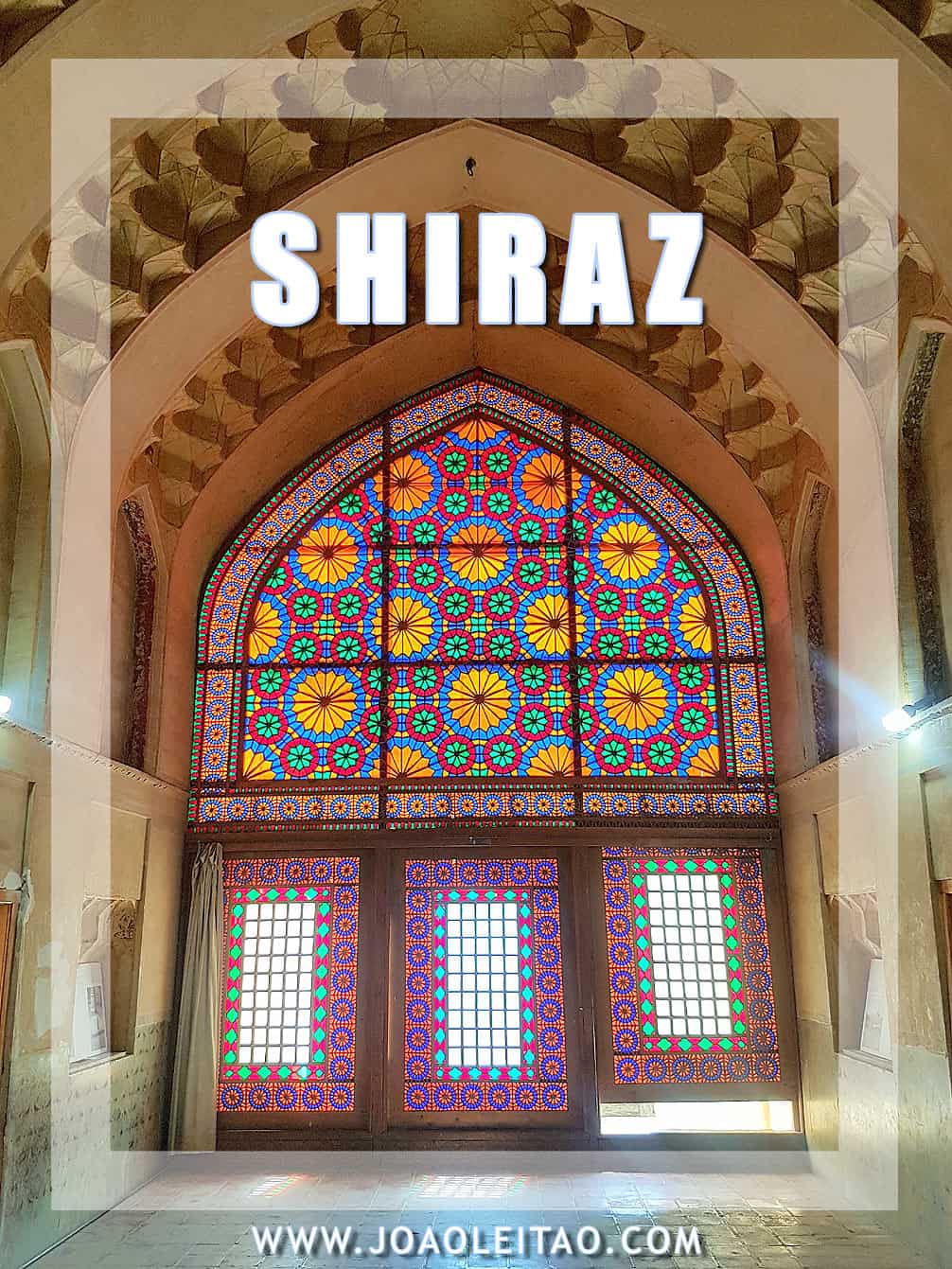
Shiraz has always played an important part in the growth of the Persian culture, and it was one of the most important cities of medieval Islam. But it was only in the mid 18th century when Karim Khan of the Zand Dynasty decided to move his capital city here that Shiraz really became essential. Most of the historic buildings you’ll visit in the city are from that time.
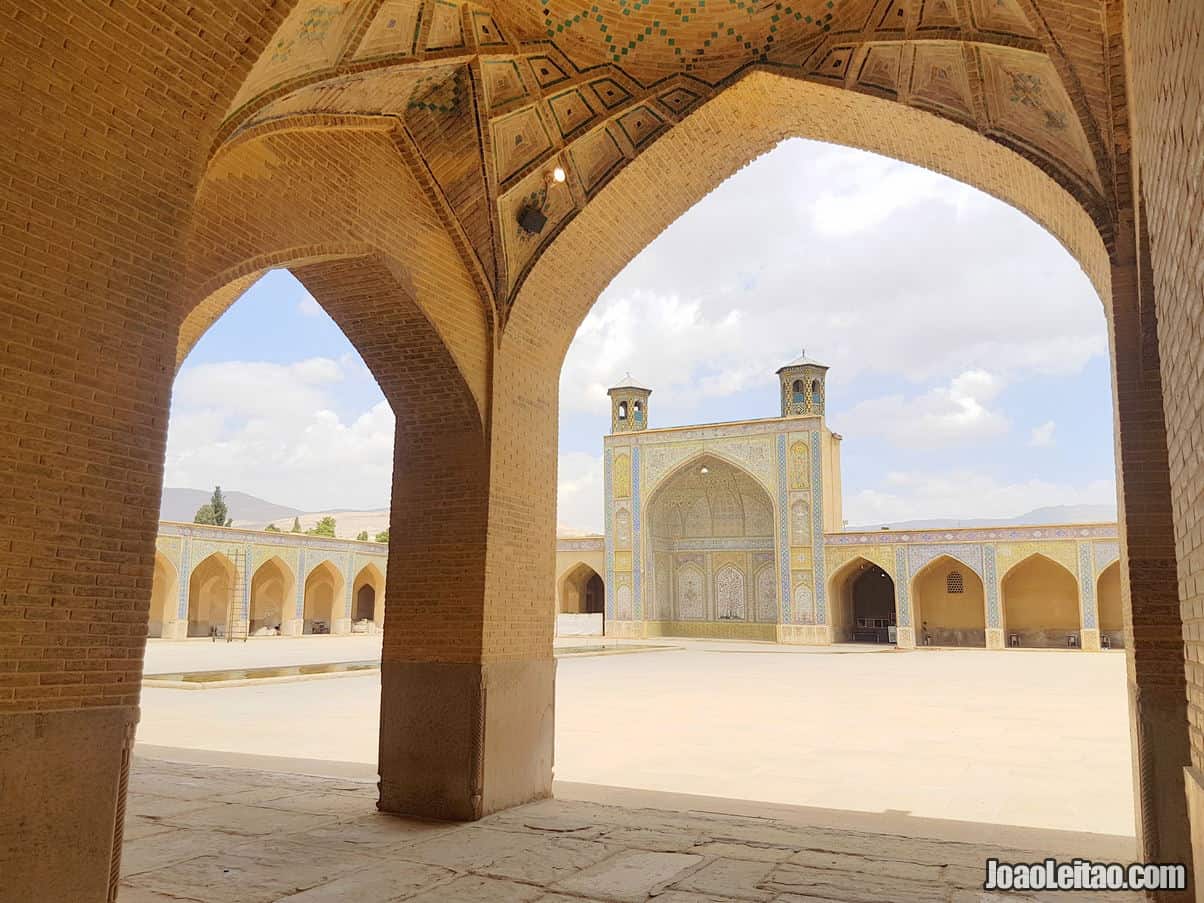
The historic center is quite compact, and almost all must-sees in Shiraz can be explored on foot. Just as Isfahan, Shiraz is not one of the most conservative cities in the country, which shows in the locals’ attitudes and the overall environment. Shiraz is a good base to visit Persepolis, a UNESCO World Heritage Site and Iran’s most important archaeological site.
Day 1 in Shiraz
Nasir-
Day 2 in Shiraz
Narenjestan Garden, Vakil Hammam, Vakil Mos Karimkhan Citadel (Arg-e Karimkhan), Vakil Bazaar, Tomb of Hafez.
What to visit in Shiraz
Tomb of Hafez
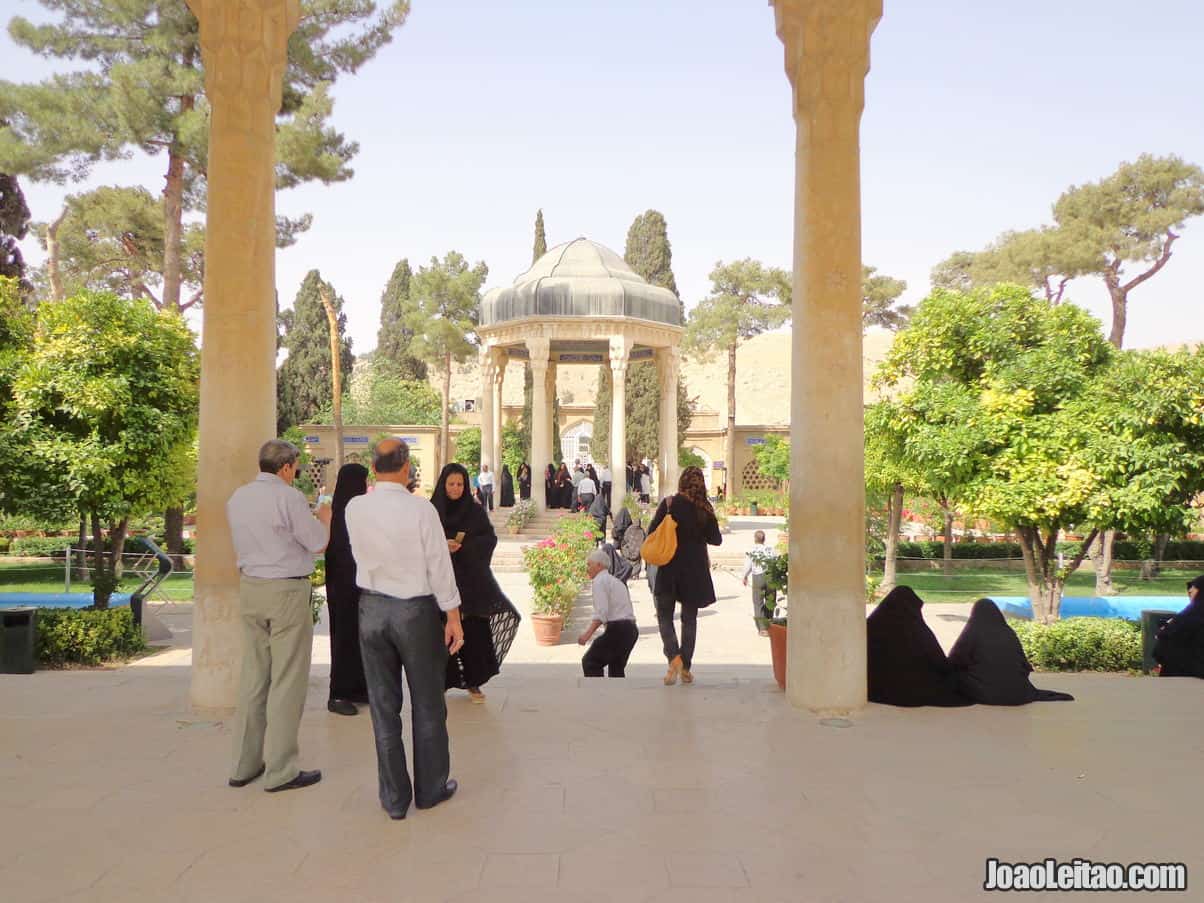
Hafez was a 14th-century Persian poet, and the importance of his tomb says a lot about how much Iranians value poetry. He died in 1390, and the first structure was built atop his grave in 1452, by orders of governor Babur Ibn-Baysunkur. A memorial was built in 1773 and later restored in 1857. What you’ll visit today is the result of the works led by French archaeologist André Godard between 1931 and 1935. The space was elevated one meter, and a dome was placed on eight 10-meters high columns. Shiraz’s locals come here often to pay their respects to one of the dearest poets of Iran. There’s an entrance fee to visit the tomb, located at the Musalla Gardens a bit farther from the center.
Vakil Bazaar
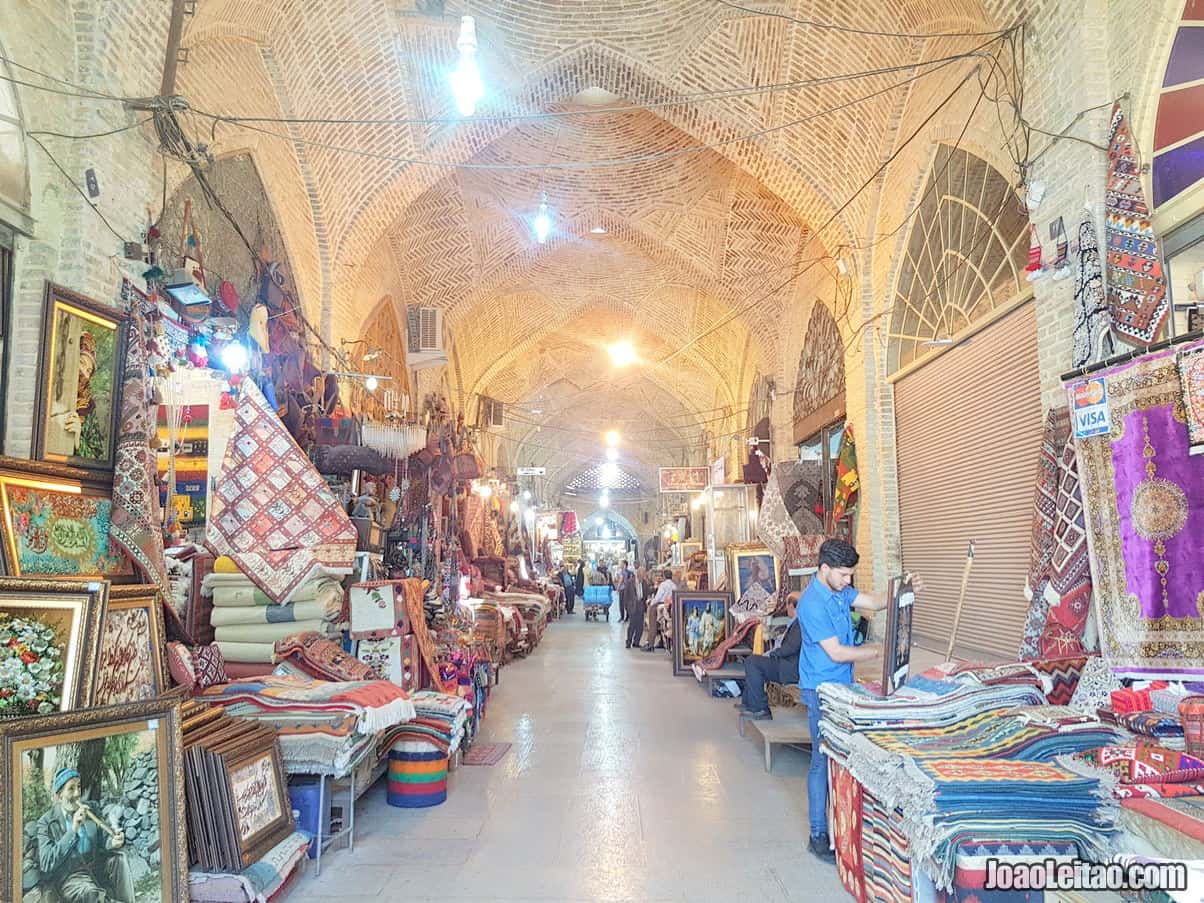
Vakil Bazaar is in the historic center of Shiraz, next to the Vakil Bath. It’s one of the oldest and most traditional markets in Iran. It was originally built in the 11th century by Kharim Khan, who planned to transform Shiraz into one big commercial depot. Here you’ll find modern products but also shops selling traditional items such as rugs, copper pieces, artisanal sweets, spices, and antiques. In total there are about 200 shops. The bazaar is cross-shaped, with its main paths supported by a complex system of arches, raised high, that control the temperature inside the market. There are several mosques at the complex and a charming courtyard lined by warehouses and a tea house in the center, which I recommend.
Eram Garden
This beautiful garden near the north shore of Khoshk River is one of the most remarkable gardens you’ll see in Iran. There aren’t historical evidence of the date it was originally built, but it was probably made when Ahmad Sanjar of the Seljuk Dynasty ruled, in the mid-13th century. The garden was renovated in the second half of the 18th century and was then given to tribal leader Mohammad Qoli Khan. The new owner built a mansion that didn’t make it to the present time. Therefore, the beautiful building you’ll see in the garden, inspired by the Safavid and Qajar styles, was commissioned by the next owner Mirza Hassan Ali Khan Nasir-al Mulk. During the Pahlavi Dynasty (1925-1979) it was used as a Law School and even housed the Asian Studies Institute. Eram Garden is currently part of the Shiraz Botanical Garden, established in 1983.
Nasir ol Molk Mosque
This mosque, also known as Pink Mosque, is famous for the fabulous effects of sunlight filtered through stained-glass windows in one of the sides of the prayer hall, filling the room with color. This is, however, a sporadic phenomenon that you can only witness on sunny mornings in the fall and the winter, especially in November and December. It was built in the Qajar period when Mirza Hasan ruled and was finished in 1888. The name Pink Mosque comes from the pink mosaics inside the niches, that create a kaleidoscope effect. In addition to the prayer hall, visitors can seek tranquility in the courtyard or be impressed by the mirror room.
Qavam House
This house-museum, also known as Narenjestan and Ghavam, is located near the Nasir ol Molk mosque. It was built between 1879 and 1886 by Mirza Ibrahim Khan, of the Qavam family, who was a wealthy merchant. The exquisiteness of the building reflects the lifestyle of the wealthy Persian families at the end of the 19th century. The frescoes on the ceiling were inspired by the Victorian style. Inside the house, must-sees include the mirror hall that opens up to a garden, richly adorned with different plants and fountains. The Asian Studies Institute of the University Pahlavi was housed here in the third quarter of the 20th century, and the director lived at the mansion for some time. You can also currently visit a small ceramics exhibition.
Arg Karim Citadel
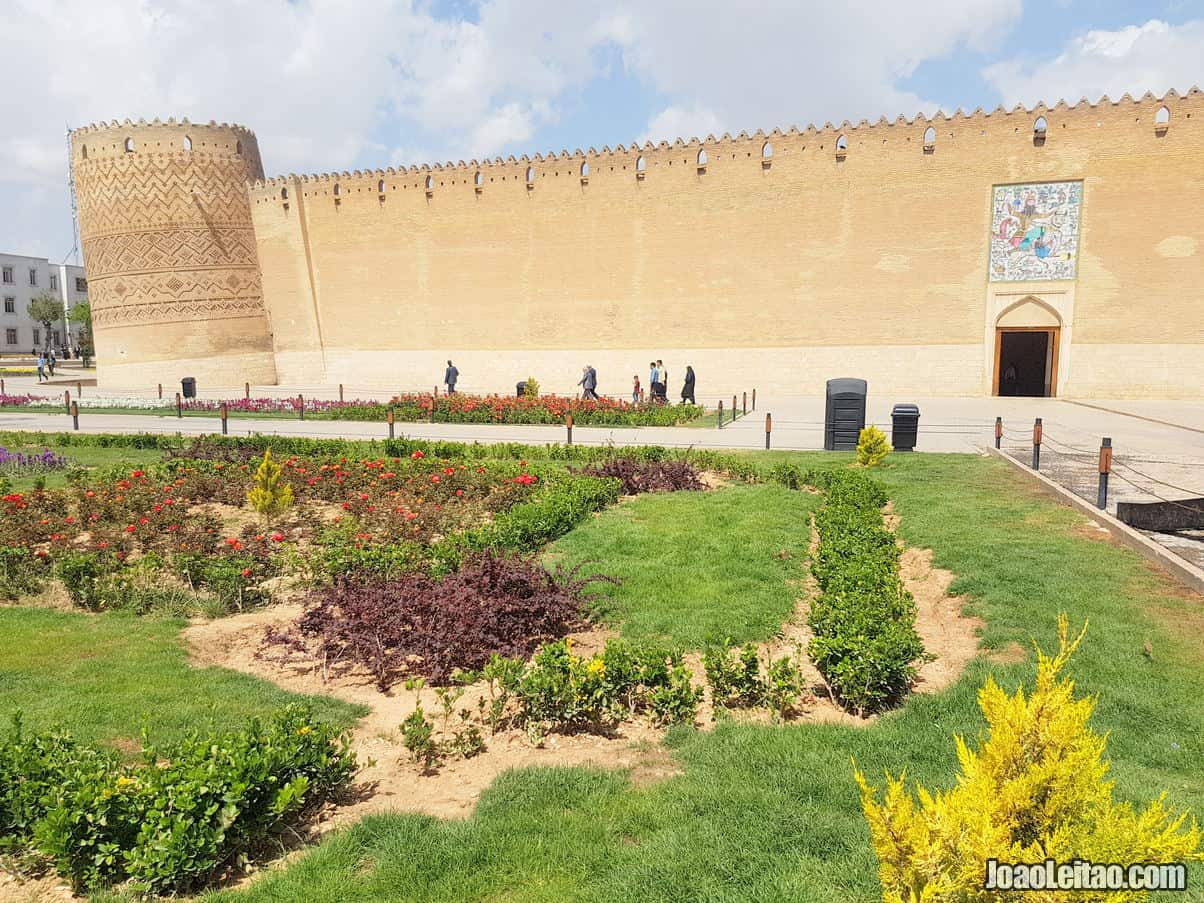
The citadel is a must-see site in the center of Shiraz. It was built in 1767 by Karim Khan of the Zand Dynasty, who lived there. Later, during the Qajar era, it was the house of the Governor. After the end of this dynasty it became a prison, then in 1971 it began to be managed by Iran’s Cultural Heritage Organization and was restored in 1977. It resembles a medieval castle, a square-shaped building with one tower in every corner, covering an area of 4,000 square meters. The walls are 12 meters tall and 3 meters wide. One of the towers collapsed, because of the erosion process underground, but it still stands there although in an unusual angle. This place is very popular with locals who get to spend time inside (only foreigners need to pay a ticket) as well as in the gardens around it.
Vakil Bath
The public baths of Vakil are part of a list of great constructions commissioned during the kingdom of Karim Khan, of the Zand Dynasty, which also includes the Vakil Bazaar and the Arg Karim citadel. This happened during the third quarter of the 17th century when Shiraz was at its prime. There’s a changing room covered by a beautiful dome where people would leave their clothes and shoes before entering the main room for the baths. Nowadays the public baths are a museum with some mannequins used to recreate those times.
Pars Museum
The Pars Museum is in a small pavilion at the Nazar Garden. It was built by Karim Khan of the Zand Dynasty, when Shiraz was the capital of Persia, at the end of the 18th century. At the time, the monarch used the building to welcome important emissaries and for small business meetings. The pavilion is octagonal and covered in tiles. It became a museum in 1934 and was the first Iranian museum outside Tehran. Its interior that already had beautiful frescoes was further enriched by the museum’s exhibition that includes art pieces, coins, royal seals, handwriting examples, and old weapons. The most surprising fact is that Karim Khan, who was a famous ruler, is buried in the pavilion.
Vakil Mosque
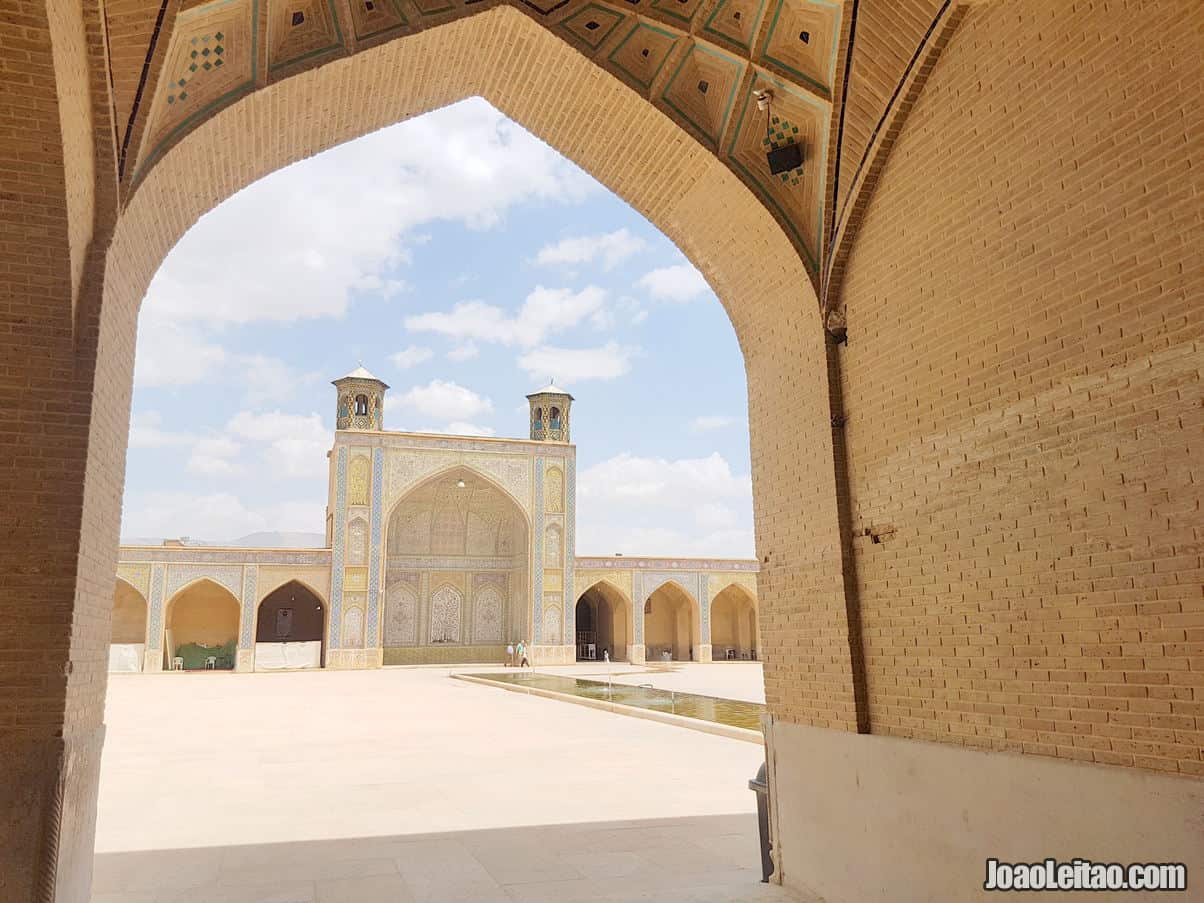
This mosque was built between 1751 and 1773, during the Zand period, as most of the other significant historical buildings in Shiraz. It was renovated in the 19th century, during the Qajar dynasty. The name Vakil means “leader,” a title used by Karim Khan, the ruler who made Shiraz the capital city of Persia. The mosque covers an area of almost 9,000 square meters and its distinguishing features include the entrance decorated with Shiraz’s typical pink mosaics and the eight columns under the dome of the main prayer hall. A significant portion of the mosaics in this mosque was added during the 19th-century renovation.
Maharloo Lake
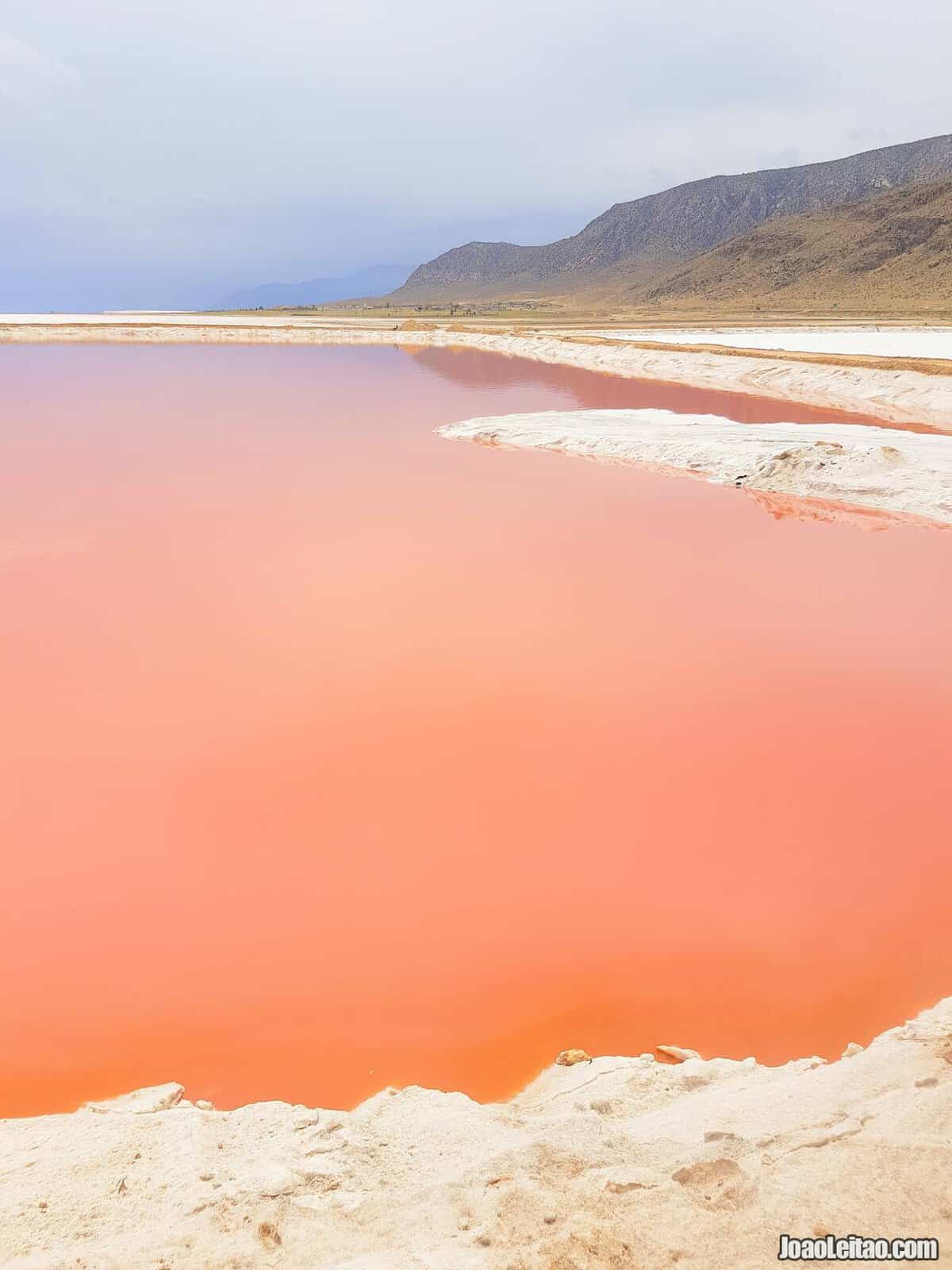
This gorgeous saltwater lake is located near Shiraz. Although you can’t reach it by public transport, you can hire a cab to take you there.
It’s also known as the Pink Lake, and it’s like paradise for birdwatchers, although there has been a decrease in migrating bird species since the lake area reduced in size.
The lake is 600 square kilometers and produces high-quality salt. Please note this is a seasonal lake, and its landscape and look is different in each season.
Shapouri House
This house is in the city’s historic center, in Anvari. The building was designed by architect Abolghasem Mohandesi for its owner Abdolsaheb Shapouri and was built between 1930 and 1935. The house is on 840 square meters of the total of 4,635 square meters of the property. A beautiful garden with a lake stretches in front of the main façade of the house, which is a perfect example of the fusion between the landscape styles of Persia and Europe. The house is open for visits and the best time to go is in the spring when flowers dot the garden, and the light is better. There is a café and a gallery at the house.
Persepolis
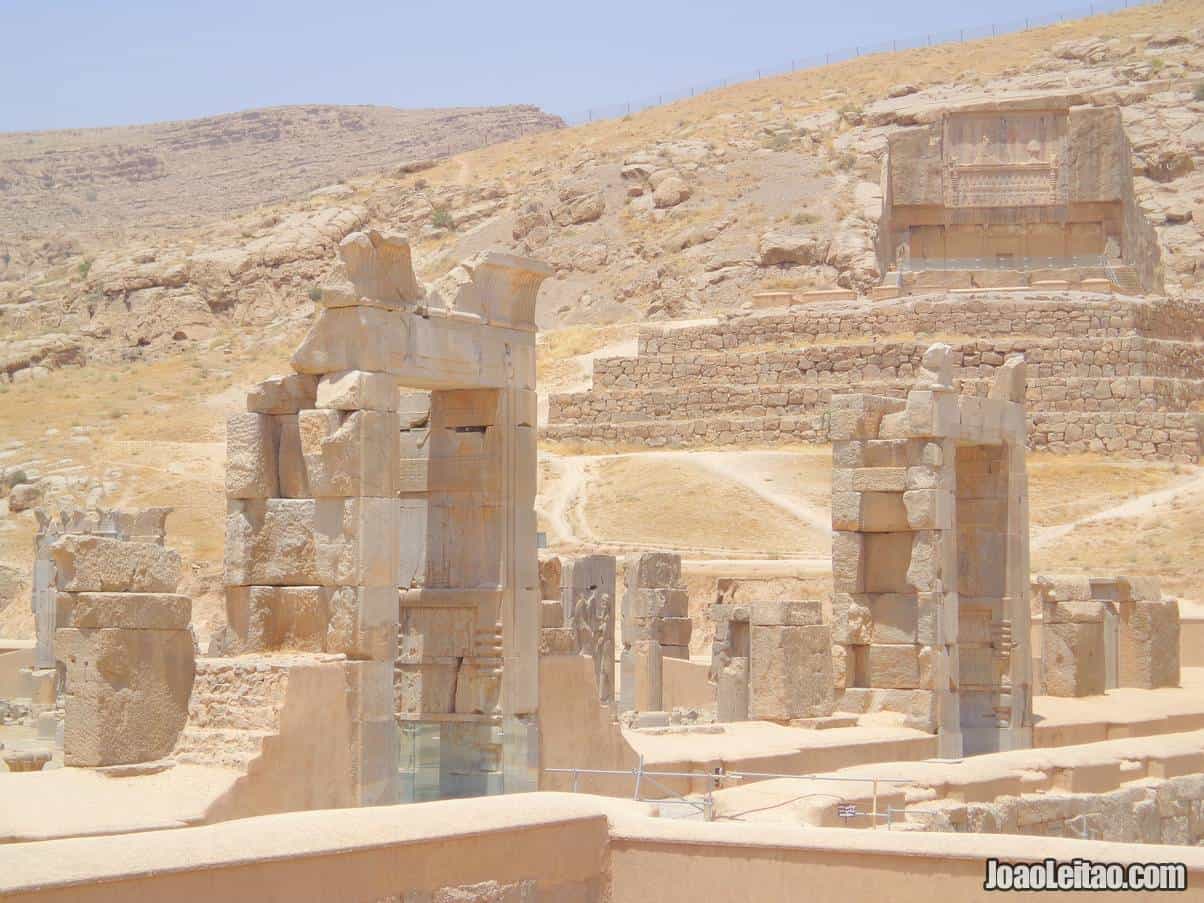
Although there are traces of an older human presence at the site, Persepolis was founded by emperor Darius I in 518 BC, who made it the capital city. At least officially, because Persepolis’s remoteness made it difficult to rule from there, so the monarch spent more time in cities like Susa, Babylon, and Ecbatana.
Nowadays, you can visit a vast complex of monuments, with several must-see structures and buildings, including the Gate of All Nations, that gave access to the city on the west side, the Apadana Palace, the monumental tombs, and the Throne Room.
Pasargadae
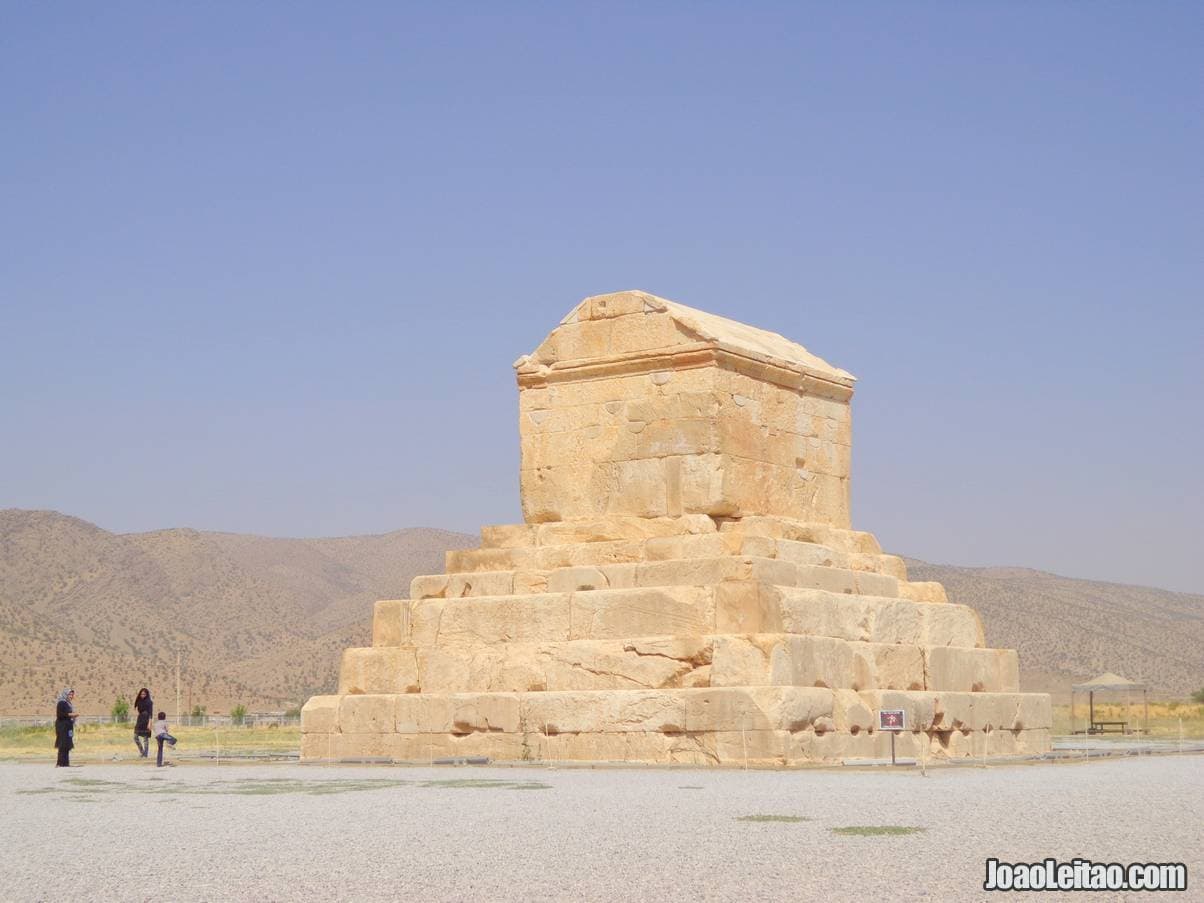
Pasargadae is an ancient city, today in ruins, 135 km northeast from Shiraz, from where you can travel to.
It was the capital city of the Achaemenid Empire, founded by Cyrus II the Great, around 546 BC. The great Persian leader died at war in 530 BC, so he never got to see his new capital city. His body was laid to rest in the monumental tomb built for that purpose in Pasargadae, which is, in fact, the most important monument in all the archaeological complex.
Naqsh-e Rustam
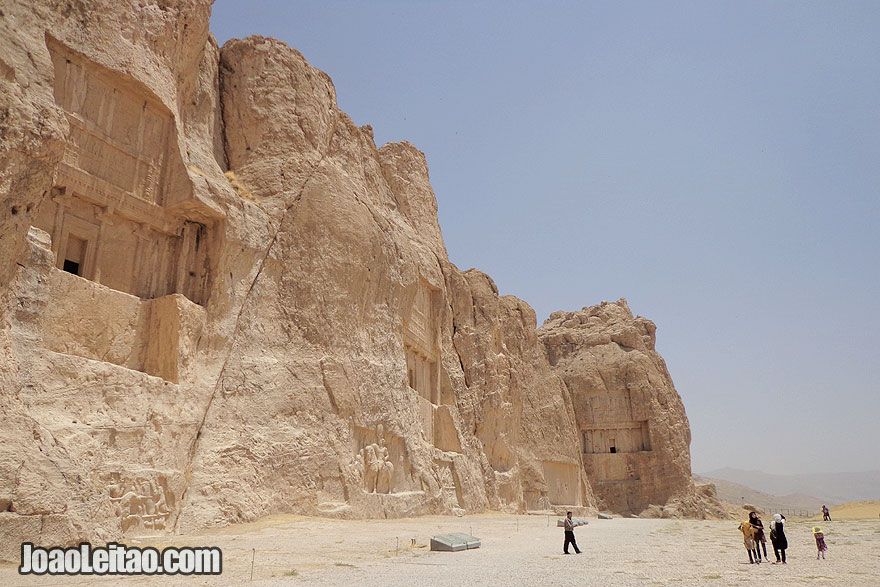
It’s a bit further from Persepolis, around 6 km, and you can and should visit at the same time as Naqsh-e Rostam.
Must-see places here include the necropolis, with the monumental tomb to Emperor Darius I. It’s carved on the rock, and it’s called Huseyn Kuh. There’s an inscription about how the late monarch wanted to rule with justice.
There are more tombs built using this technique, but there isn’t any indication of who’s buried in them, although it’s almost sure it’s the immediate successors to Darius I.
Those tombs were big enough for nine people and were sealed after the funeral ceremonies were over. Only after the victory of Alexander the Great were the tombs opened and, eventually, pillaged.
Photos of Shiraz
Transportation from Shiraz to Yazd
Bus from Shiraz to Yazd
- Timetable: 5 pm, 5:30 pm, 9 pm, 11 pm and 11:55 pm.
- Departure: Karandish Bus terminal
- Price: 300,000 rials
- Duration: 5-6 hours
Distance : 437 kilometers
Yazd City Guide
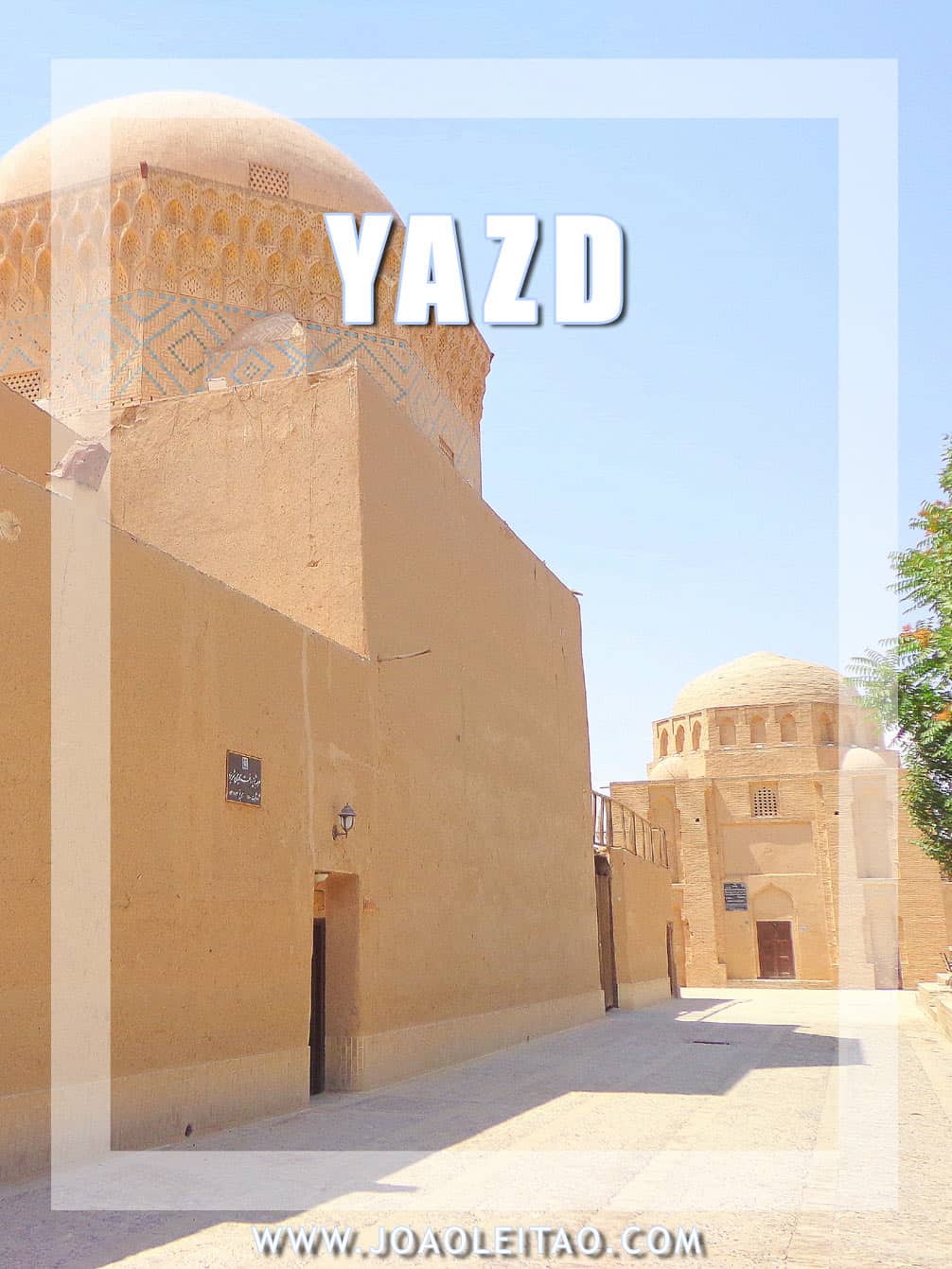
Yazd is not only one of the oldest cities in the world, but it’s classified as a UNESCO World Heritage Site. Fortunately for tourists, the city’s historic center is quite compact and can be explored on foot. The city is full of ancient buildings including the famous Alexander’s Prison and a couple of house-museums that are perfect examples of the traditional Persian architecture.
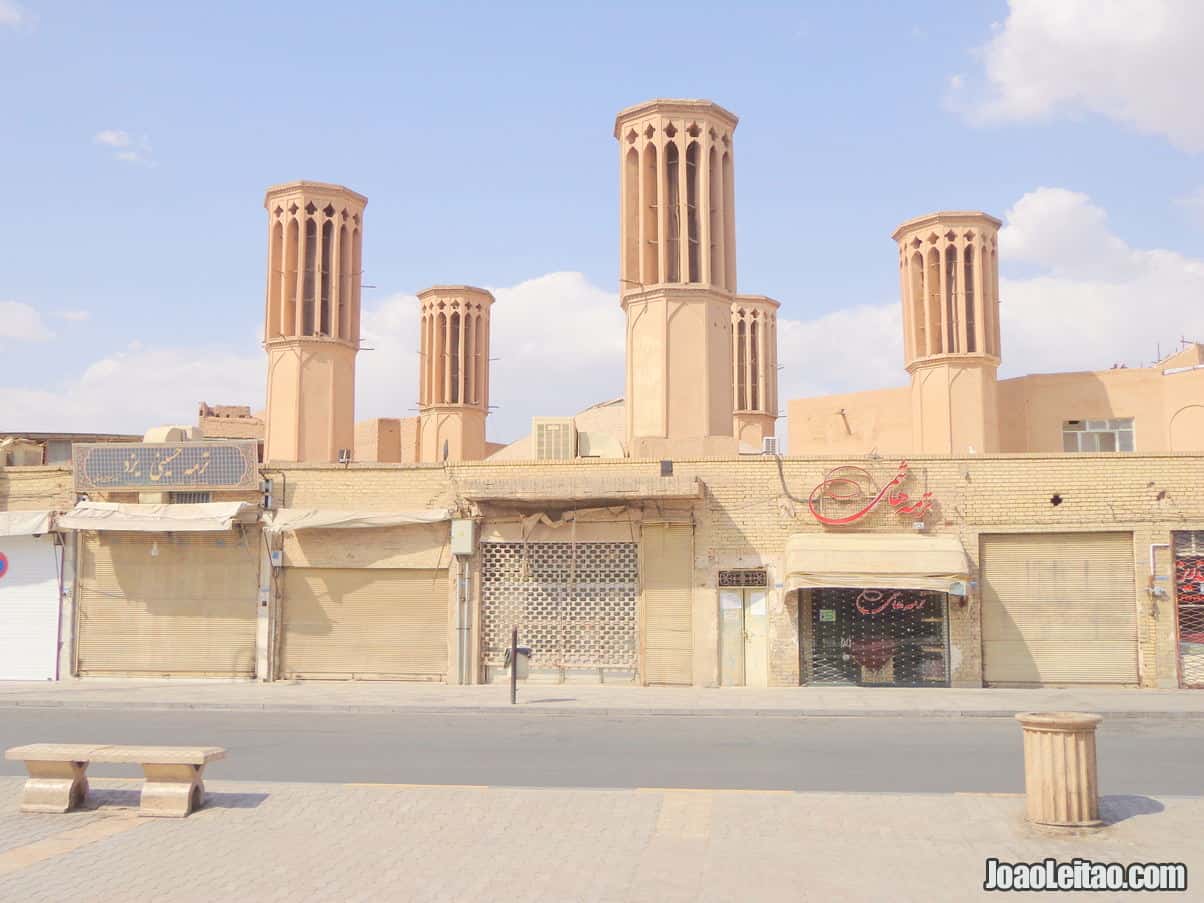
The wind towers are an interesting distinguishing feature because they’re a sort of primitive air conditioning system: air from the outside comes down the towers, where it’s cooled and then spreads inside the houses. The Jame Mosque is probably one of the most recognizable sights in Yazd, but other must-sees include buildings associated with the Zoroastrian faith such as the Fire Temple and the Towers of Silence.
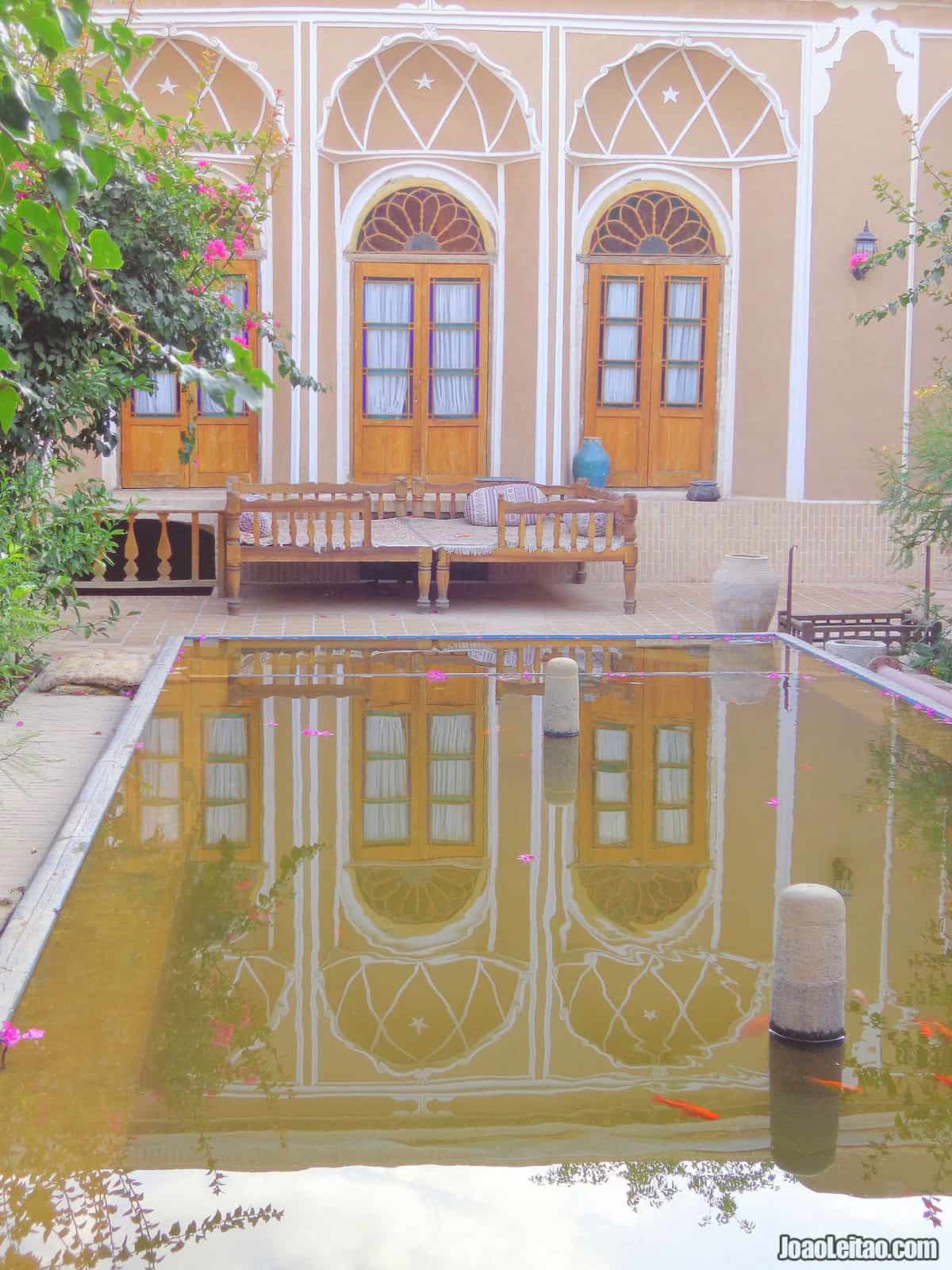
Yazd is also a good place to wind down. During the day you can go to one of the rooftop terraces in the old city for tea and in the evenings go for a stroll at the square near the Amir Chakhmaq complex, where locals hang out and socialize.
Day 1 in Yazd
Naqsh-e Jahan Square, Qeysariyeh Covered Bazaar, Abbasi Mosque, Sheikh Lotfollah Mosque, Aali Qapu Palace, Chehel Sotoun Palace, Hasht Behesht Palace, historical bridges Sio-Se Pol and Khajou.
Day 2 in Yazd
Isfahan’s Friday Mosque, Vank Cathedral, Armenian, Monar Jonban (Shaking Minarets), Zoroastrian Fire Temple, Ancient Shahrestan Bridge.
What to visit in Yazd
Masjid-e Jame Mosque
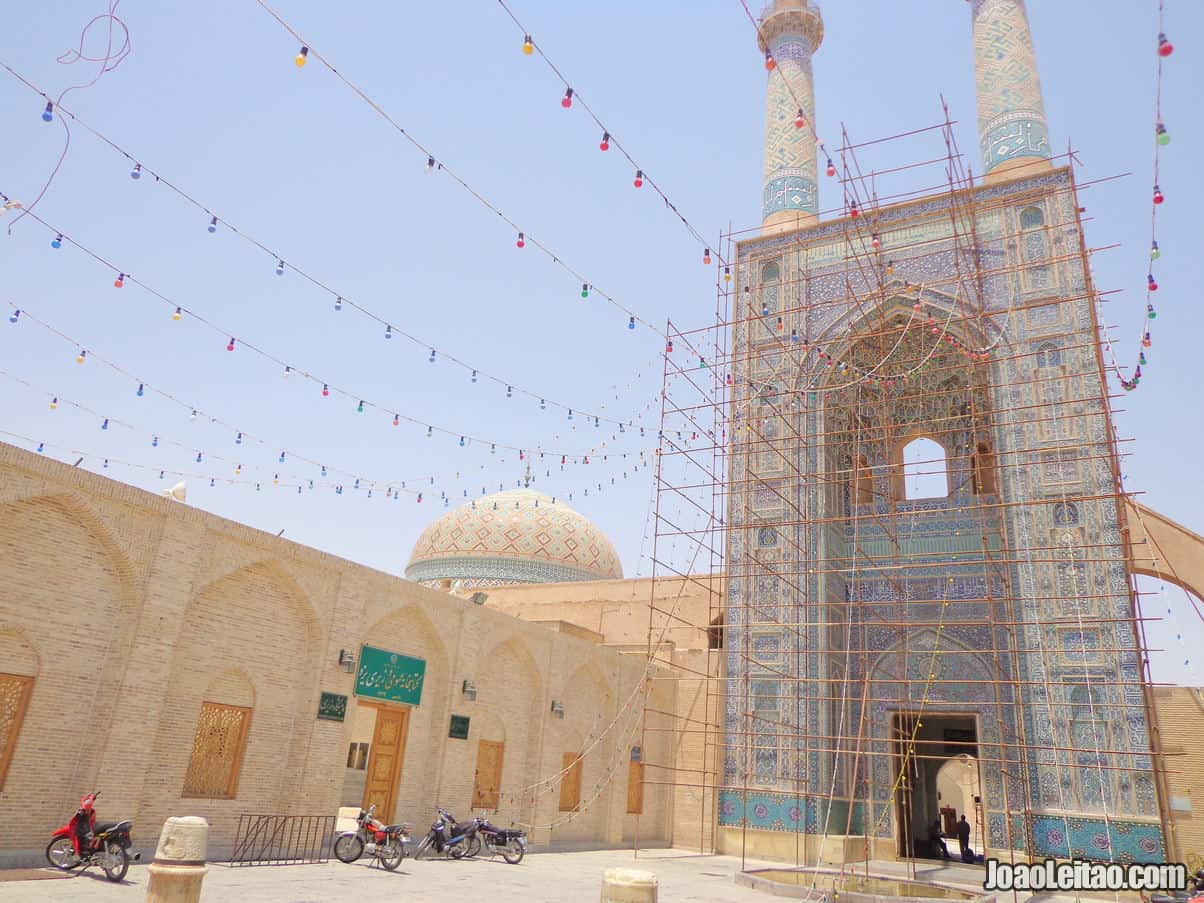
This temple near the historic center is the main mosque in Yazd. The first one was built in the 12th century but the one you see today in Yazd is another one built on the same location in 1324. Forty years later it was expanded and then once more in the 18th and the 19th century. All these changes and additions created an impressive architectural complex, marked by the Azari style. The two minarets are the highest in Iran, each on the side of a narrow façade completely covered in tile. The remains of the former mosque, from the pre-Saljuk period, are to the left of the mosque’s courtyard.
Atashkadeh Zoroastrian Fire Temple
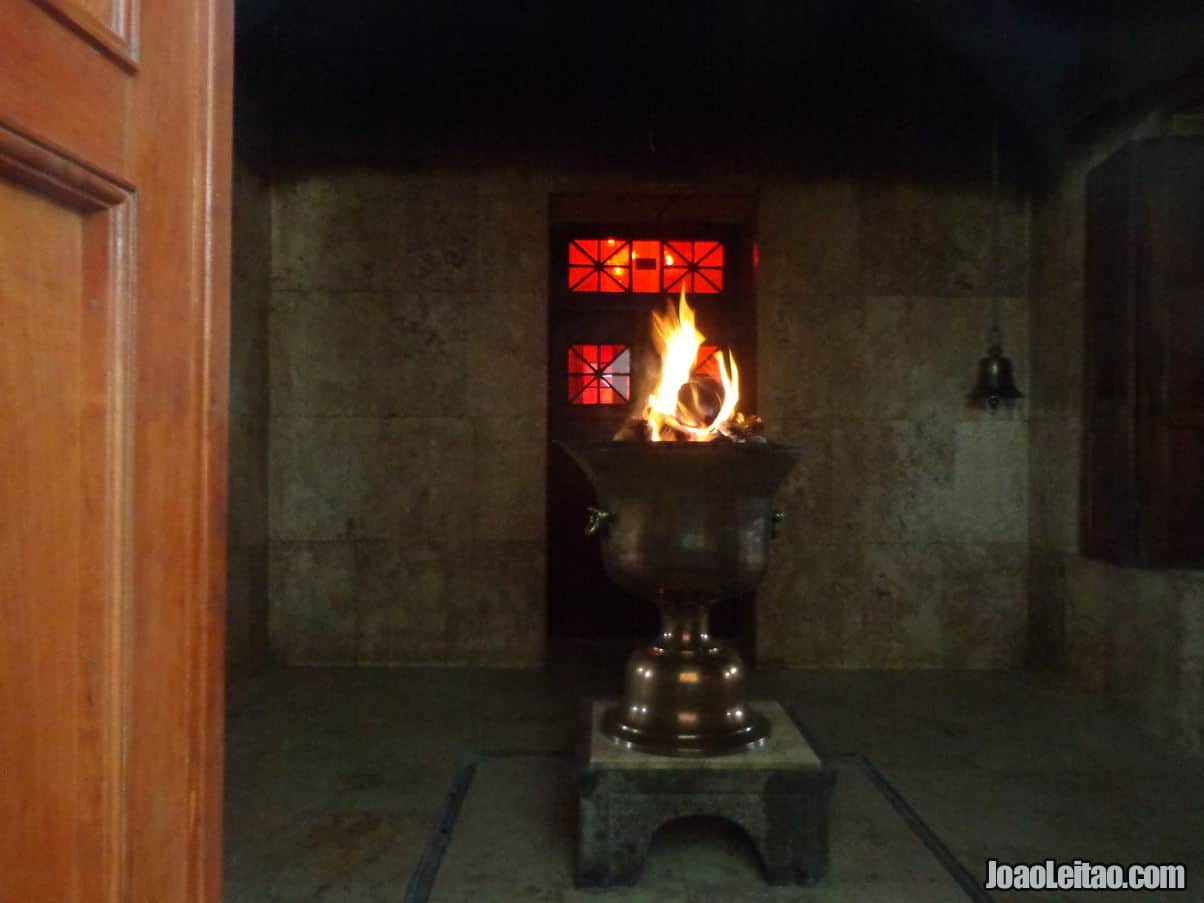
Although this Zoroastrian temple is a bit further from Yazd’s historic center, it’s still within walking distance. The fire burning inside is a living flame, burning nonstop since 470, despite being moved several times. The building, however, was built in 1934 by Jamshid Amanat with funds raised by the Association of the Parsi Zoroastrians of India. The temple has a similar style to the Atash Behram ones in India and is surrounded by a garden full of fruit trees. The flame burns behind a glass that separates it from the public, and only Zoroastrians are allowed to get near the fire. You must buy a ticket to visit the temple.
Towers of Silence
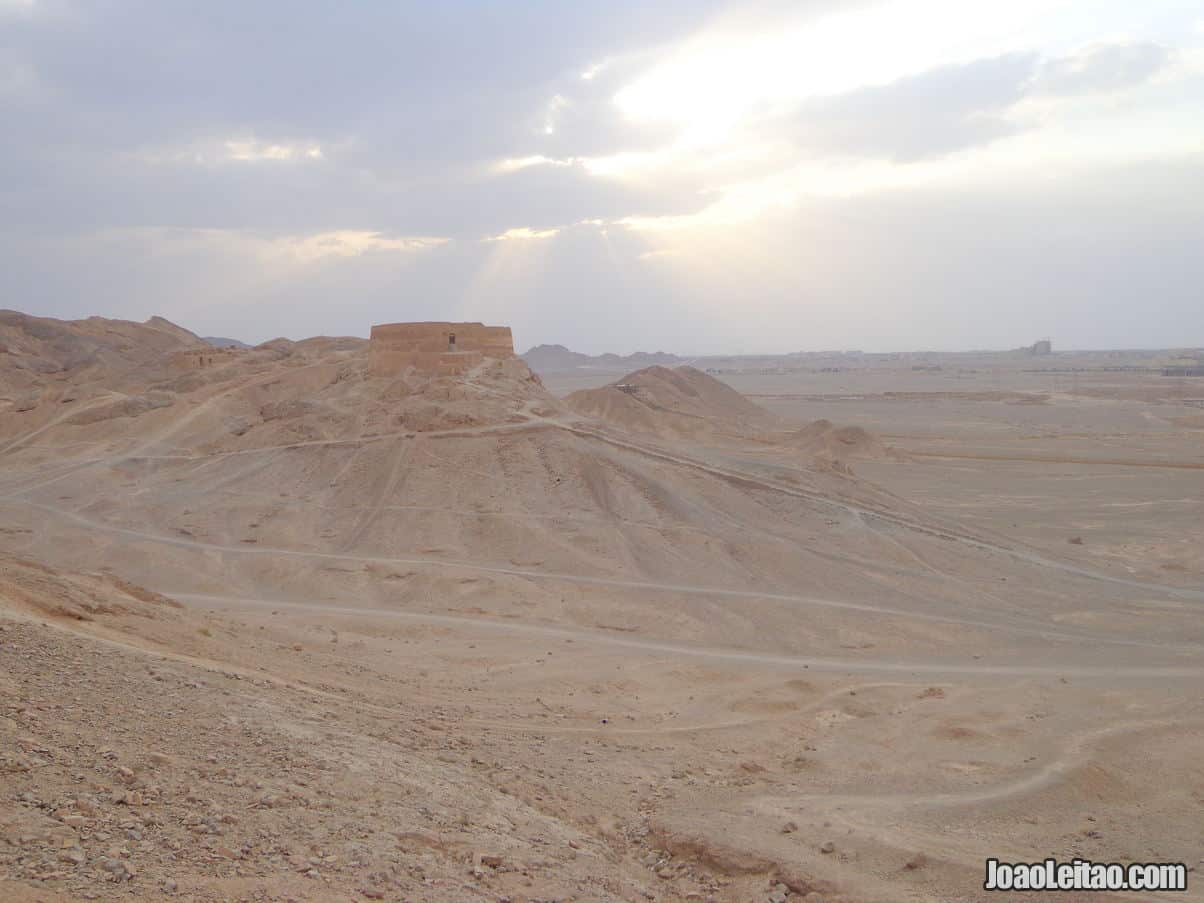
The Towers of Silence (dakhmeh), located outside Yazd, were the place where Zoroastrians placed their dead on an elevated platform, exposed to the elements, to be eaten by scavenger birds. This ritual was forbidden in 1970. According to Zoroastrianism, the moment someone dies their body is exposed to demons that contaminate it, and therefore it needs to go through a cleansing process by exposing the corpse to the natural elements. Once it was over, the bones were placed inside ossuaries, some of them still in the area. Both towers were built in the 19th century, but Zoroastrians already left corpses on this location before. The Yazd towers are the most famous, but there are similar buildings in other parts of Iran and in India.
Yazd Water Museum
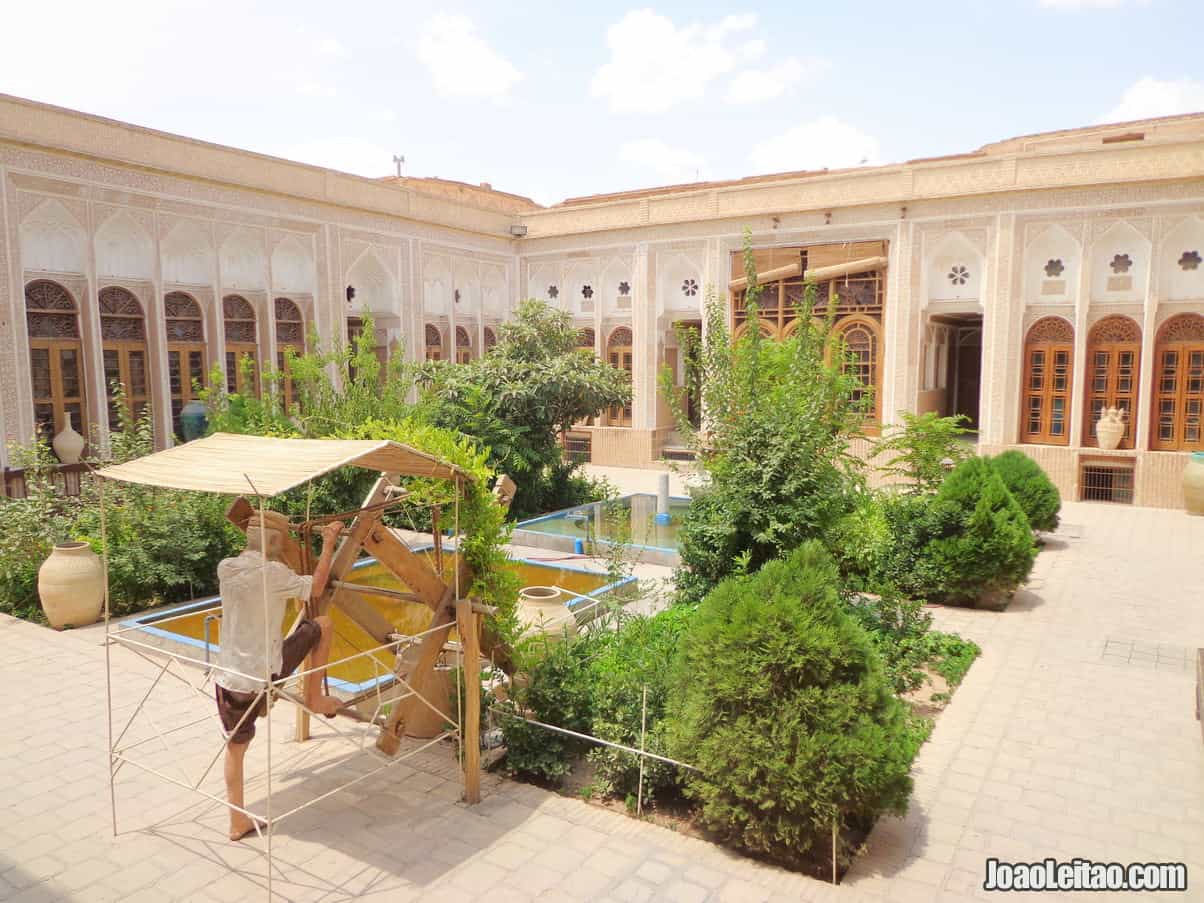
Right in the center of the city is one of Yazd’s main attractions, the Water Museum. The main topic of this museum is closely connected to the origins of Yazd, a city that was born in the desert and had to be resourceful to collect the water needed for survival and growth. In the museum, you’ll find out how an intricate system of tunnels and floodgates (called qanats) was used to collect and carry the precious liquid. There are two qanats running under the museum that people can visit. The museum also honors the workers who had the tough job to build and maintain that system at an exhibition in the basement of the building. The museum was founded in 2000 at the house of a wealthy merchant that was built in 1929.
Marker Clock Tower
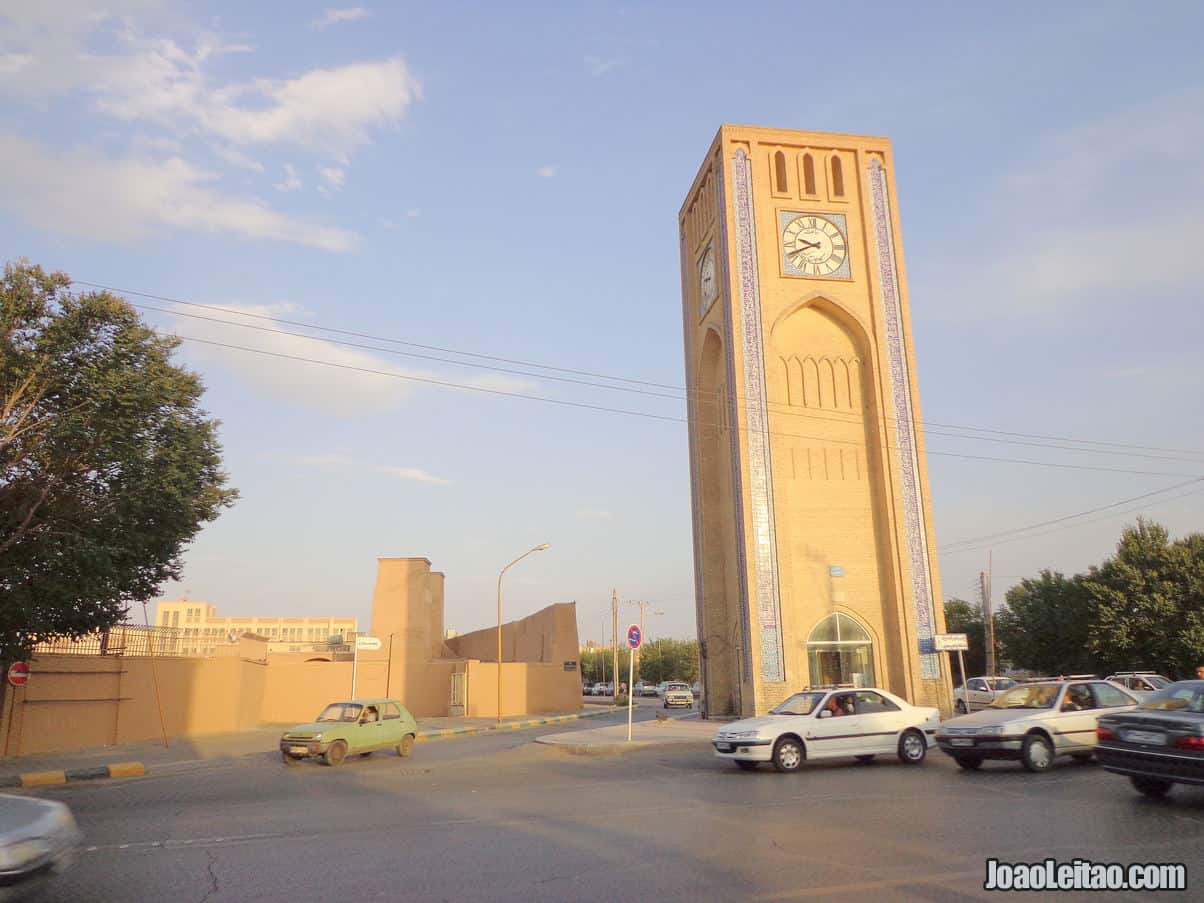
The Marker Clock Tower, Borj-e Sa’at Marker, is in the middle of a roundabout (Midaneh Sa’at Marker) on the road to Kerman, near the Markerabad school. Both the clock and the square are a tribute to Pestonji Dossabhai Marker (1871-1965), an Indian-born man who was well-known for the schools and orphanages he founded. Reza Shah, the Shah of Iran, recognized the work of this Indian born in Mumbai and granted him the medals of Neshan-e Elmi and Neshan-e Sepas, both in 1949.
Amir Chakhmakh Complex
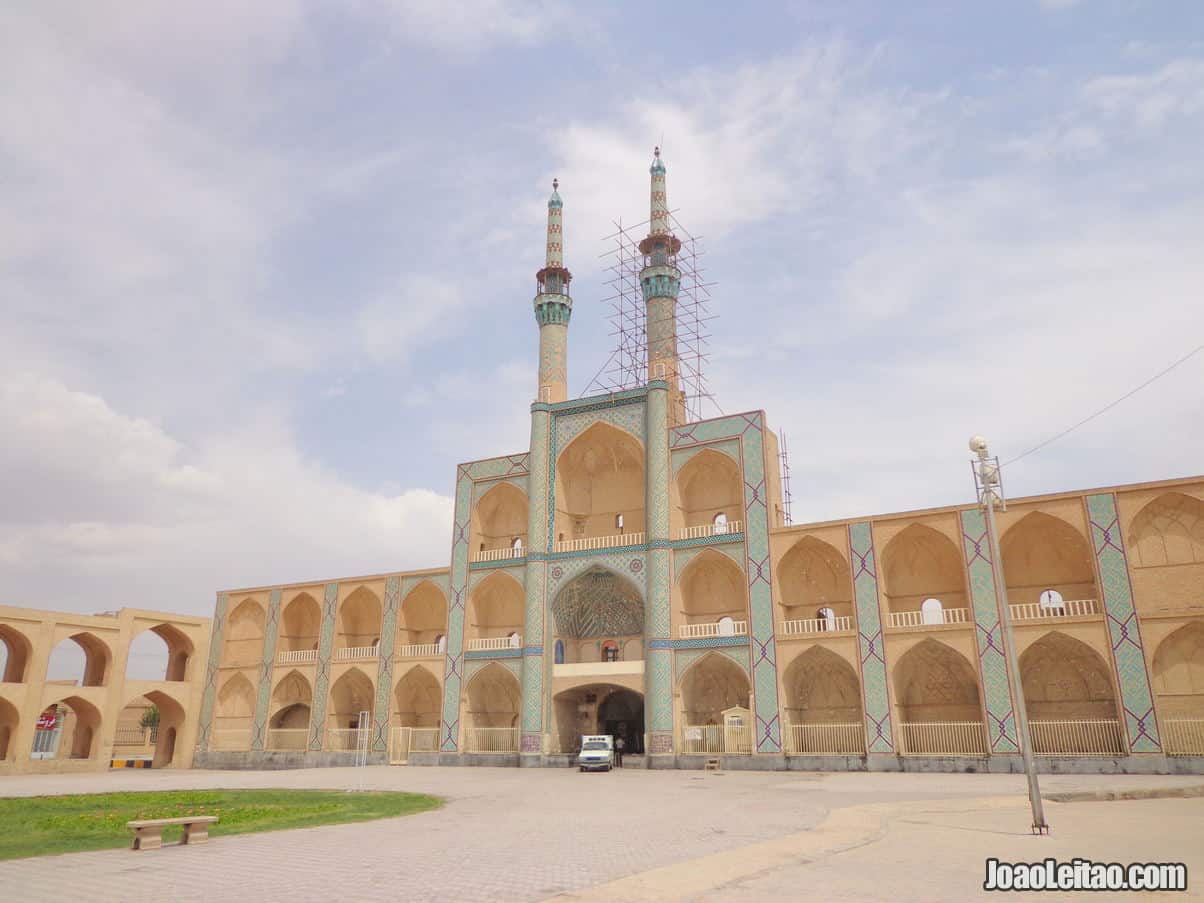
The main building of this complex and one of Yazd’s calling cards is the mosque with the same name. Other structures at this complex include public baths, a water well, a caravanserai and a tekyeh. The façade of the complex is built in three levels, with arched alcoves and balconies, and has two high minarets in the center. The square and the mosque were built in the 15th century by the Governor of Yazd alal-al-Din Amir-Chakhmaq (hence the name). A large part of the complex was in ruins in the 18th century, which led to renovation work then and once again in the 19th century. But most of what we see now is from the first half of the 20th century, from the era of Reza Shah. In the evening the façade lights up and hundreds of people flock there to socialize, creating the most amazing atmosphere. There are plenty of traditional shops and a good exchange currency place around the complex.
Khan-e Lari House
This is one of the house museums you can visit in Yazd. It’s a 150-year-old building in the historic neighborhood of Fahadan, one of the best-preserved examples of the Qajar dynasty architecture. They are actually six independent houses covering an area of 1,700 square meters. The family living here moved to a different wing of the complex in different seasons of the year: north in the winter, south where there’s a wind tower in the summer, east in the fall, and west in the spring. It’s a typical desert house with a basement designed to handle extreme temperatures, where people spent the most time. Like all mansions of the Qajar period, this one also has a hall of mirrors.
Alexander’s Prison
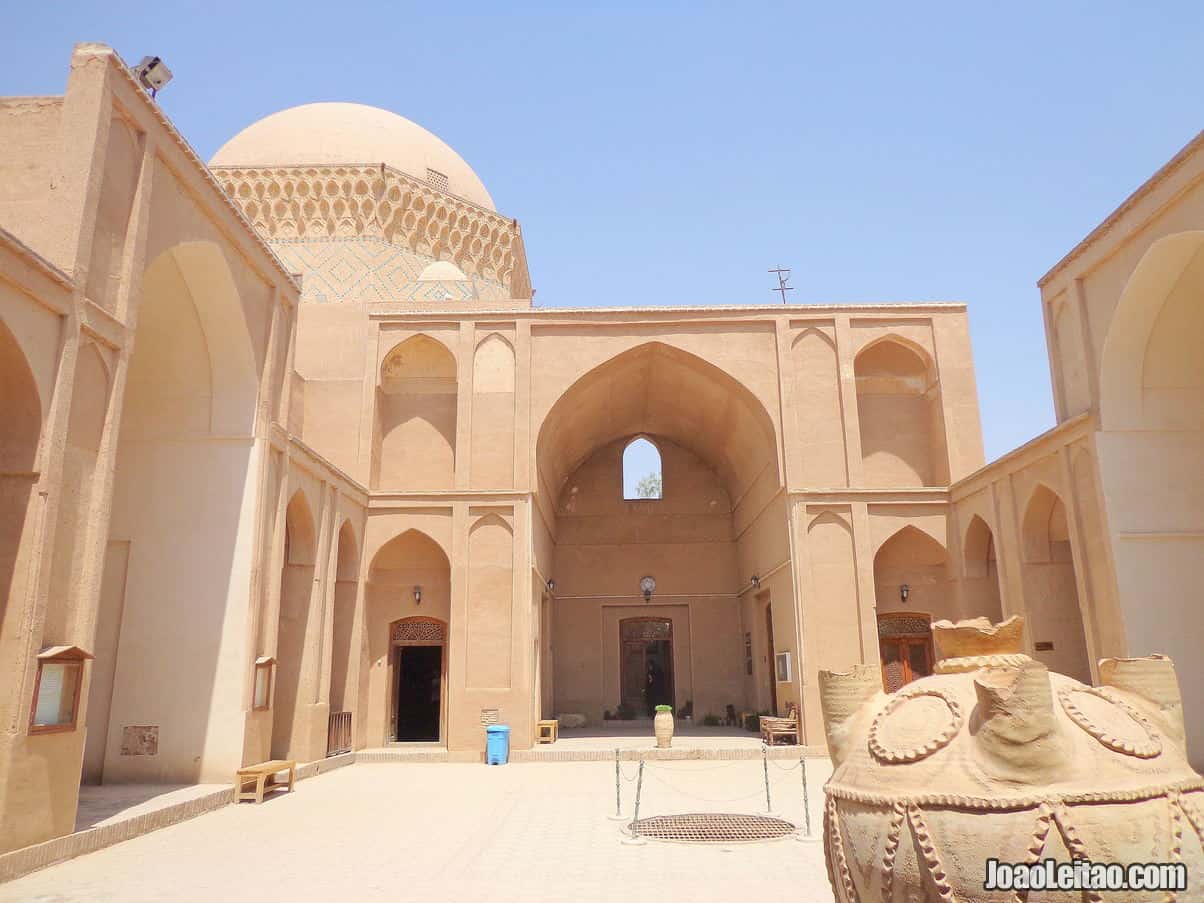
Despite what it’s called, this building was never truly a prison. It got its name from a reference in a poem by Hafez. Its most striking feature is the dome at the top of a tower, nine meters tall. The building was made in the 15th century, but no one really knows its original purpose. Some say it was a mosque and a religious school, but whether that’s true or not, what matters is that today it’s used as an ethnographical museum that includes a replica of the city and a collection of archaeological artifacts. Visitors will enjoy watching the artisans at work there.
Tomb of the 12 Imams
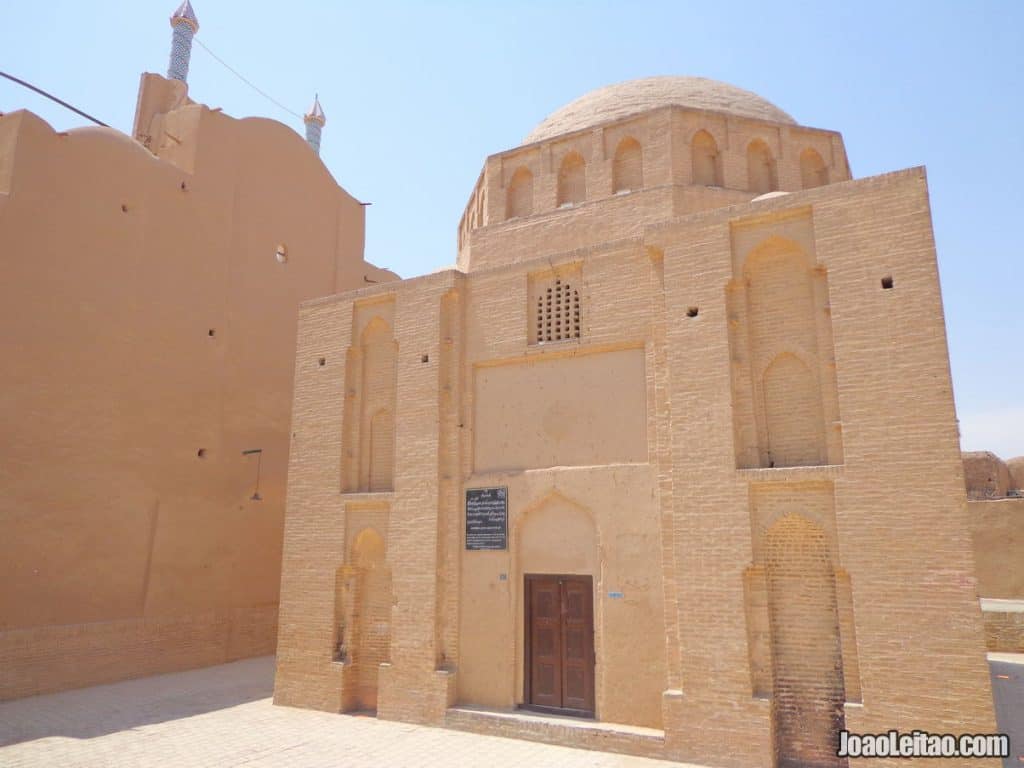
This brick building built in the 11th century during the Seljuk period is in the Zayee square in the center of Yazd, very close to Alexander’s Prison. Just as the prison that was never a prison, this “tomb” was never really a tomb. The only trace of the 12 Shiite imams is the old inscription citing his names. Its beautiful dome is one of the main features. The building has been closed to the public.
Dowlat Abad Garden
Originally built in 1747 during the Zand dynasty by Mohammad Taghi Khan, who also lived there, this historic park is a perfect example of the Persian art of garden landscaping. It’s 40,000 square meters and includes the highest wind tower of Iran (39 meters tall), which is part of the mansion in the garden. It’s one of the sites included in the Persian Garden group listed as UNESCO World Heritage Site in 2011. The gardens are supplied by a qanat (a complex system that sources water through a series of canals and tunnels).
Razvian House
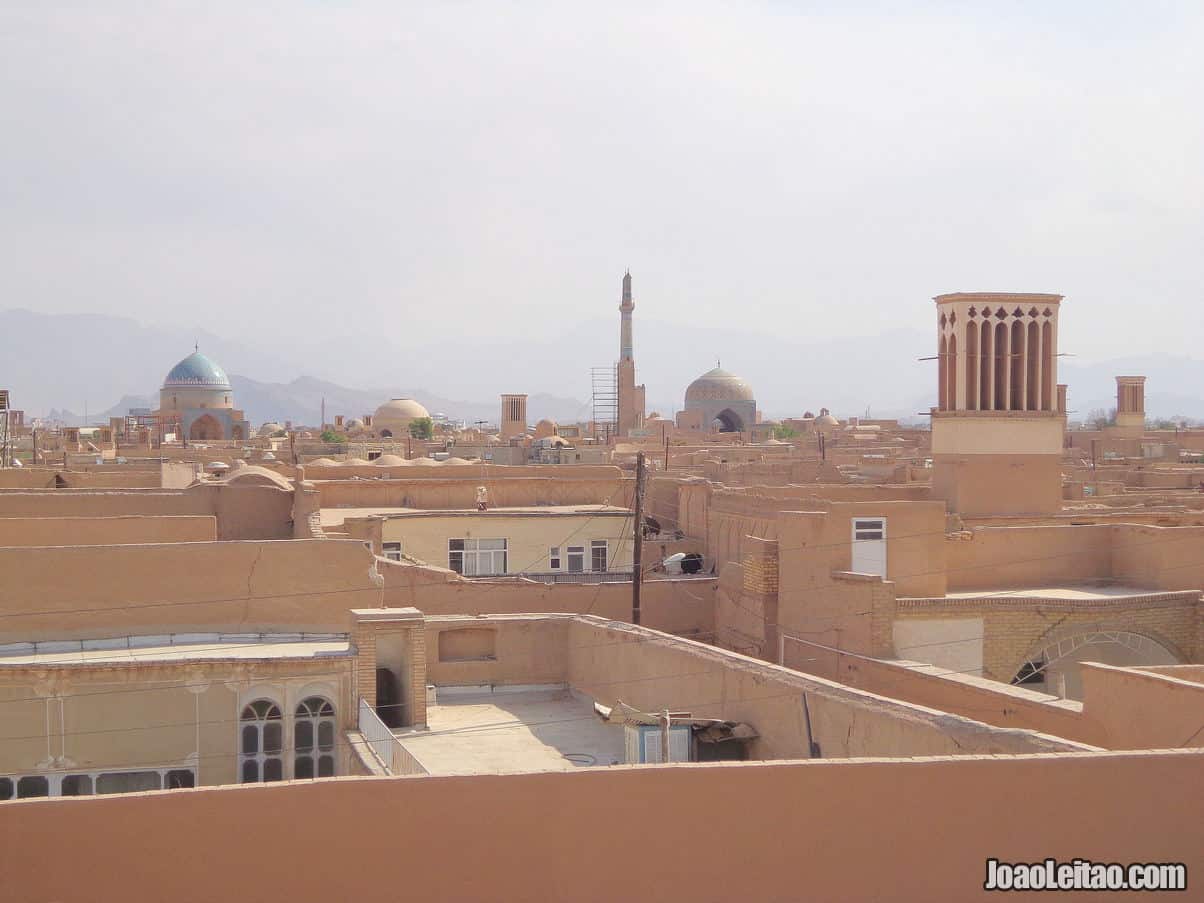
This house is in Yazd’s historic center, halfway between the Jame Mosque and Alexander’s Prison, and it’s open from 8:30 am to 8:00 pm. It’s around 250 years old, and you’ll have one of the best views of Yazd from the rooftop terrace. It’s known as one of the best examples of beautiful Iranian architecture.
Photos of Yazd
Transportation from Yazd to Isfahan
Bus from Yazd to Isfahan
- VIP Bus Timetable: 00:30 am, 6 am, 8:30 am, 10:45 am, 1 pm, 3 pm, 6 pm, 7:30 pm.
- CLASSIC Bus Timetable: 4:30 pm.
- Departure: Yazd Bus Terminal
- Price VIP: 260,000 rials
- Price VIP: 210,000 rials
- Duration: 5-6 hours
- Distance: 312 kilometers
Train from Yazd to Isfahan
- Timetable: Every two days at 4:47 am
- Departure: Yazd Railway Station
- Price: 232,500 rials
- Duration: 4-5 hours
- Distance: 268 kilometers
Isfahan City Guide
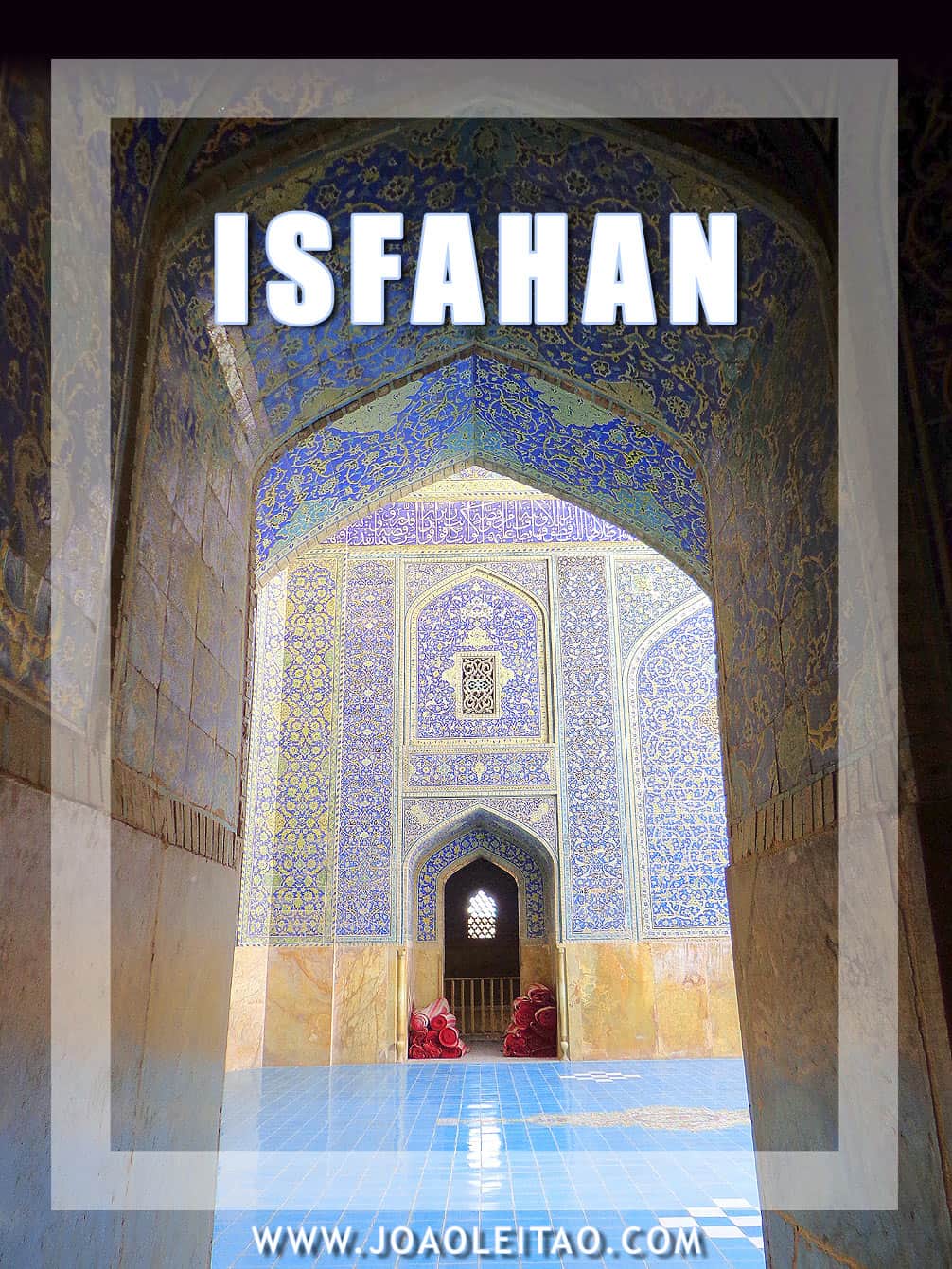
Isfahan, also spelled Esfahan, may not be the capital of Iran, but it’s typically considered the most interesting city, with a vast historical, cultural, and architectural heritage. It’s the home of two UNESCO World Heritage Sites, the Naqsh-e Jahan Square, which is the heart of the city since the 17th century, and Masjed-e Jame mosque, the former center of Isfahan.
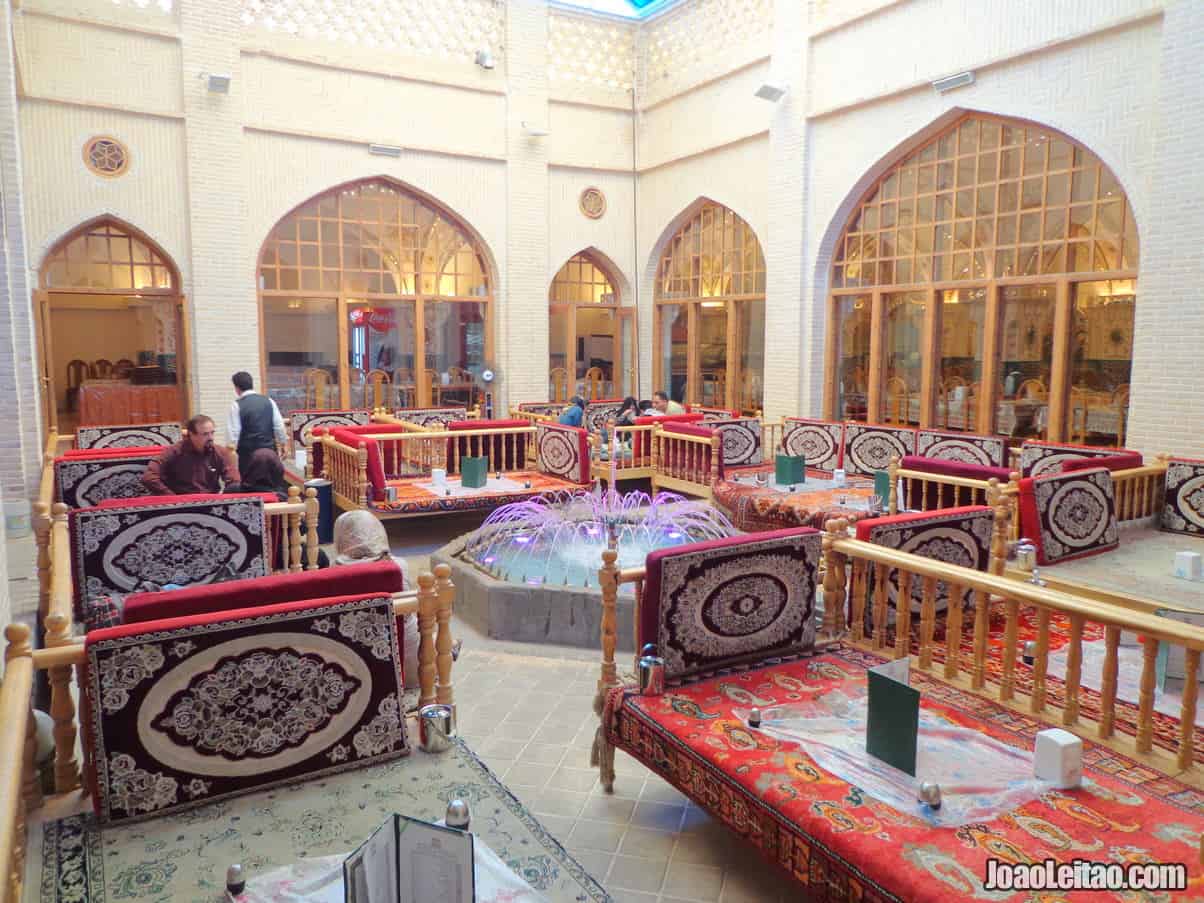
In addition to the square and the fabulous buildings that line it, you can’t miss visiting the palaces that stood the test of time, such as Chehel Sotoun and Hasht Behesht, nor the interesting bridges over the Zayandeh River, where locals socialize.
Don’t forget to visit the parks and gardens, especially the unmissable Flower Garden. The overall atmosphere is different from what a traveler might feel in, let’s say, Yazd. In
Day 1 in Isfahan
Naqsh-e Jahan Square, Qeysariyeh Covered Bazaar, Abbasi Mosque, Sheikh Lotfollah Mosque, Aali Qapu Palace, Chehel Sotoun Palace, Hasht Behesht Palace, historical bridges Sio-Se Pol and Khajou.
Day 2 in Isfahan
Isfahan’s Friday Mosque, Vank Cathedral, Armenian, Monar Jonban (Shaking Minarets), Zoroastrian Fire Temple, Ancient Shahrestan Bridge.
What to visit in Isfahan
Naqsh-e Jahan Square
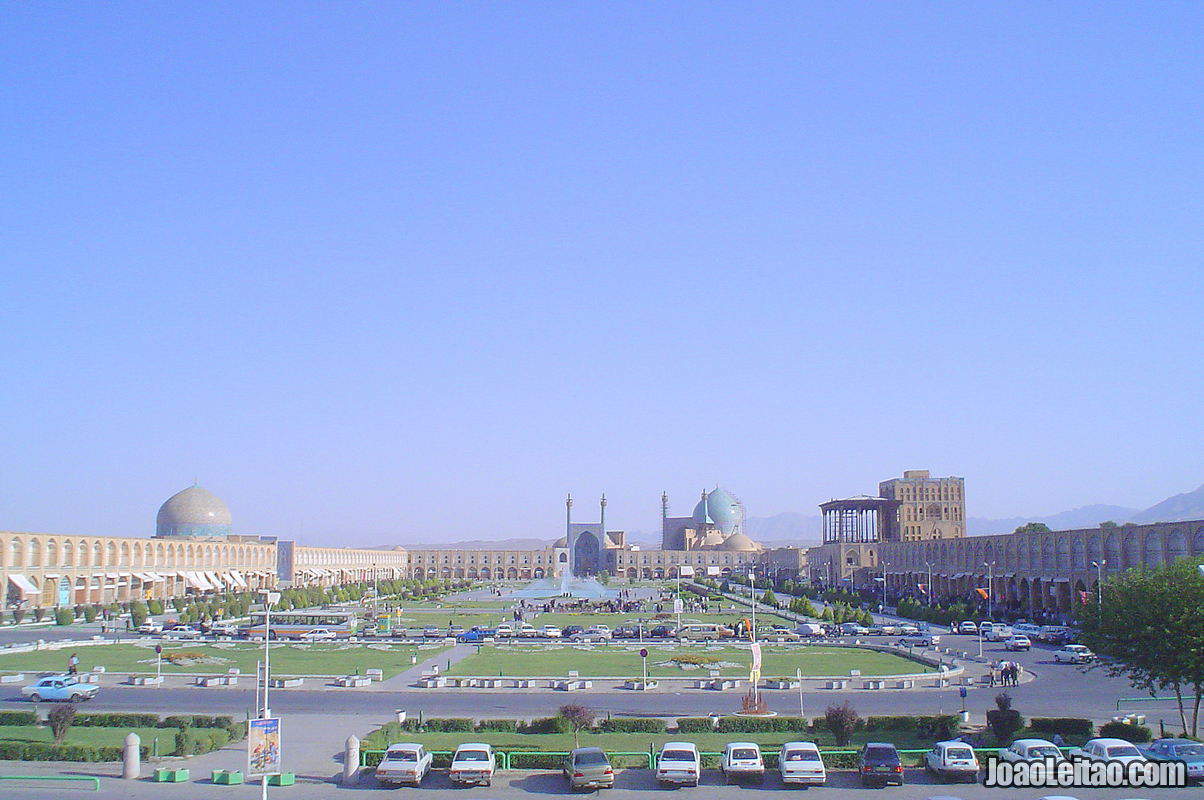
This square was built between 1598 and 1629 under orders of Shah Abbas I, the ruler who made Isfahan the capital city of Persia and turned this square into the new city center. The square is still today the heart of Isfahan, the place where all roads lead to and that everyone wants to see. It’s a UNESCO World Heritage Site and includes several massive buildings: the Imam mosque, the Sheikh Loft Allah mosque, the Ali Qapu Palace, the Qeysarieh Gate, and, not so much a building but worth mentioning, the Grand Bazaar. The square is 512 meters in length and 153 meters in width and maintains the same original design by architect Shaykh‐i Bahāʾī that it had by the time it was finished in the 17th century. Only the fountains were added later.
Imam Mosque
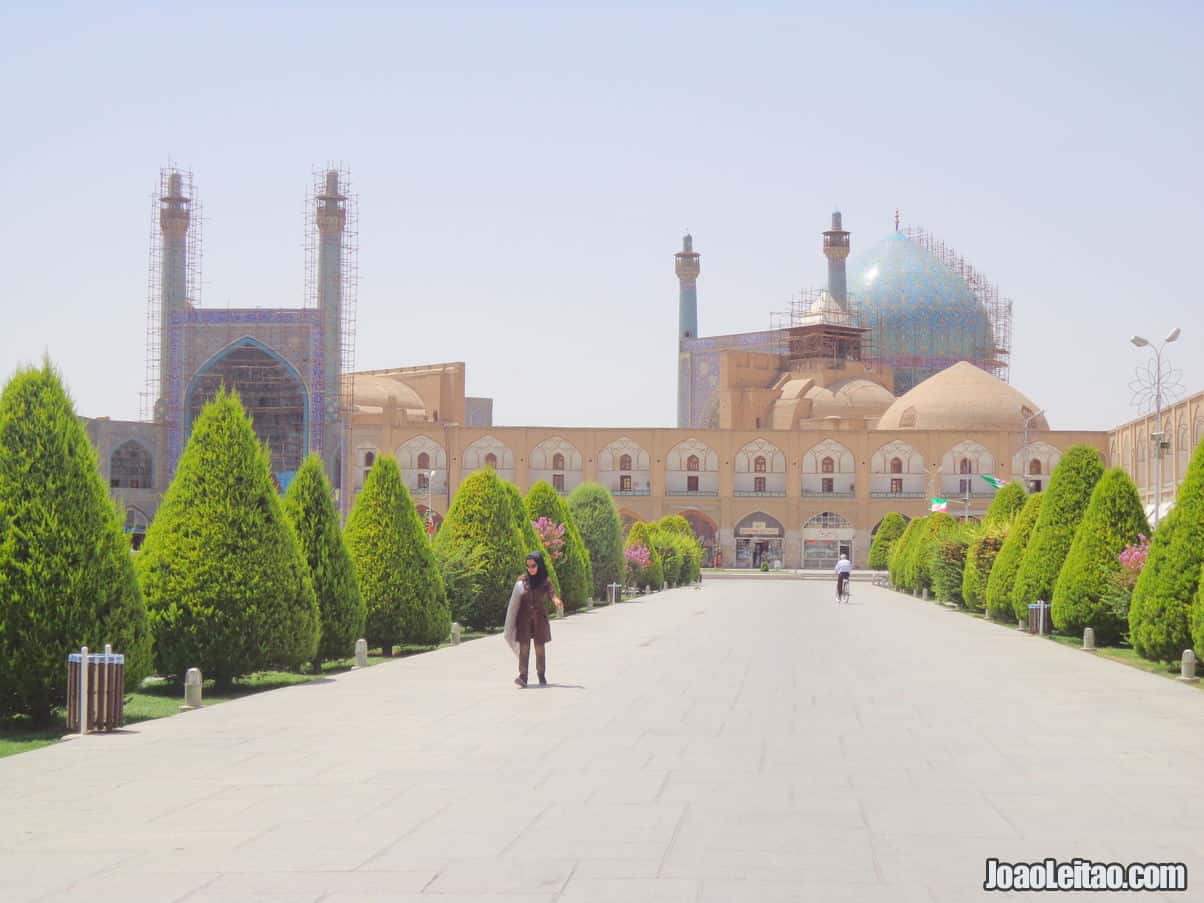
This mosque was built by Shah Abbas I at the Naqsh-e Jahan square at the same time the monarch moved the capital to Isfahan in 1596 and made the Chaharbagh avenue and the square. This mosque would also replace the Masjed-e Jame mosque as the main temple in the city. Construction started in 1612 and ended in 1629, becoming the largest building made during the wealthy kingdom of Abbas I. One of the finest examples of the lavishness of Persian architecture, it was designed by Shaykh‐i Bahāʾī and is 100 meters in length with 42-meters high minarets. Before the Revolution of 1979, it was called Masjid-i Shah.
Pol-e Shahrestan Bridge
The bridges over the Zayandeh River in Isfahan are one of the most interesting things visitors enjoy seeing and Pol-e Shahrestan is the oldest of all. Most of its 11 arches and a part of its structure were built in the 11th century, but the pillars are the same that supported a previously existing bridge. A few interesting features are the secondary canals designed to mitigate the effects of erosion caused by the river and the protections around the pillars to avoid objects brought by the current to collide against them. This bridge connects the Shahrestan area to the south shore, with noticeable Sassanid and Roman influences.
Si-o-Seh Pol Bridge
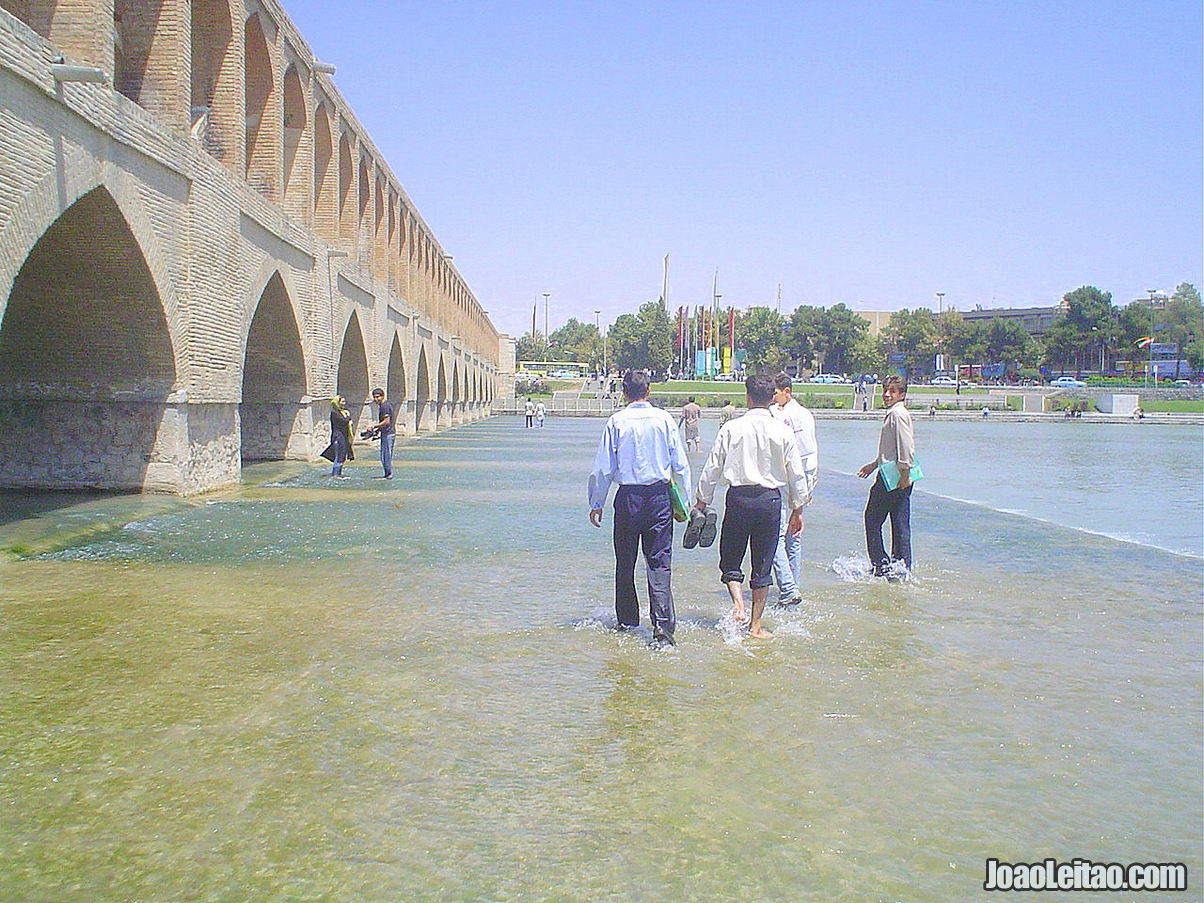
It’s not the oldest bridge in Isfahan, but it’s the most spectacular. Construction began in 1599 and ended in 1602, under the supervision of chancellor Allahverdi Khan Undiladze to whom the Shah Abbas had commissioned the bridge. The bridge has two levels, is 298 meters in length and 14 meters in width, and has 33 arches, hence the name Si-o-She (thirty-three in Farsi). Besides its functional purpose, the bridge is also a place of social gathering for locals, who come here to talk, date, and watch the sunset.
Vank Cathedral
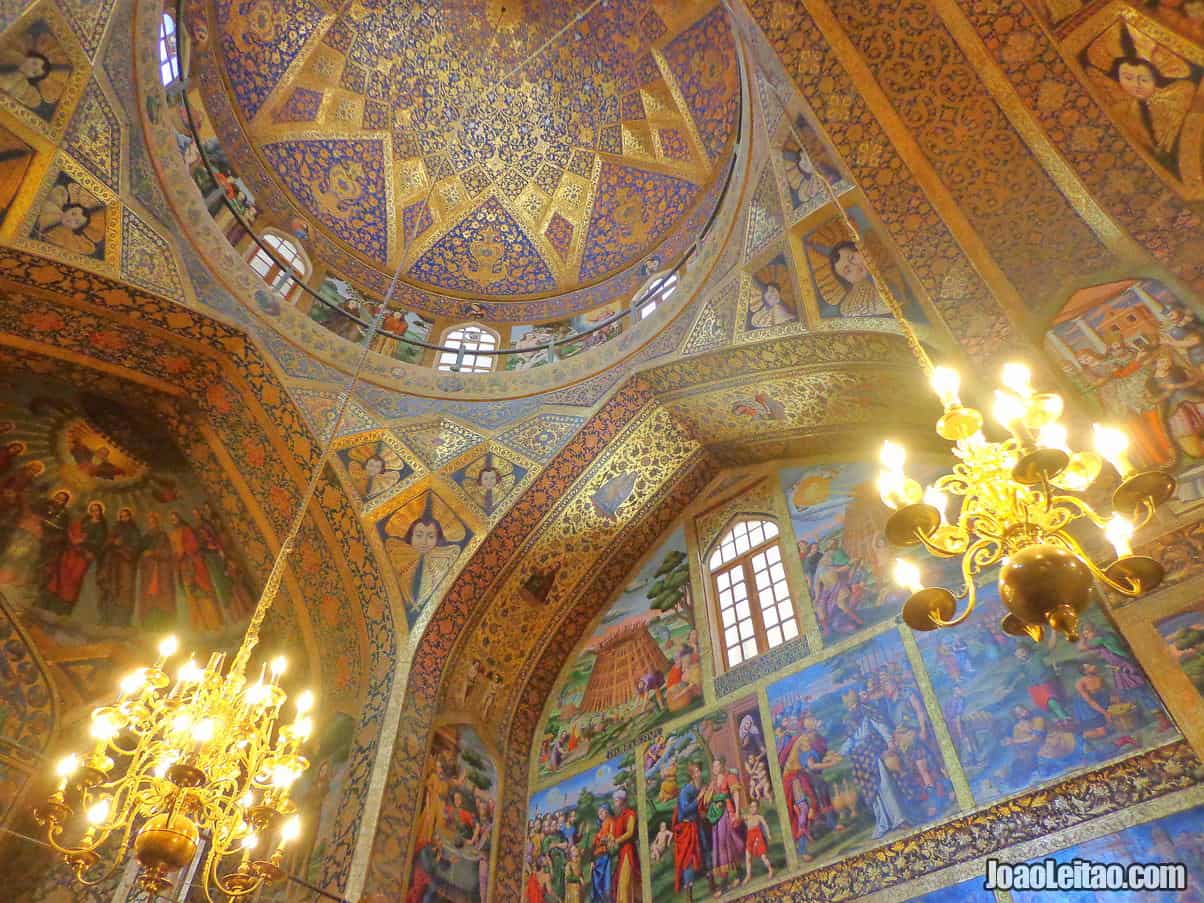
This Armenian cathedral is also known as the Holy Savior Cathedral or Church of the Saintly Sisters. Construction began in 1606 when the first Armenian refugees escaping the Ottoman War (1603-1618) asked Shah Abbas I for protection and established themselves in Isfahan. In 1655 and again in 1664 it was renovated and changed, under the guidance of Archbishop David. It’s a mix of the Safavid style, which was the trend in the 17th century, with Islamic influences, quite obvious in the cathedral’s dome that makes it resemble a mosque. The interiors are decorated with frescoes, including the must-see depiction in the central dome of the creation of the world and the ousting of Man from Eden. Here there’s a library with a precious collection of about 700 volumes of manuscripts. The museum was created in 1878 and opened to the public in 1905.
Zoroastrian of Atashgah Temple
The Temple of Fire of Atashgah dates back to the Sassanid period (224-651) and is located about 8 km west of Isfahan on the top of a hill where the Marbin fortress was built. The walls were made of baked brick, and at the site, you can still see the remains of the citadel, which had about 20 buildings. Several structures were identified as places to house sacred fires while others served practical purposes such as the storage of goods. There are also the ruins of a 20-meter tall tower, Burj-i Gurban, used for surveillance of the area and equipped with a pyre that would be lit to alert people in case of an attack.
Qapu Palace
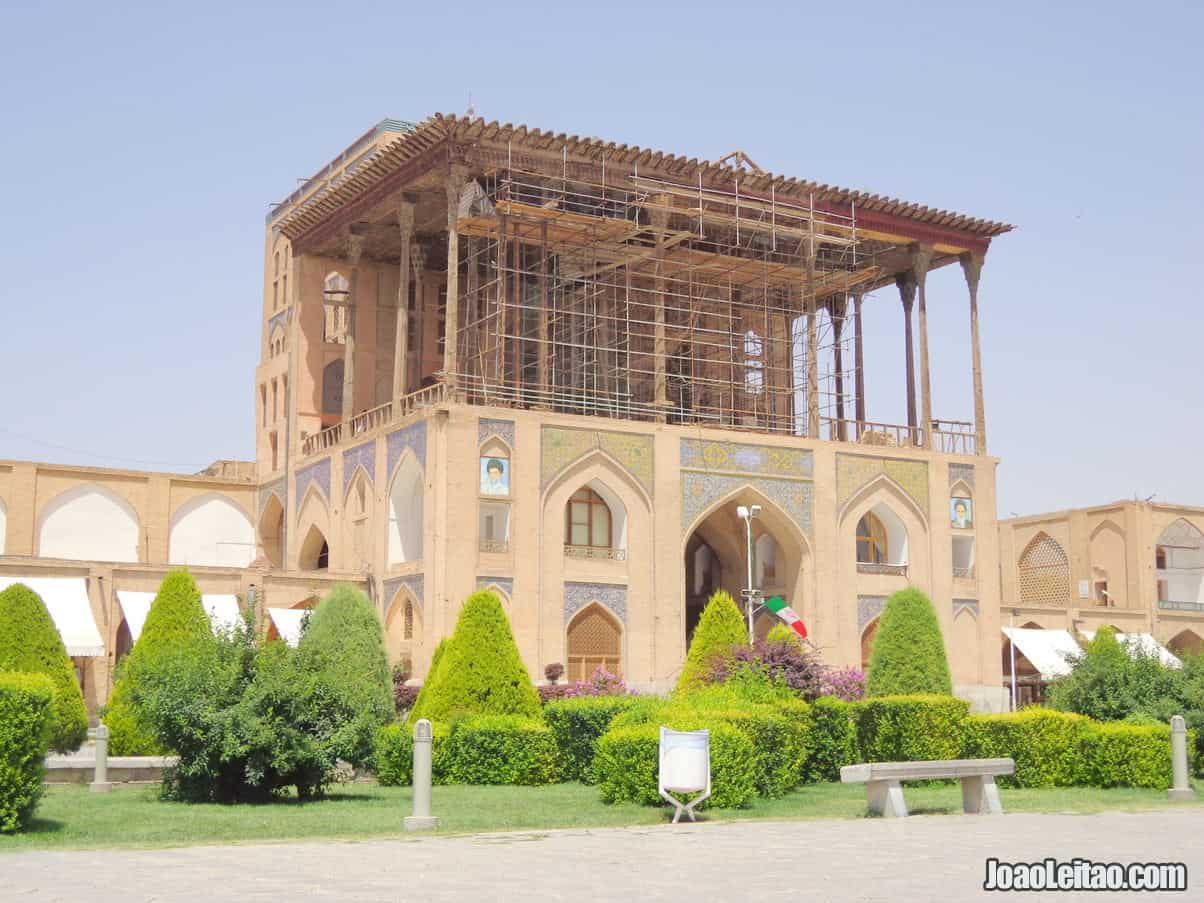
There isn’t a set date for when Qapu Palace’s construction began, but it was probably around 1595. It was both the official residence of Shah Abbas I and where he welcomed important public figures that came to see him. It’s right across the Sheikh Lotfollah mosque, on the western side of the famous Maydan-i Imam square. The palace has six floors and is 38 meters high, with a distinguishing terrace supported by 18 thin columns. The throne room used to be on the second floor but is now empty. A lot of the frescoes and mosaics decorating the palace rooms were destroyed during the Qajar period, and further damaged after the Revolution of 1979, but visitors can still see some of them. The must-see music hall with a stucco ceiling is on the top floor.
Sheikh Loft Allah Mosque
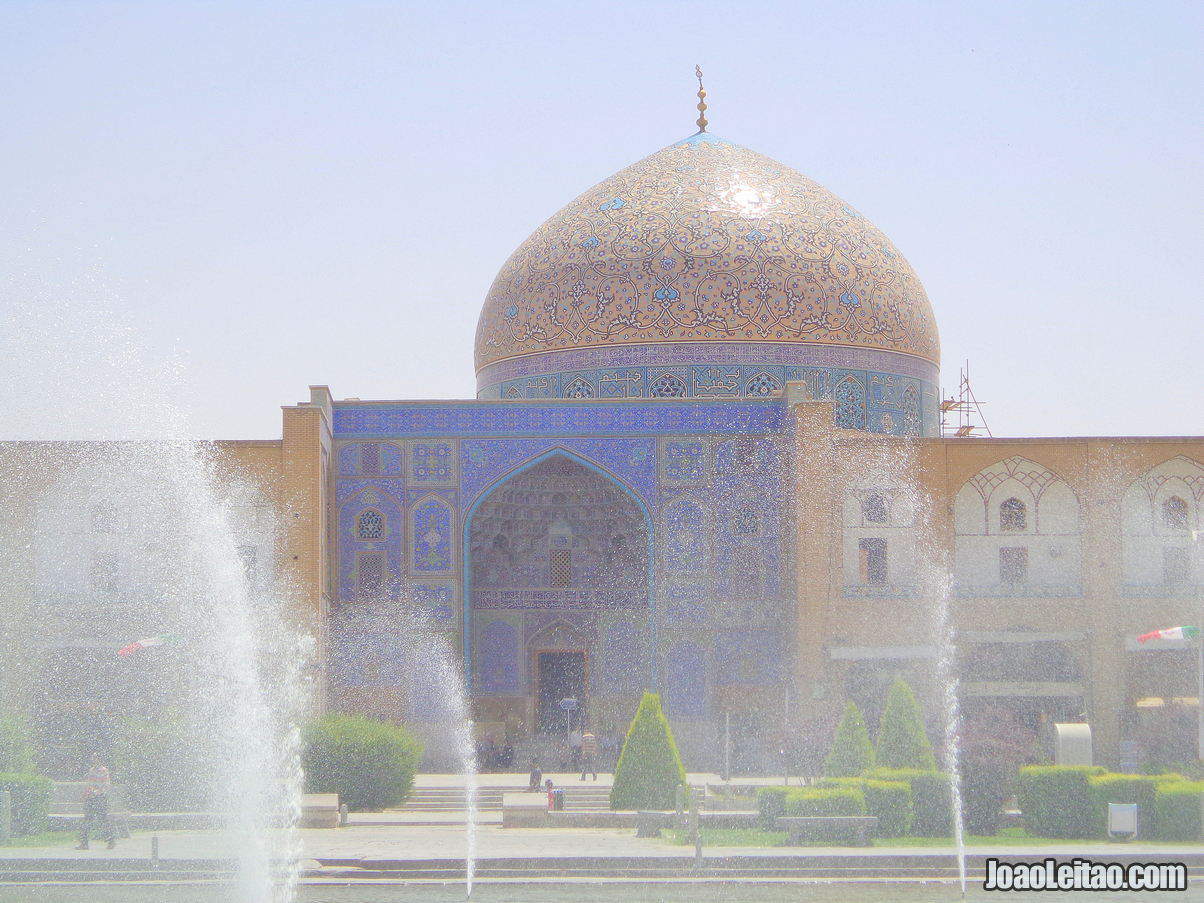
This fabulous mosque is at the Maydan-i Imam square, near the Qapu Palace, and was also built by orders of Shah Abbas I. The ruler also asked for a tunnel that connected his palace to the mosque, so that his wives could go to the temple without being seen, which led to the mosque being known as the “Women Mosque”. Construction began in 1603 and ended in 1619, led by architect Shaykh Bahai. In 1920, Reza Shah Pahlevi ordered the mosque to go under renovation work. One of the distinguishing features of this mosque is the absence of minarets because the mosque was meant just for the Shah and his family. It’s clearly a mosque meant for royals, with an extravagant décor that stands out in the high quality of its mosaics and the handwriting of the Koran verses.
Hakim Mosque
This mosque is next to the Grand Bazaar, away from the crowds of tourists who visit the Maydan-i Imam square. It was built in 1656 by Shah Abbas II where there once was another mosque called Jorjir. That mosque had a very tall minaret, but only its entranceway remains today. It was commissioned by Hakim Davoud, a doctor of the Shah, who fell in disgrace and was forced to escape to India. There he became wealthy and used part of his fortune to finance this temple. Despite some cosmetic restoration work, the mosque keeps the original design, with distinguishing features like the beautiful tiles covering it, the striking handwritten Koran inscriptions, the minbar, and the mihrab.
Pol-e Khaju Bridge
This is one of the most important historic bridges over the Zayandeh River in Isfahan. It was built between 1642 and 1667, when Shah Abbas II ruled, at the same place where there was an older bridge. It’s a place for social gathering especially in the evenings when street musicians sing under the arches making use of the place’s acoustics. There used to be tea houses in both ends of the bridge, but they’re long gone. The structure built in the middle of the bridge was used by the Shah to enjoy the view and the magnificent sunset in particular, and you’ll still notice the benches where he used to sit. The top level of the bridge is supported by 20 arches, lined by niches that are used for sightseeing and resting. The bridge is 110 meters in length and 20 meters in width.
Tombs of Nizam al-Mulk and Malek Shah
These tombs and others are behind the green gate that separates the public space from a small courtyard with an old cemetery. It’s in a part of the city known as Ahmad Abad. Nizam al-Mulk was a powerful Vizier who served more than one Sultan of the Seljuq Dynasty. The tomb of Malek Shah, who ruled from 1072 to 1092, is next to the tomb of Nizam al-Mulk. To his side, lies his wife, who might have been involved in the death of the Vizier. In addition to some changes on the grounds, the tombstones might have been moved. They date back to the Safavid era, and although the tombstones don’t have any inscriptions, there are no doubts that these are the tombs of those historical figures.
Madreseye Shah
This academic complex was built between the end of the 17th century and the beginning of the 18th century by Sultan Hossein, one of the last monarchs of the Safavid Dynasty. The Sultan’s mother had a caravansarai built next to the academy to fund the school. You access the Madreseye Shah from a grand entranceway at the Shah Abbas avenue, that leads into an octagonal lobby covered in yellow brick, a conventional technique used to increase brightness. Inside, you’ll see a courtyard with a lake and a garden, surrounded by the wings where the students’ quarters were. The complex also included a mosque, a market, and baths.
Ashraf Palace
Ashraf Palace, located between the Ostandari and Sepah streets, is one of the palaces built during the Safavid dynasty. Construction began during the kingdom of Shah Abbas II and ended at the time his successor ruled, Shah Soleiman. It was once the official residence of the Shah and his family and is currently the mess hall for the army officers, therefore not open to visitors.
Hasht Behesht Palace
The Palace of Eight Heavens (Hasht Behesht) was built in 1669 during the kingdom of Safavid Shah Suleiman, in the historic center of Isfahan. It’s the last of the 40 mansions of the Safavid era in the city. It’s a relatively small building with two floors but exquisitely decorated. Most of its splendor faded over time, damaged by the weather and in desperate need of a proper renovation. However, you’ll still be able to see the beautiful frescoes on the ceiling and the dome of the terrace supported by tall columns. It’s encircled by a peaceful recently built park, Raja’i, where the men of Isfahan gather to share news and talk about current events.
Chehel Sotoun Palace
The name of this palace means “The Forty Columns,” a reference to the optical illusion created by the reflection of the existing 20 columns on the garden’s lake. The palace was used for ceremonies, to welcome important figures, and to host high-level events. It was built in the mid-17th century and rebuilt in 1706 after a damaging fire. You enter the palace from a beautiful garden, which is a perfect example of the Persian art of landscape architecture, and reach the main hall after crossing an elegant terrace. The walls and the ceilings are exquisitely painted with scenes from the most important moments of Iran’s history, including the reception of an Uzbek King in 1646 and the battle of Shaldiram against the Ottomans.
Meudan Kohne Square
This square was once the center of Isfahan. In the 11th century, when the city was the capital of Persia during the Seljuk dynasty, the Meudan Kohne square, also known as Atiq or simply Old Square, was bustling with life. All major business and important social events happened here, until Shah Abbas I built the Naqsh-e Jahan square. Even then it still kept part of its former status.
Chaharbagh Boulevard
This historical avenue was built by Shah Abbas I when he decided to make Isfahan the capital city. Alongside Naqsh-e Jahan square, it’s one of the major public constructions that changed Isfahan, both under the guidance of leading architect Shaykh Bahai. The boulevard was finished in 1600 and was lined by all the important buildings at that time: palaces, embassies, residences of important figures, and, of course, the Naqsh-e Jahan square. At that time the avenue was different, of course, and the lower part was almost exclusively used by the royal family and their closest friends. But on Wednesdays, the avenue was used by women only, who could go on their daily routines without covering their heads. The avenue is 6 km long and connects the north of the city to the southern neighborhoods.
Masjed-e Jame
This is the Grand Mosque of Isfahan and one of the symbols of the city, which became part of the UNESCO World Heritage Site. It’s also known as the Friday Mosque because, as it happens in all Iranian cities, on the holy day (Friday) the community gathers in only one mosque, usually the biggest. In Isfahan, that’s the Masjed-e Jame. The mosque you’ll see today is the result of continuous evolution since the mid-8th century, and its oldest parts are the north and south domes from the 11th century. Not only is this an active place of worship, but it’s also one of the finest examples of Persian architecture, practically a museum. Here the simplified beauty of the geometric style Seljuk meets the pure fantasy of the Safavid style. The mosque is 20,000 square meters, and it’s the largest mosque in Iran.


